Preface
Note: Several of my pictures are vertical (portrait mode), including many screenshots. For this reason, I have decided not to use Flight-Report’s gallery feature, as it crops pictures if they are in portrait orientation.
This report continues from my previous flight TG404 on Thai Airways from Singapore to Bangkok.
Flight routing
- 1
- 2TG325, Bangkok (Suvarnabhumi) to Bengaluru, 3 June 2022, HS-THJ
- 3
Spending time at suvarnabhumi: Miracle Business Class Lounge, Concourse F
Everyone got off HS-THF, which had taken us from Singapore.
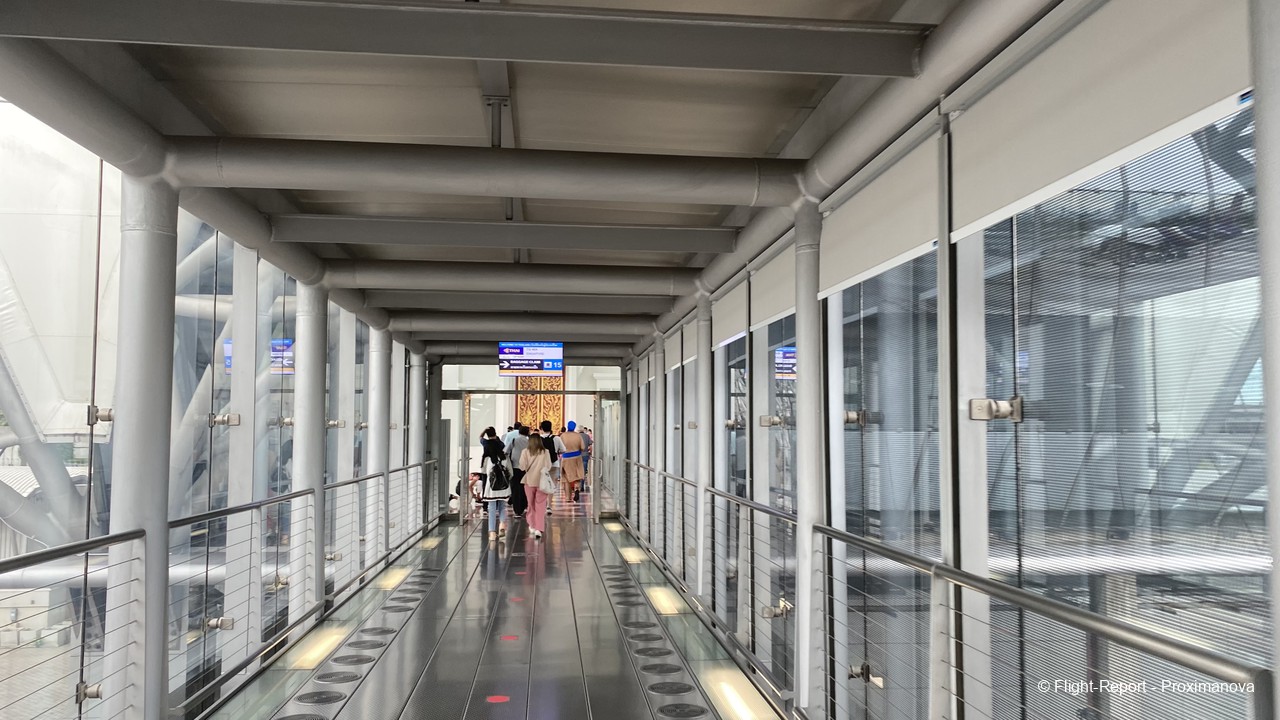
Welcome to Thailand… for six hours.
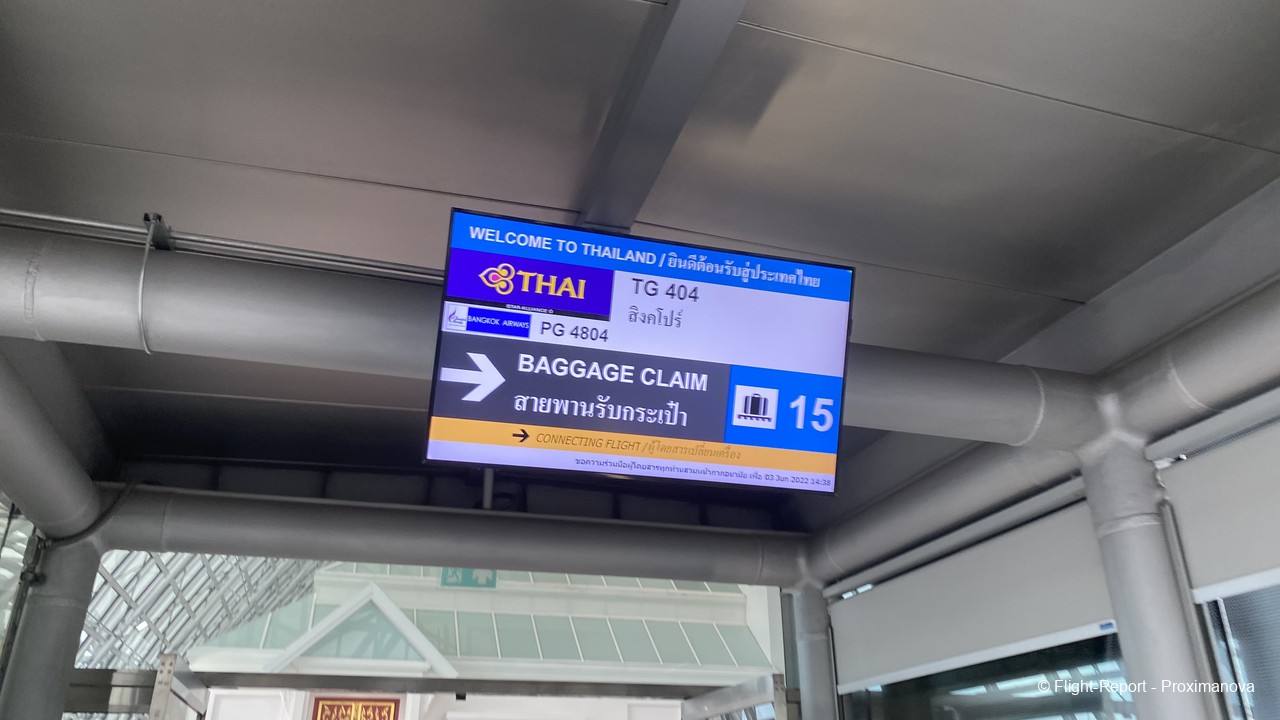
Traditional Thai architectures lined the arrivals section.
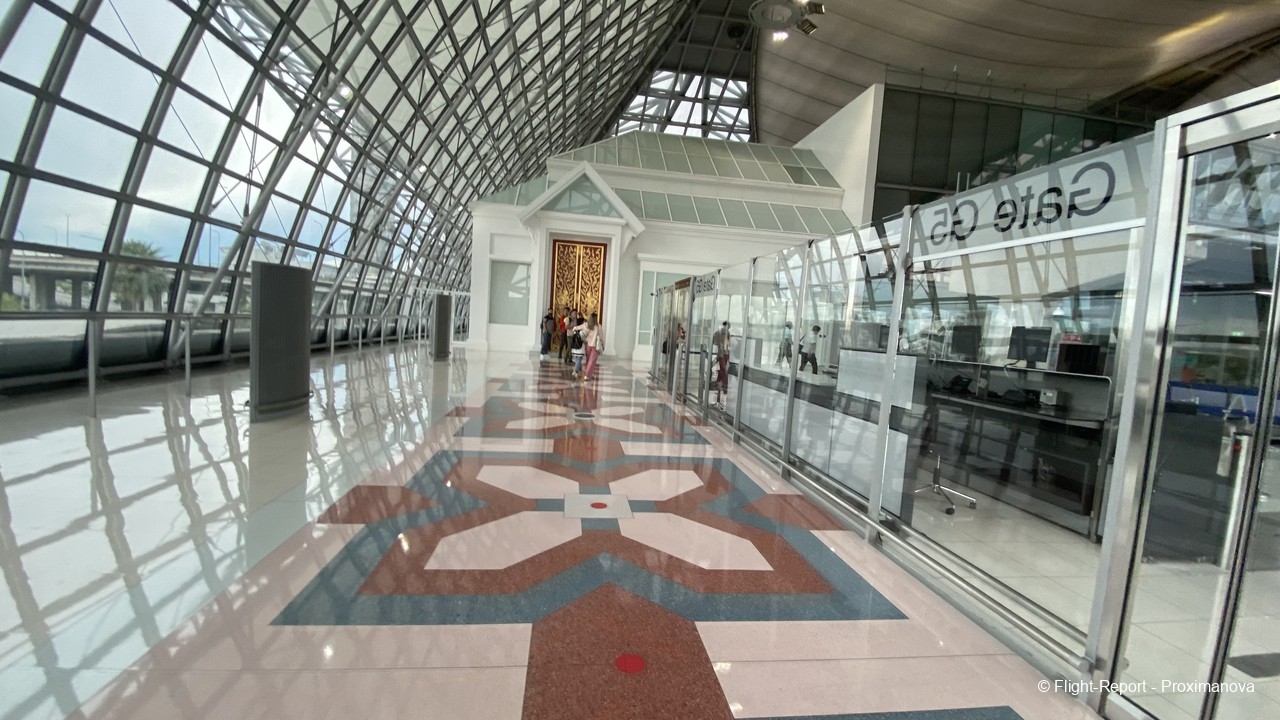
Buggy carts were positioned to take premium passengers to their lounges.
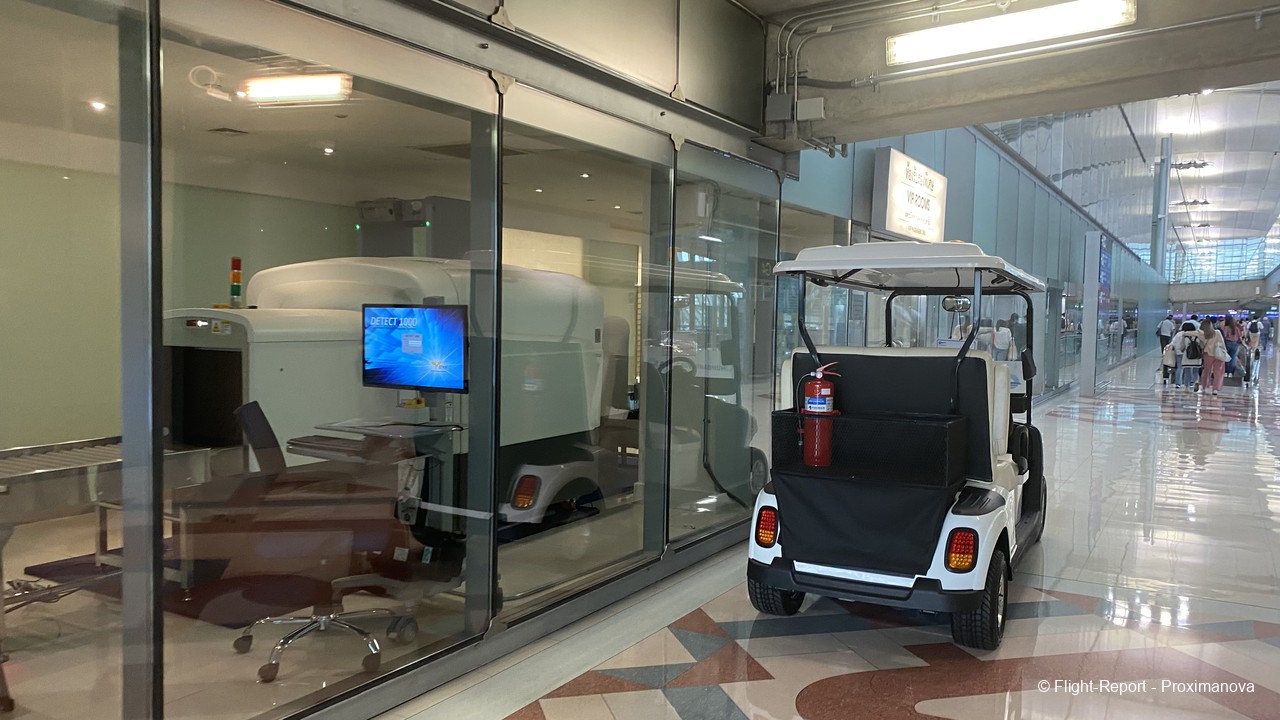
The airport Wi-Fi is one of the worse things about BKK. First it shows a noisy ad on the login screen; then you must enter your name and mobile number (without any validation, which defeats the whole point of storing them), and scroll all the way to the bottom of the terms and conditions. Worst of all, it is liable to disconnect without notice, which caused me great stress as I was about to board my flight to BLR, since I had no way to communicate with my family. It should have implemented a simple one-click system like DXB or Changi do.
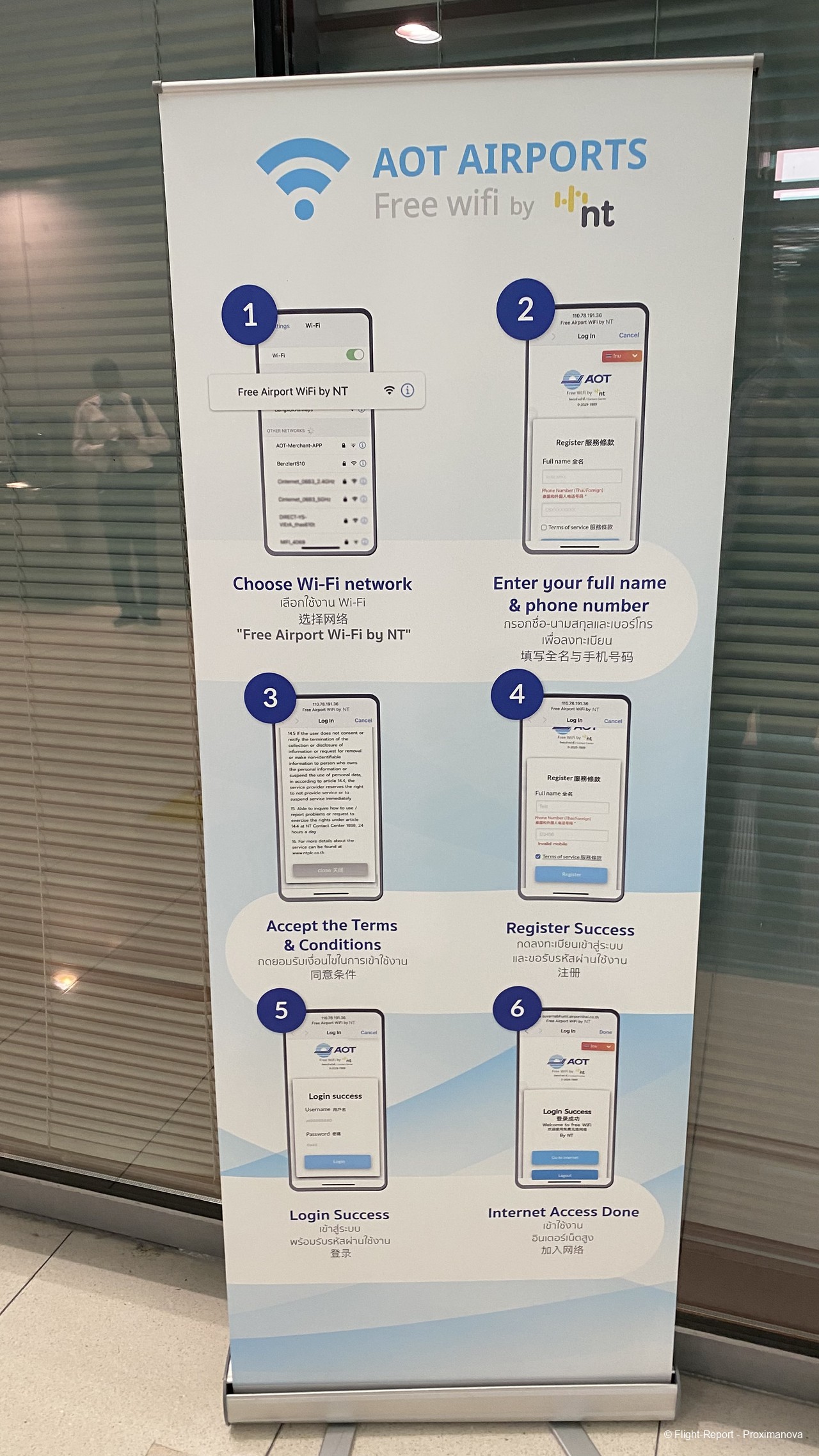
A6-BMH, the Greenliner, was obscured by those unsightly structures. There was a better view of her from the lounge.
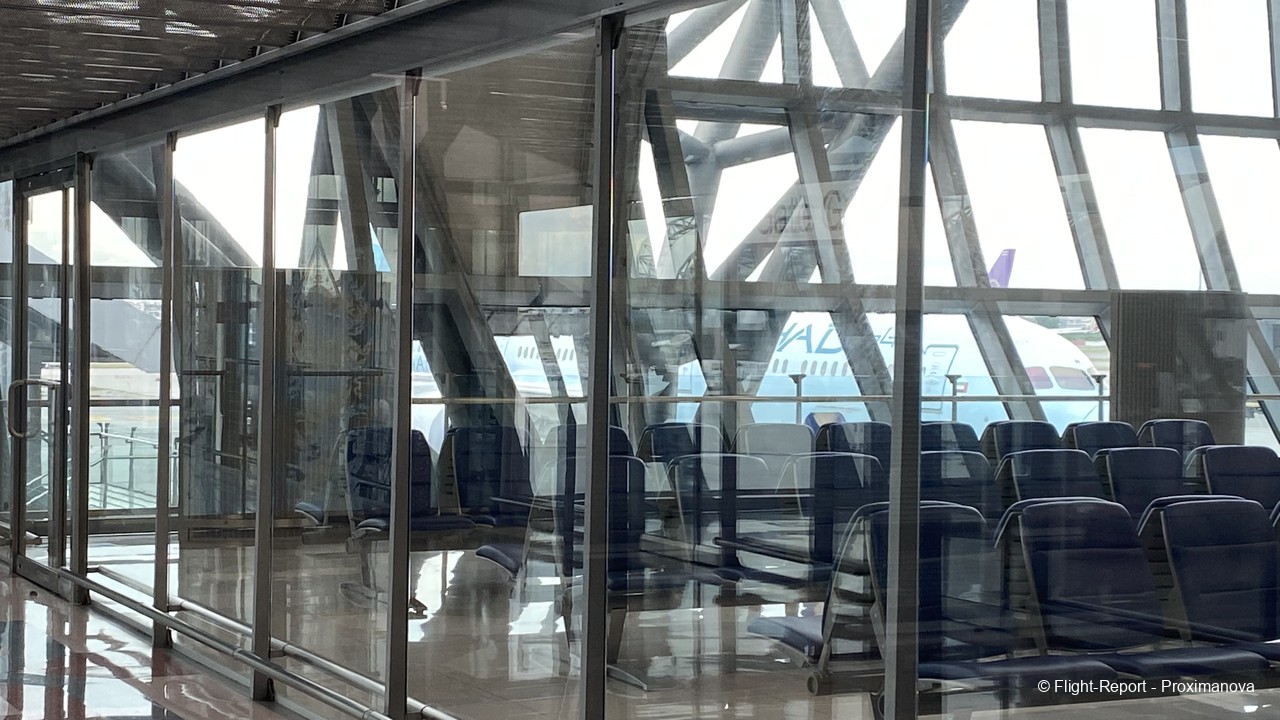
A visitor from home, VT-IJI…

…who had just arrived as 6E1794 from Mumbai.
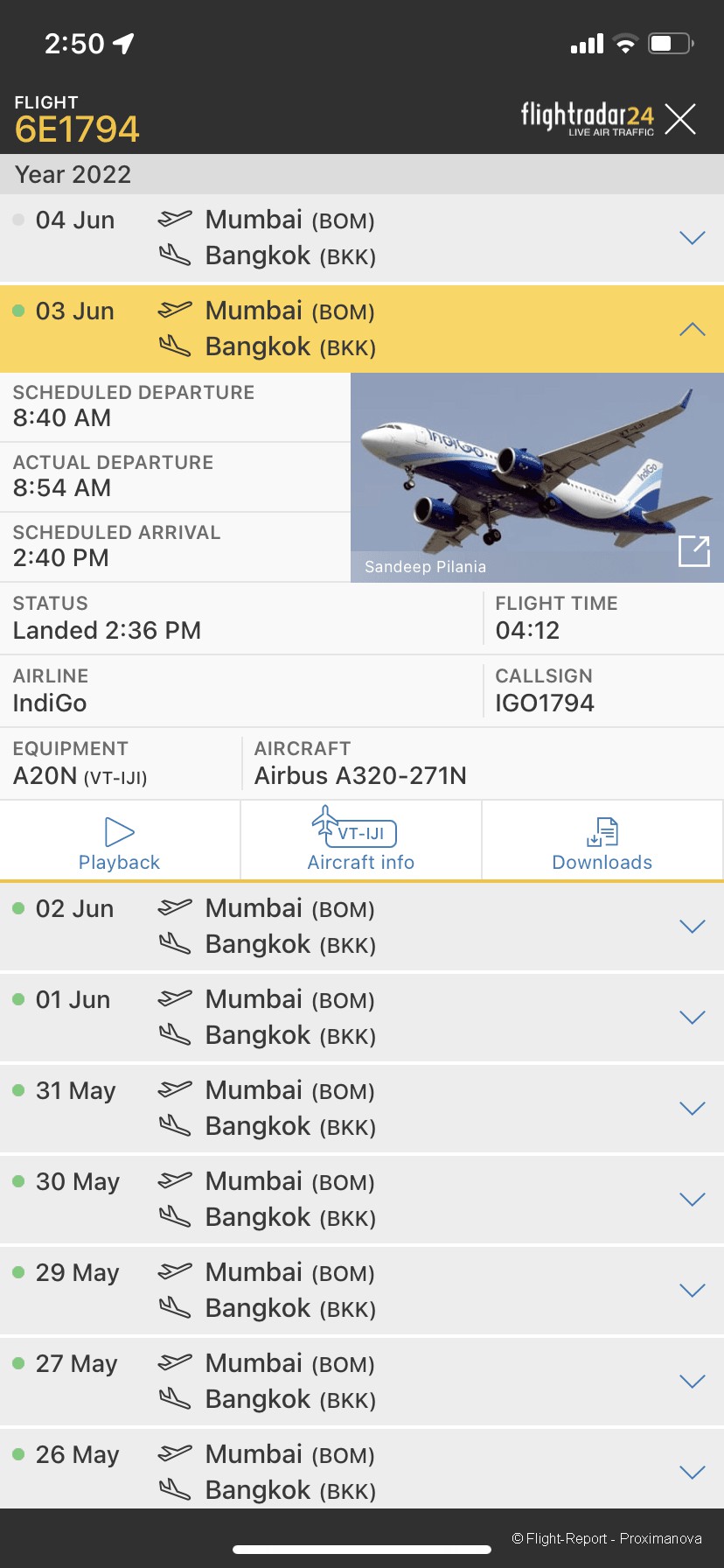
An ad for dtac, the smallest of Thailand’s three big mobile network operators, after AIS and TrueMove H.
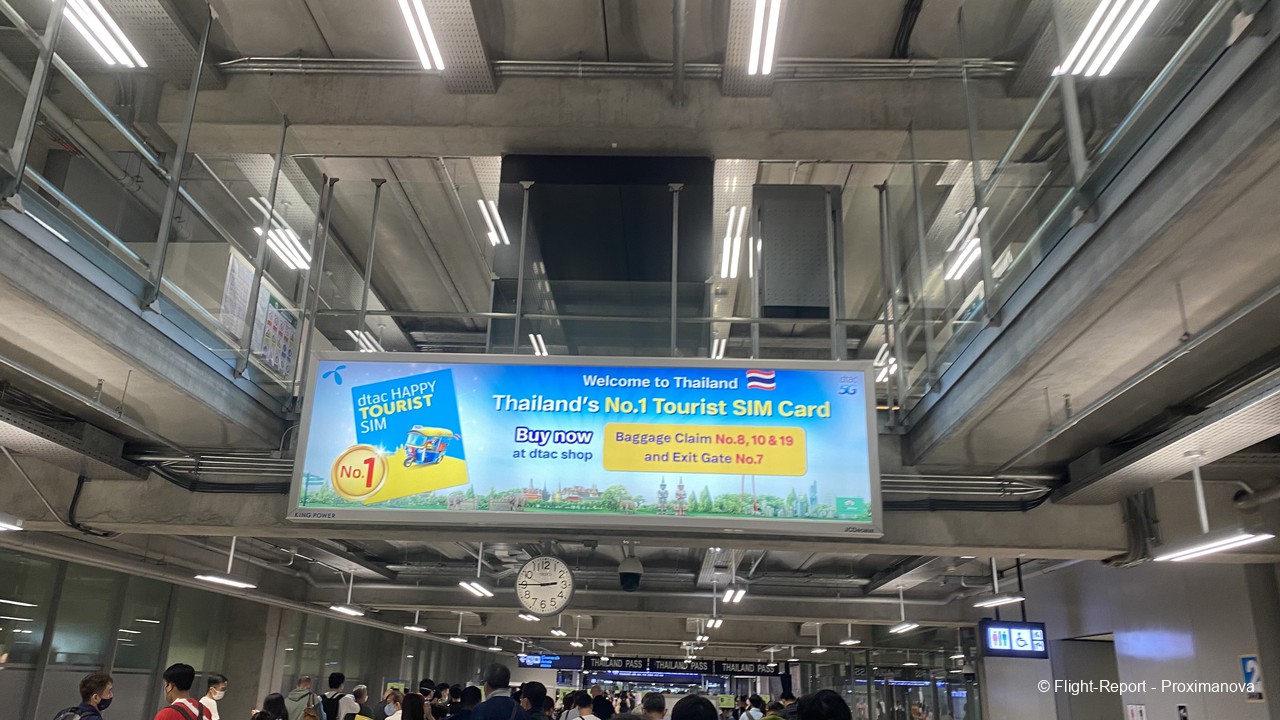
Makeshift signs were placed for connecting flights. The queues for those entering Thailand were insane. Thank goodness I was not among them. Certainly not without automated immigration gates.
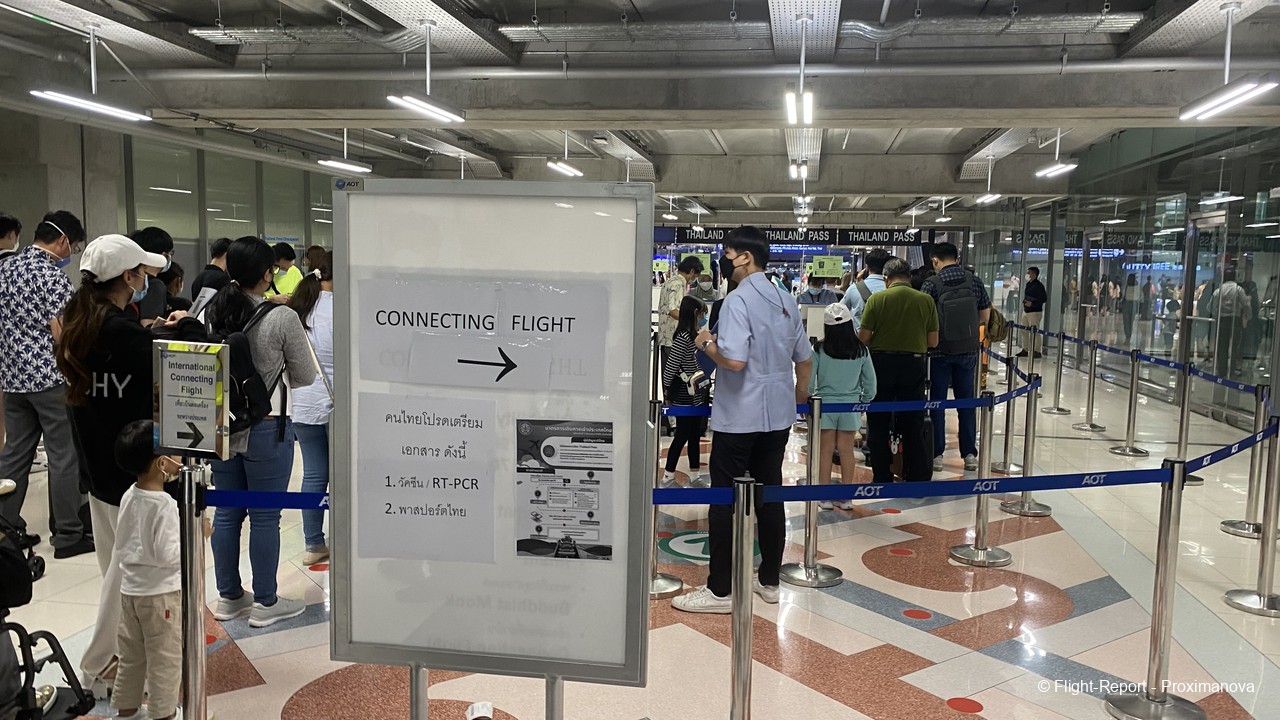
Some of the airlines offering transfers at BKK. Some names are not so commonly encountered by travellers, from EVA Airways (as opposed to EVA Air) to the imperious-sounding Deutsche Lufthansa A.G.
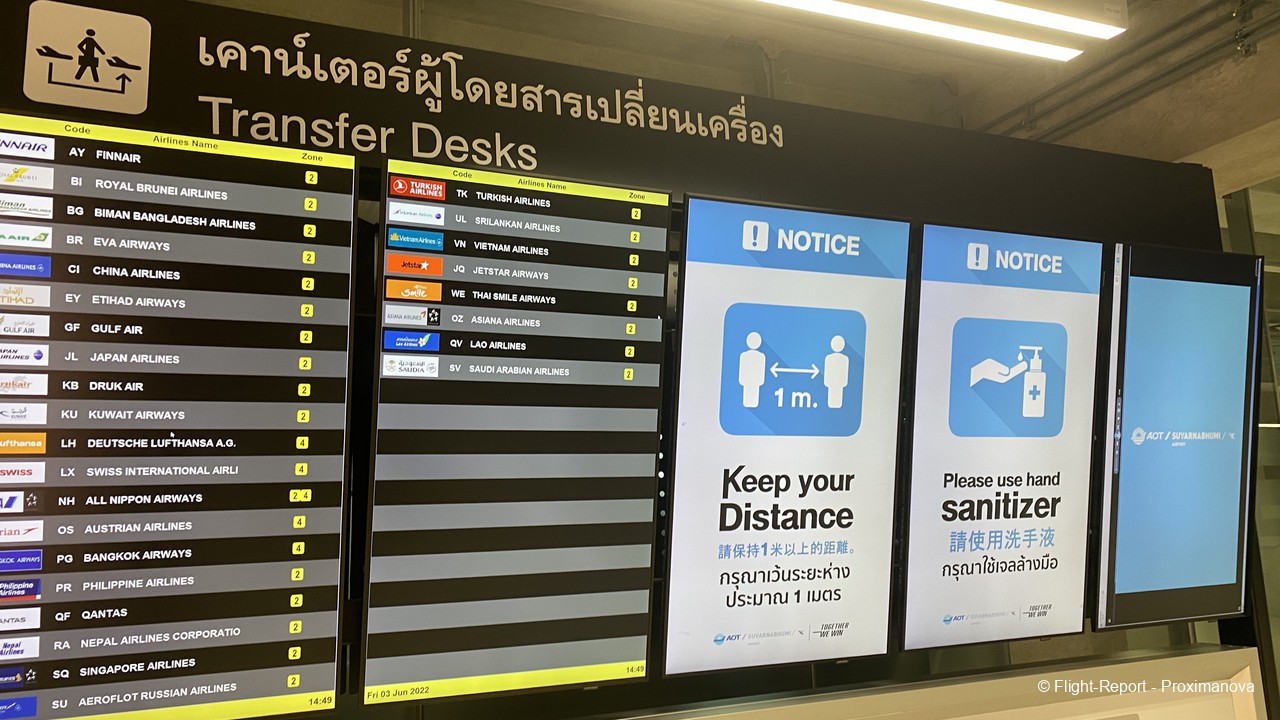
A list of departures. I really felt proud that I was taking a superior plane to BLR and not MAA. Oddly, codeshares for a given flight (such as NH5957 for TG325, or UK8711 for SQ713) are shown separately below the main flight, which might give the misleading impression that they are separate flights. (I would have been shell-shocked if they actually put the JetBlue logo into that missing spot below QR833!)
Interestingly, All Nippon Airways codeshares on all of Thai Airways’ Indian routes below — including BOM — and also served DEL, BOM and even MAA pre-pandemic, but not BLR. It does still fly to Chennai sporadically, but this is nowhere as popular as JAL’s Bengaluru flight, which techies connecting to Silicon Valley love so much that it operates nearly every day!

9V-SHR from Singapore, which was highly unusual at this time…
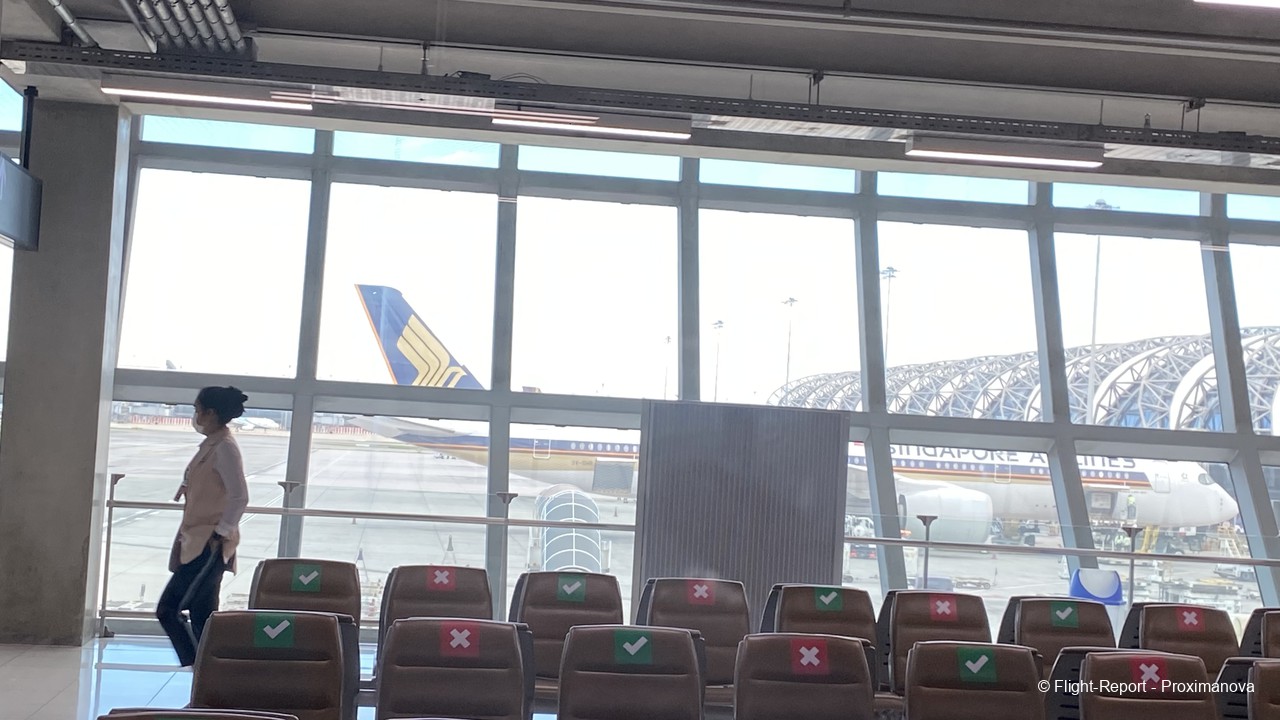
…since the SQ710 afternoon flight is operated only by SQ’s long-haul-configured A350s (9V-SM*/SJ* series) and not the regionally-configured A350s (9V-SH* series), so this was the only time a regional A350 was operating this flight. Some other SQ flights to BKK, however, are operated with the regional A350s. This is unlike Kuala Lumpur, its shortest route, which is operated only by long-haul A350s along with the much-hated 737-800s.

Now I proceeded to security for connecting flights, where irritatingly they confiscated my power bank because it had lost its rating label. I have never heard of an airport before which enforces that power banks must have a rating label on them, or be less than 32000 mAh. Fortunately, I had another one.
In the distance was parked a 737 (HS-KME) of K-Mile Air, which operates cargo flights on behalf of Teleport, a new subsidiary of AirAsia.
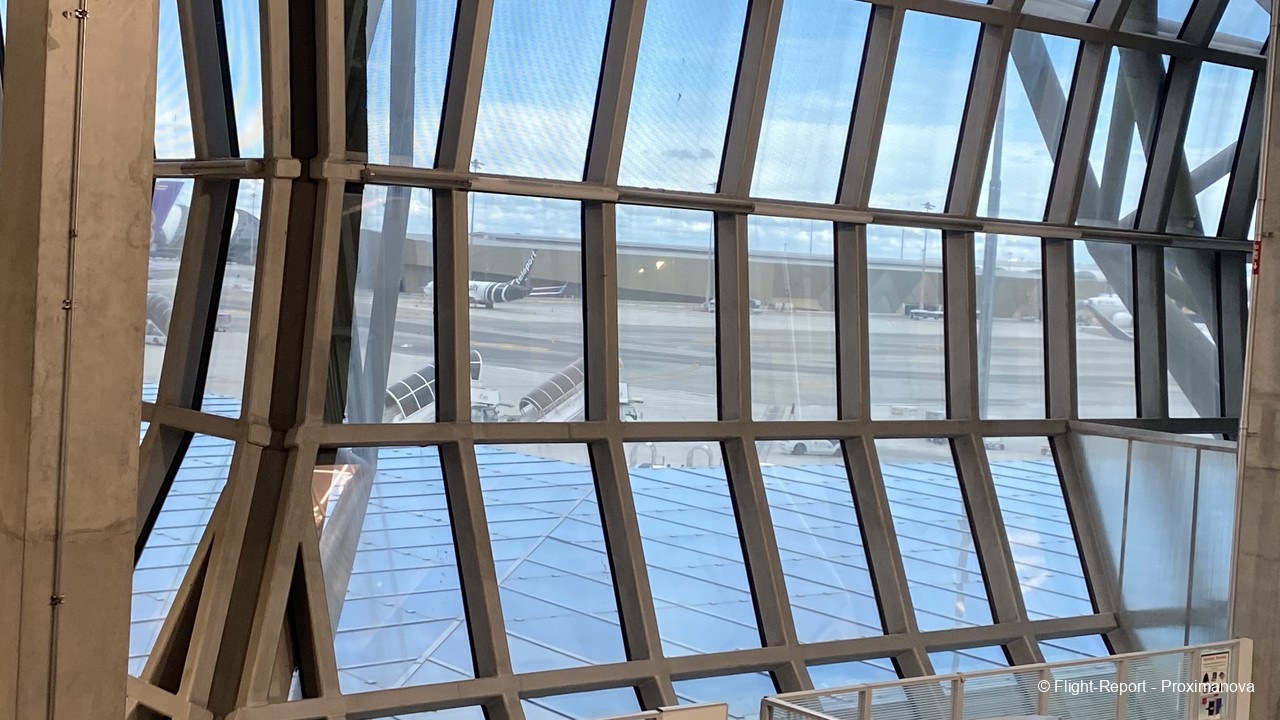

Now I went to the level above, where there was a King Power duty free shop, the likes of which account for a big percentage of the real estate at Suvarnabhumi Airport. One cannot turn an inch without finding one of them.
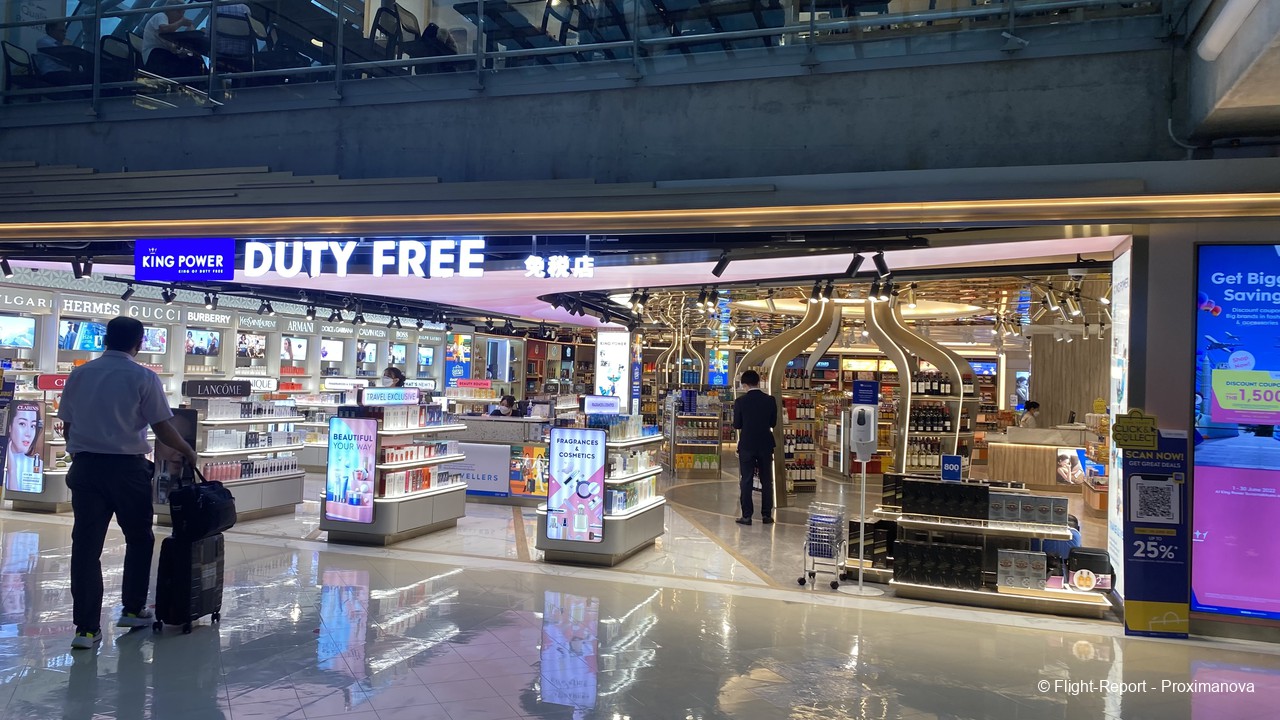
A view of the coffee shop above.
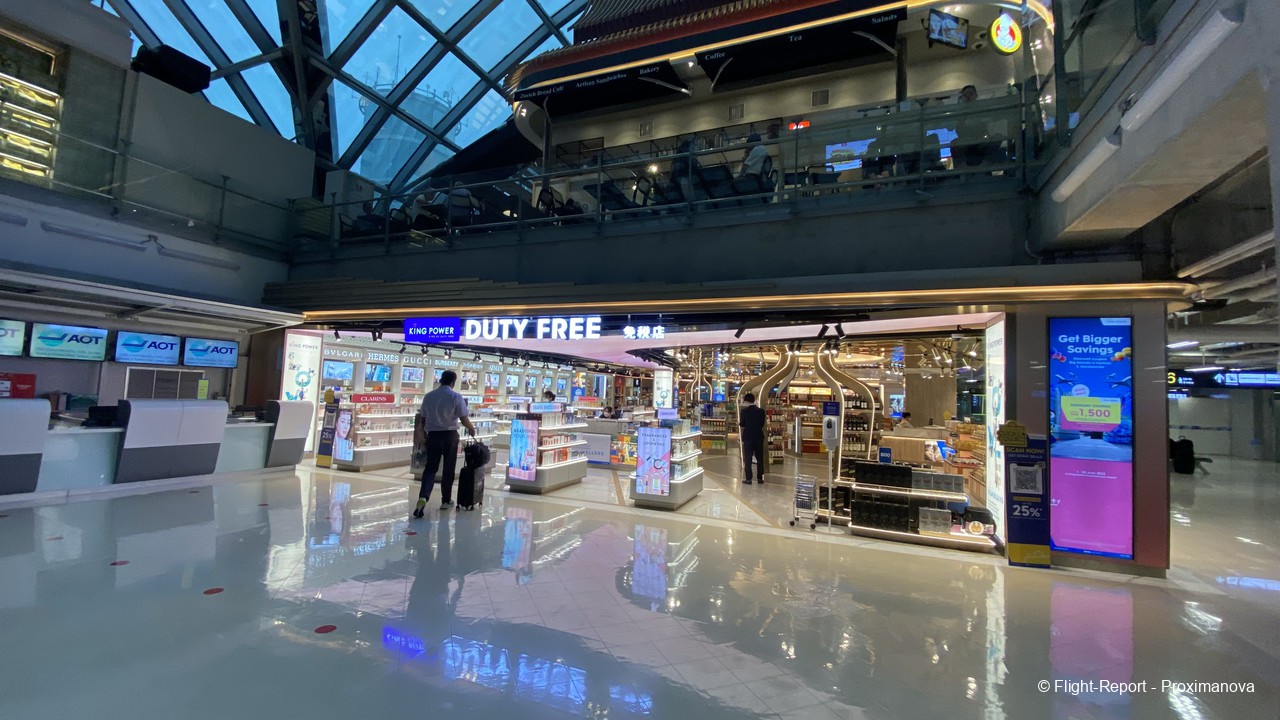
A view of the corridor. With those bare ceilings and sad signages, it’s no wonder BKK is nowhere in the running for design excellence awards, which Changi has been grabbing left and right.
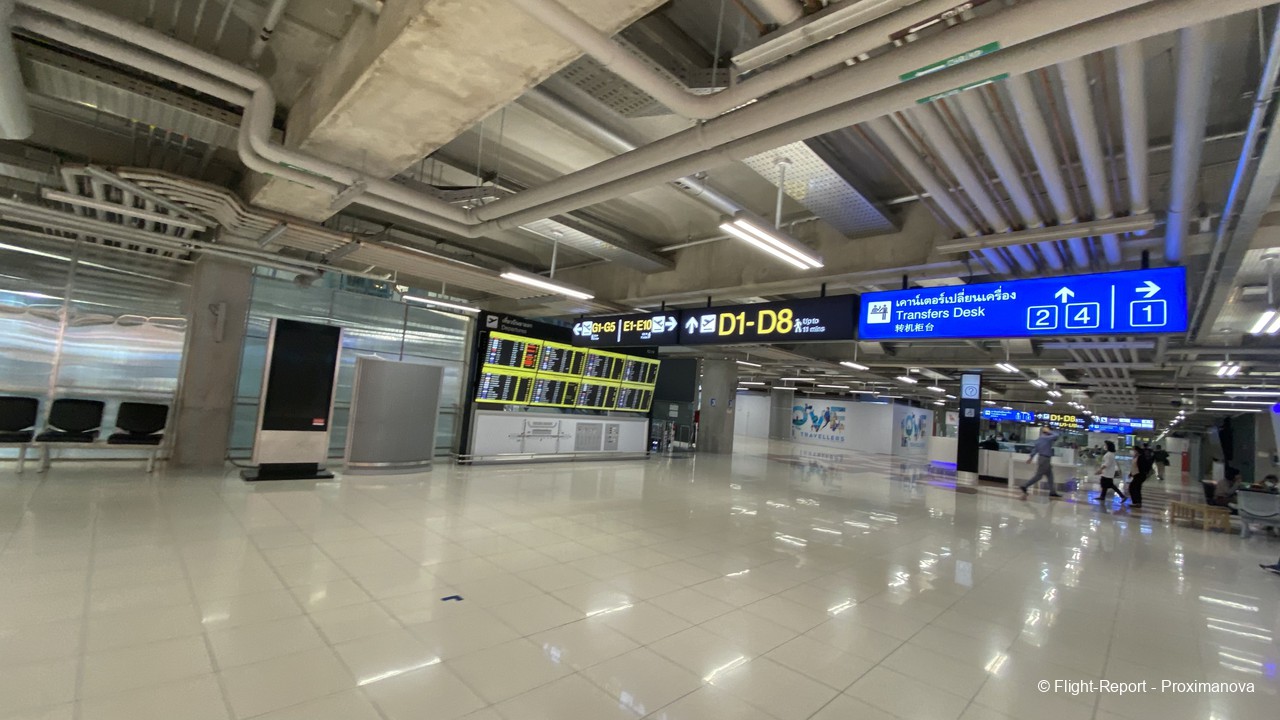
Of the numerous Miracle Business Class Lounges at BKK, I chose the one in Concourse F, right beside the King Power shop above. I do like BKK’s simple single-terminal design which makes it easy to travel from one concourse to another in a few minutes, unlike Changi with its four sprawling terminals which need to be connected by skytrains and a bus.
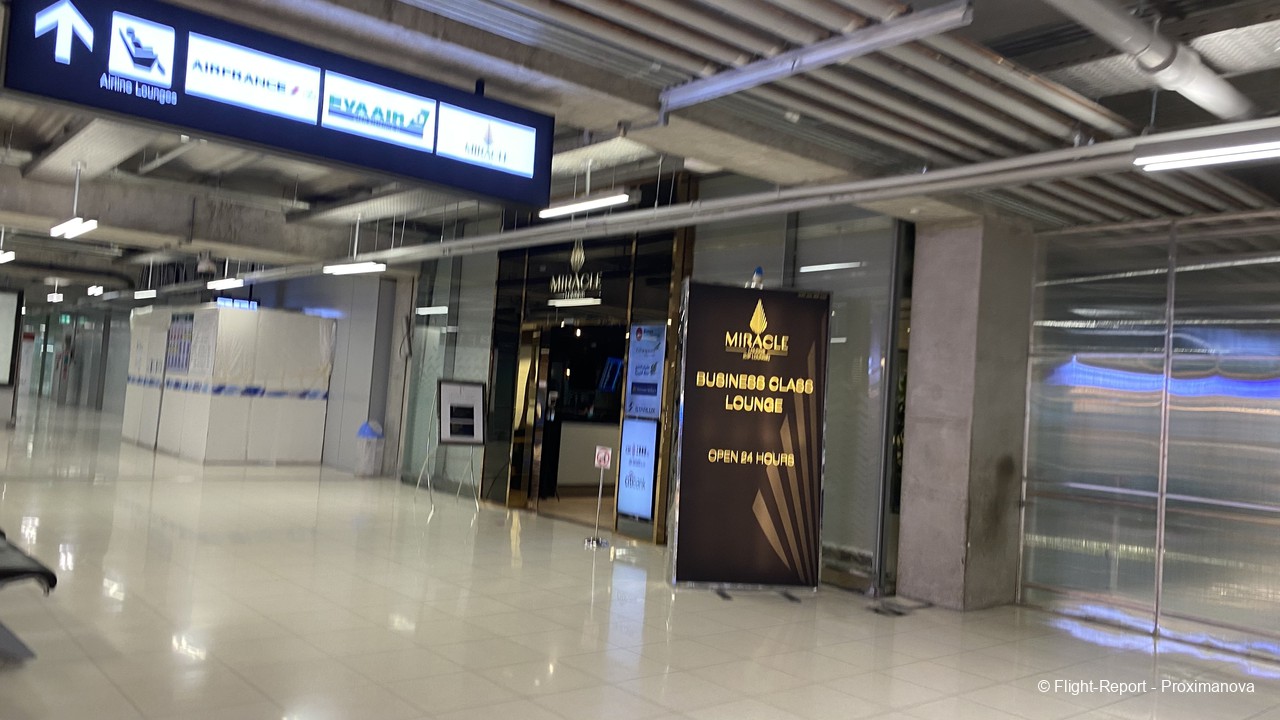
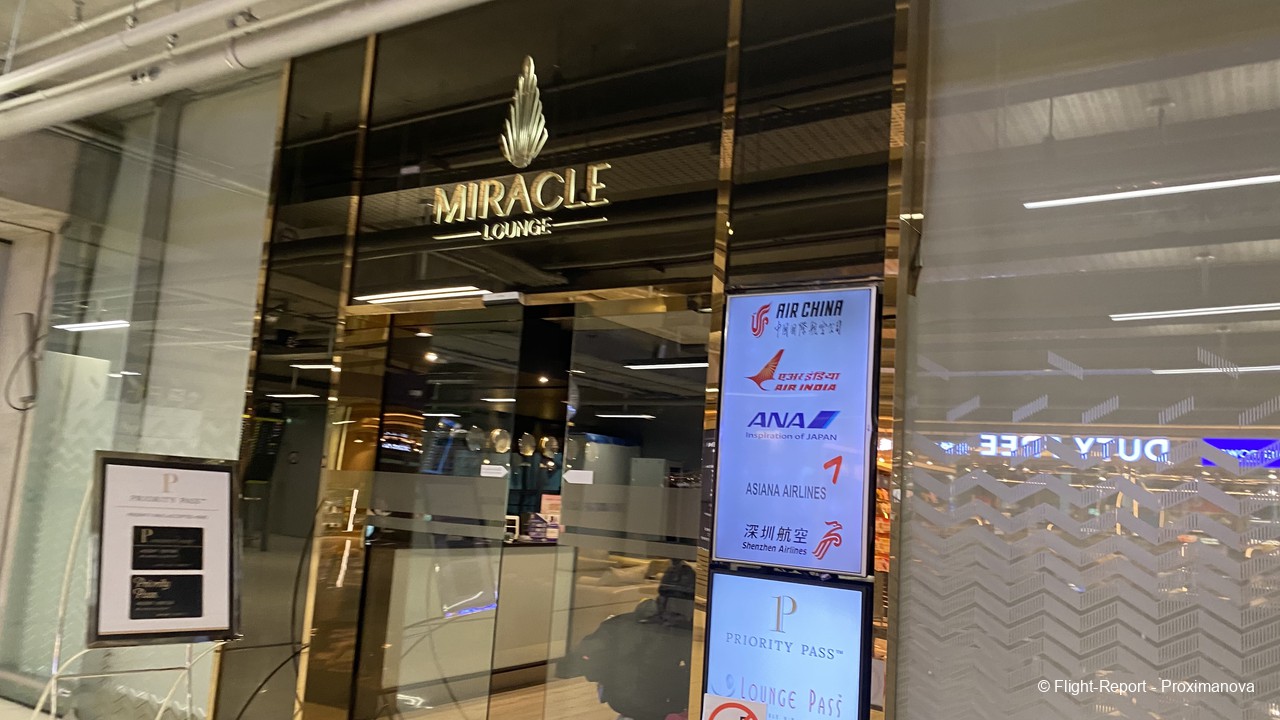
These are some of the airlines whose passengers are allowed access to the Miracle Lounge. The below are all Star Alliance members from Asia-Pacific, including Shenzhen Airlines, a little-known sister company of Air China. (I have always wondered why Oneworld has never been able to get a similar Mainland Chinese member such as Sichuan or Shandong. And while China Southern Airlines did spurn SkyTeam and join forces with American, there are no signs that it will join Oneworld, much like LATAM isn’t likely to join SkyTeam after quitting Oneworld.)
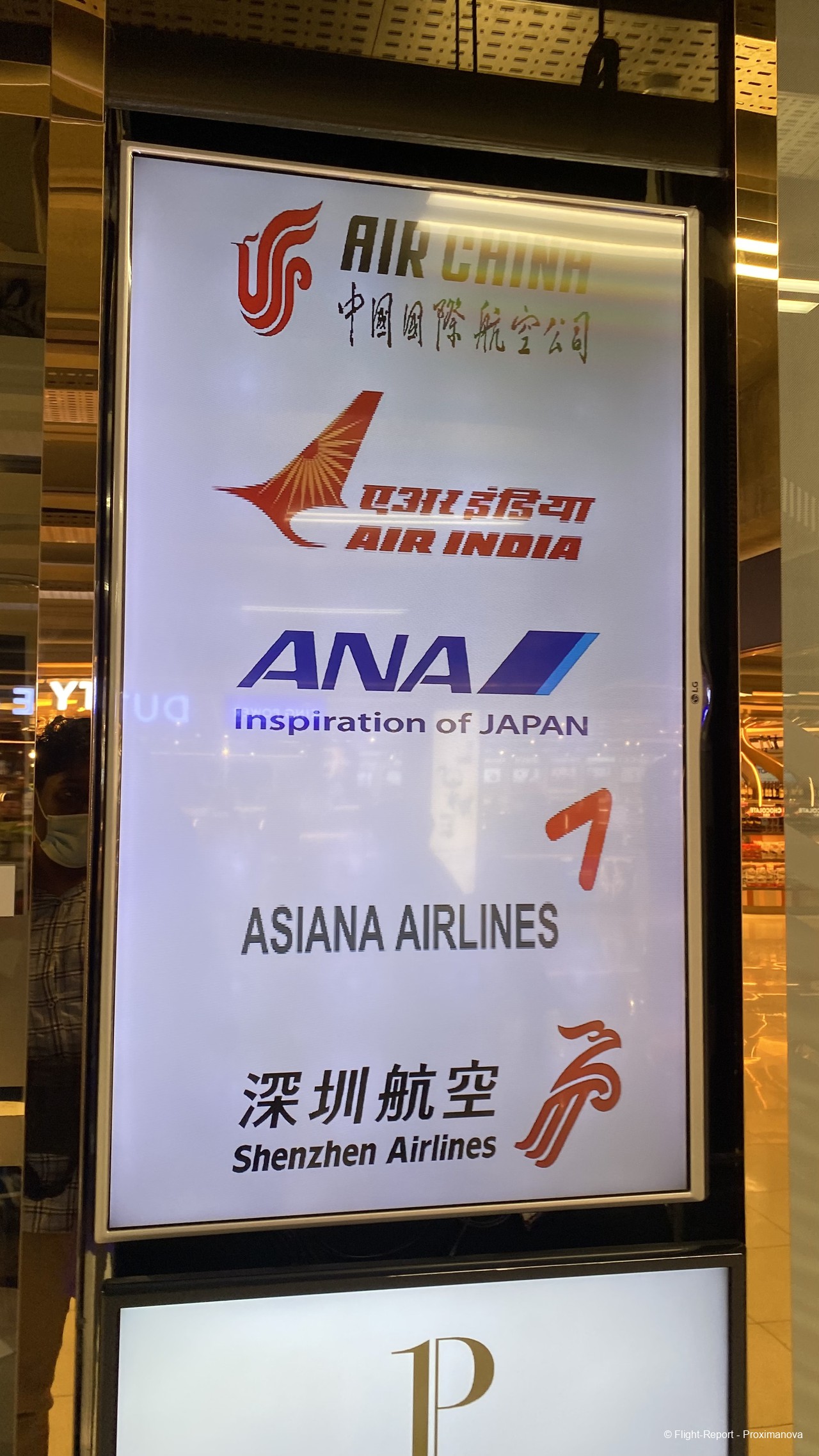
Some more airlines: another Asian Star Alliance member (EVA Air), Aeroflot (which had a good reputation but has become a pariah since the Ukraine war), the aforementioned Shandong Airlines, the little-known Air Macau, and Bhutan Airlines*. There are also a mind-boggling number of lounge access schemes; I didn’t even know that there are so many competitors to Priority Pass, the best-known one among them.
*This is NOT the flag carrier of the beautiful but inaccessible mountain kingdom — that honour goes to Drukair. Drukair provides essential service to not only its home country but also the northeast Indian city of Guwahati, in Assam state, for which the Drukair flights to Bangkok and Singapore were among its only international routes pre-pandemic.
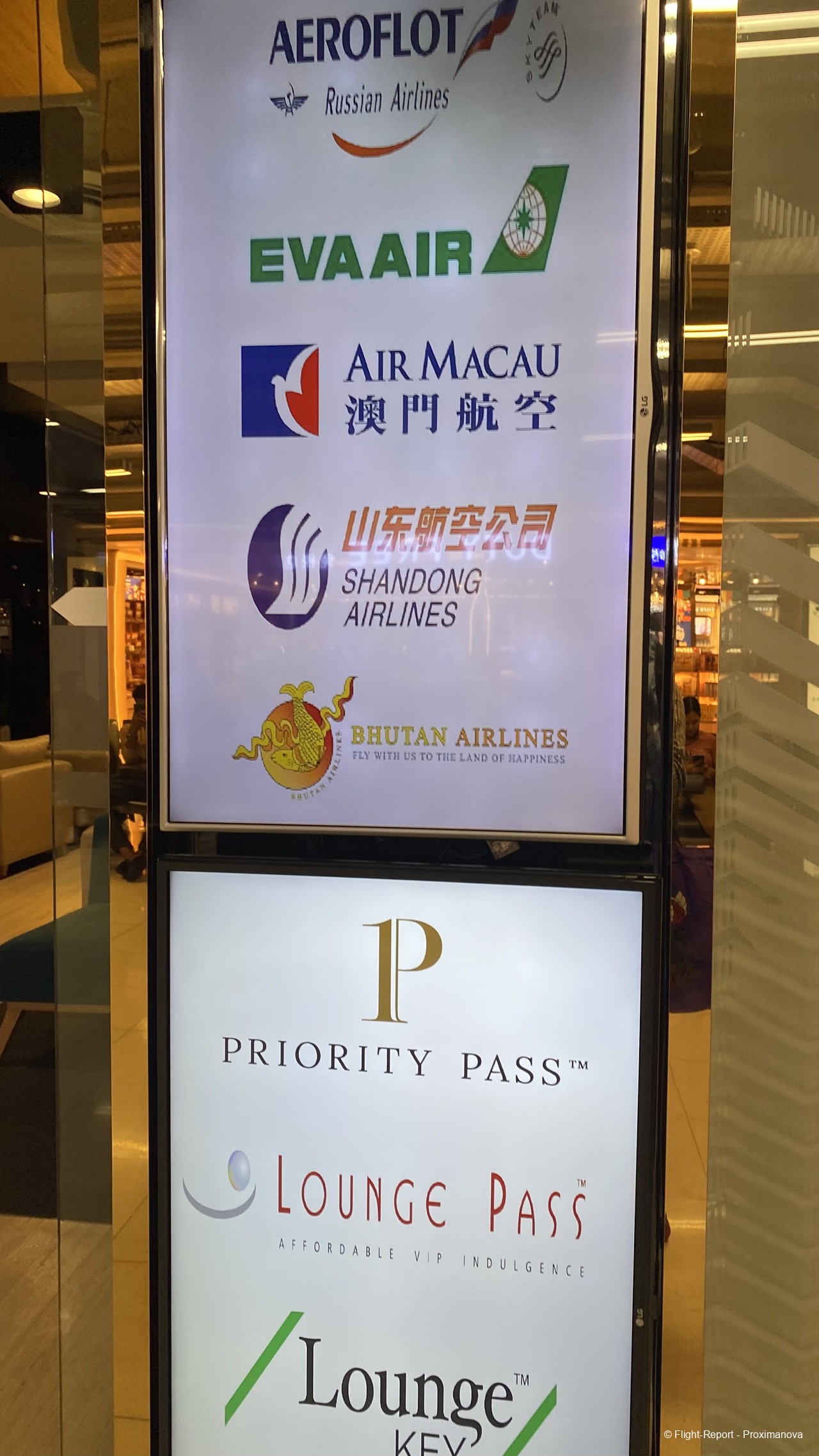
An array of airlines on the departures screen, ranging from Taiwan’s Starlux Airlines (JX) to Myanmar Airways International (8M) to Vietnam Airlines’ subsidiary Pacific Airlines (BL) — formerly Jetstar Pacific — to our own Vistara (UK), plus a number of domestic flights on Thai Smile (WE) and especially Thai VietJetAir (VZ).
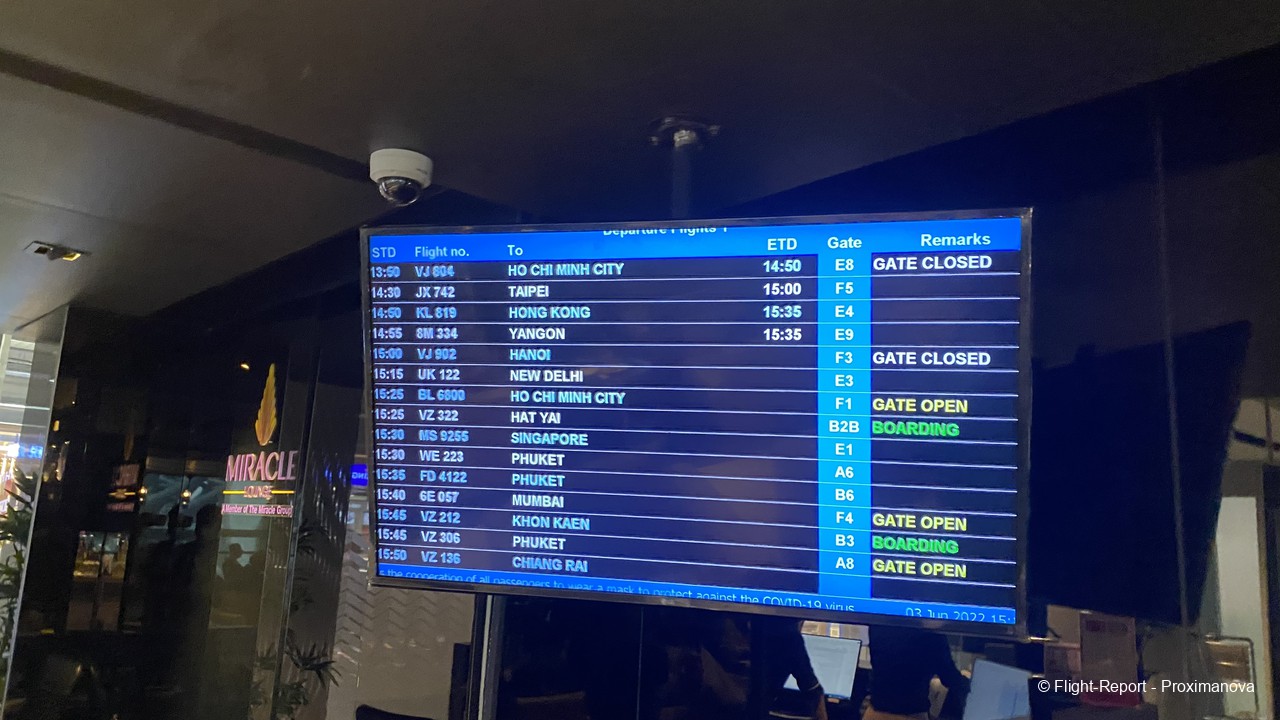
The lounge décor was pretty nice for a contract lounge, it must be said. It was about half occupied. Among the occupants were an Indian teenage girl and her parents, who stayed for a couple of hours, until 5pm, before boarding (most likely) TG315 to Delhi. They kept chatting around like the Great Indian Happy Family, and their presence was a comfort. There were also several Australians from time to time.
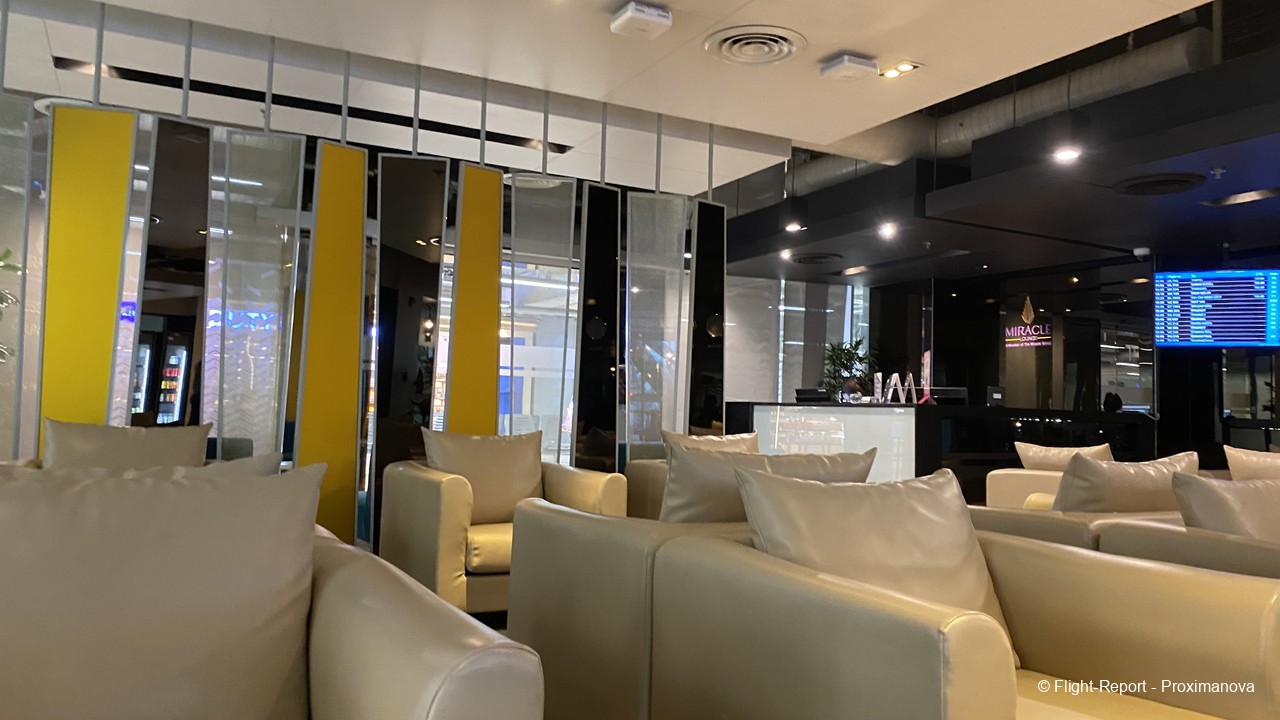
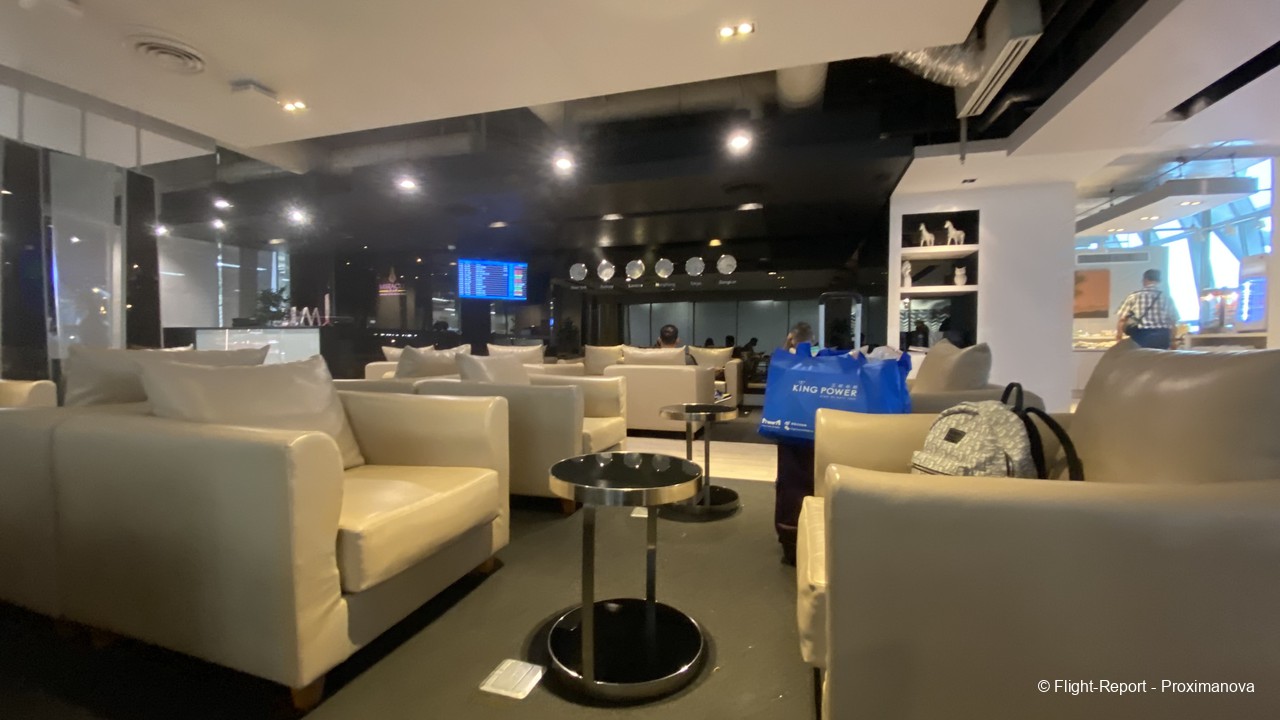
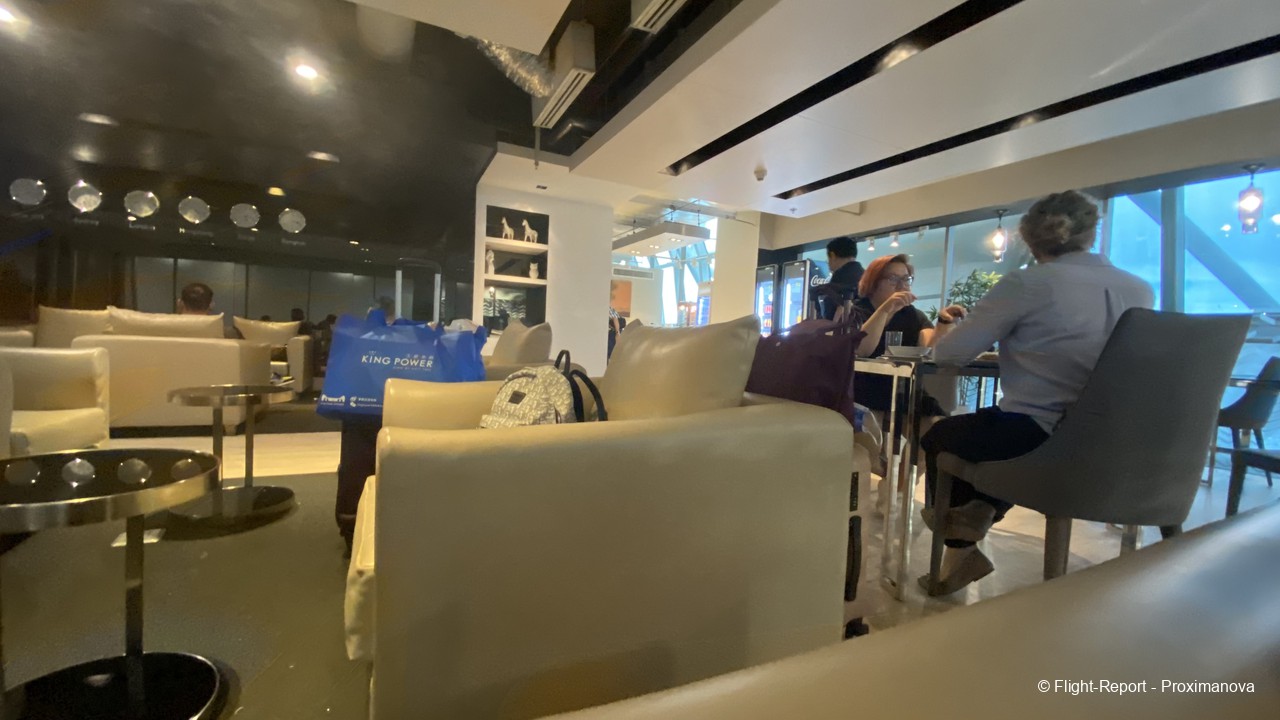
The boarding pass and Wi-Fi login information.
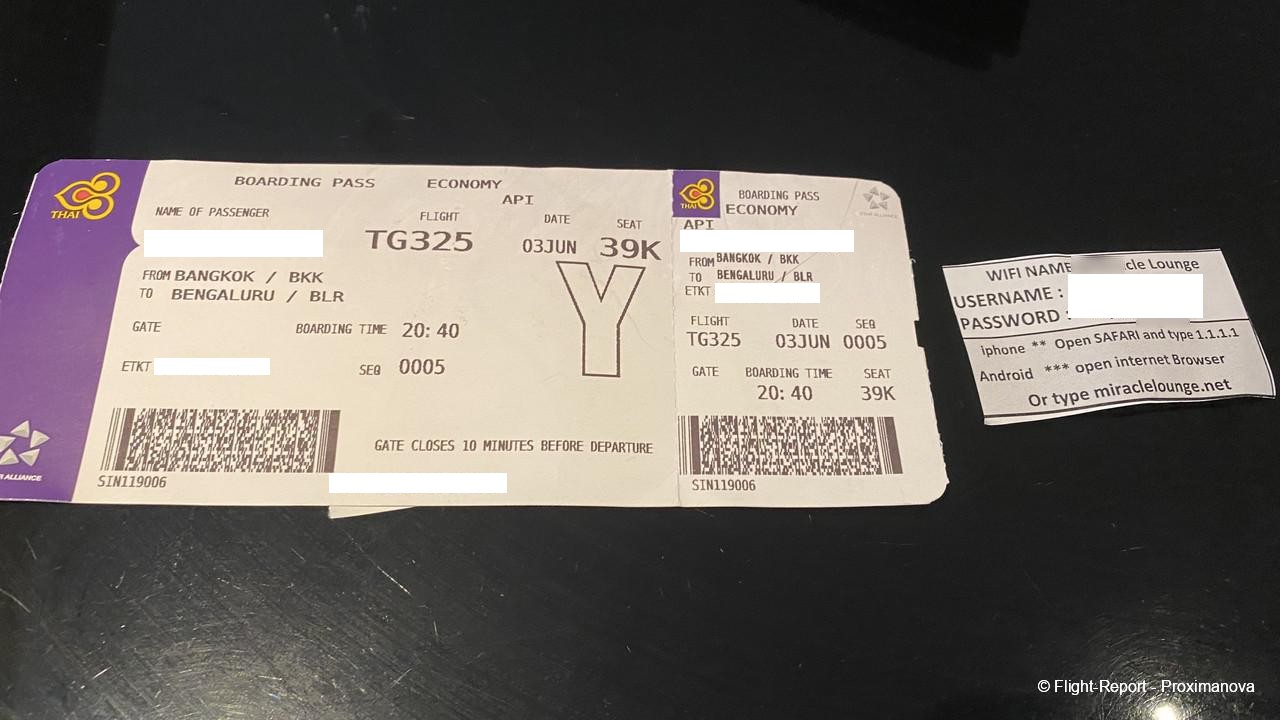
An array of foods was available. These were some of the cold options, which were decent enough.
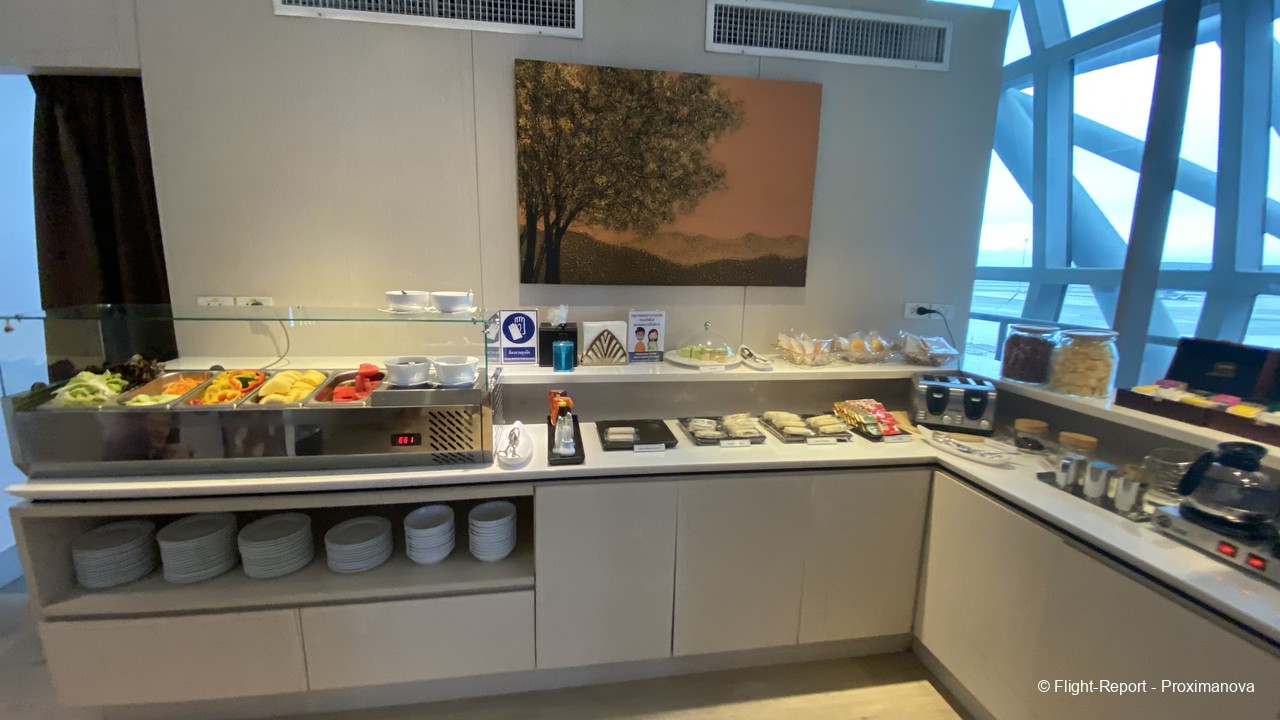
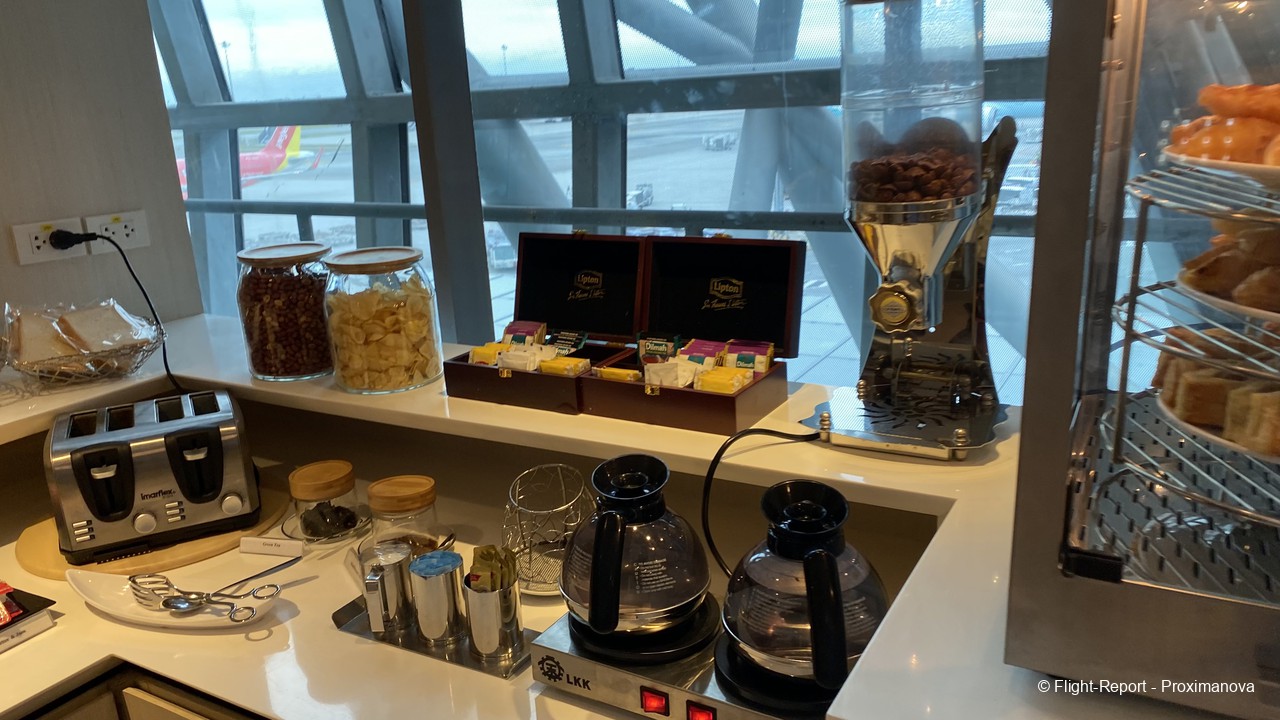
The hot ones weren’t very good, though. After a while in the air-conditioning, they became cold and chewy.
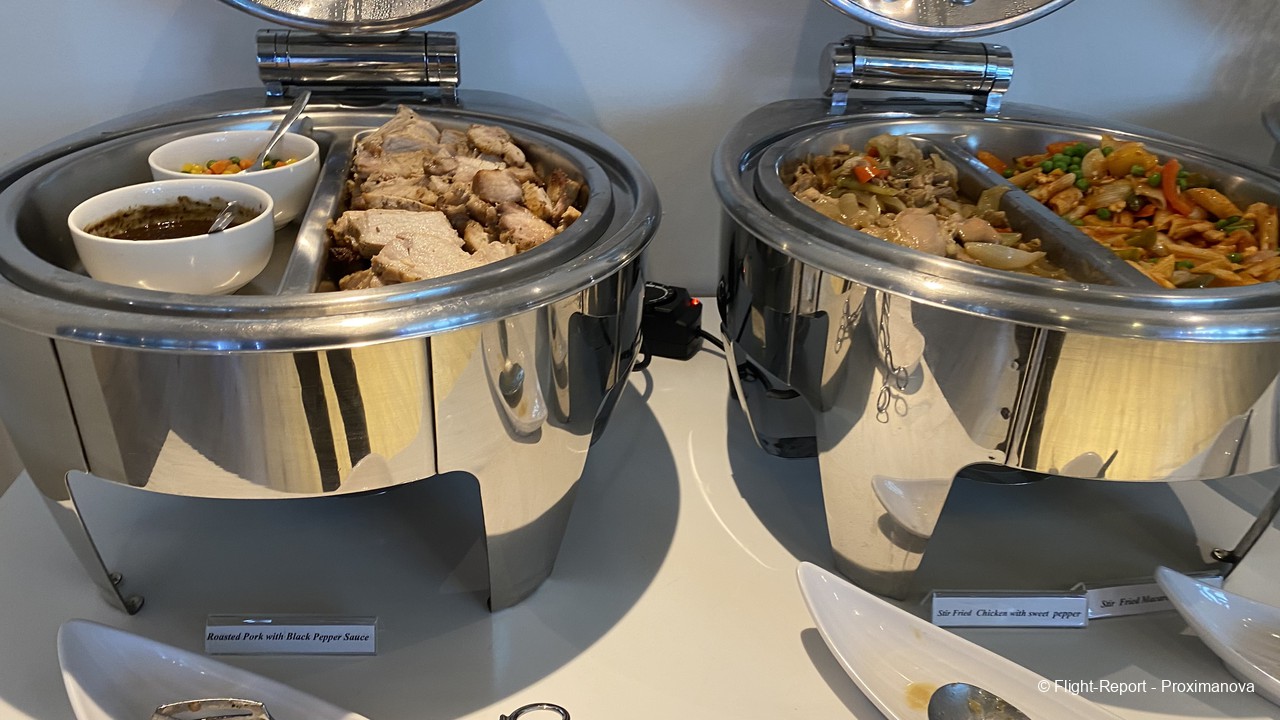
The lounge offered some great views of the apron, including A6-BMH, the Greenliner. However, the dotted windows remained a huge menace while taking pictures.
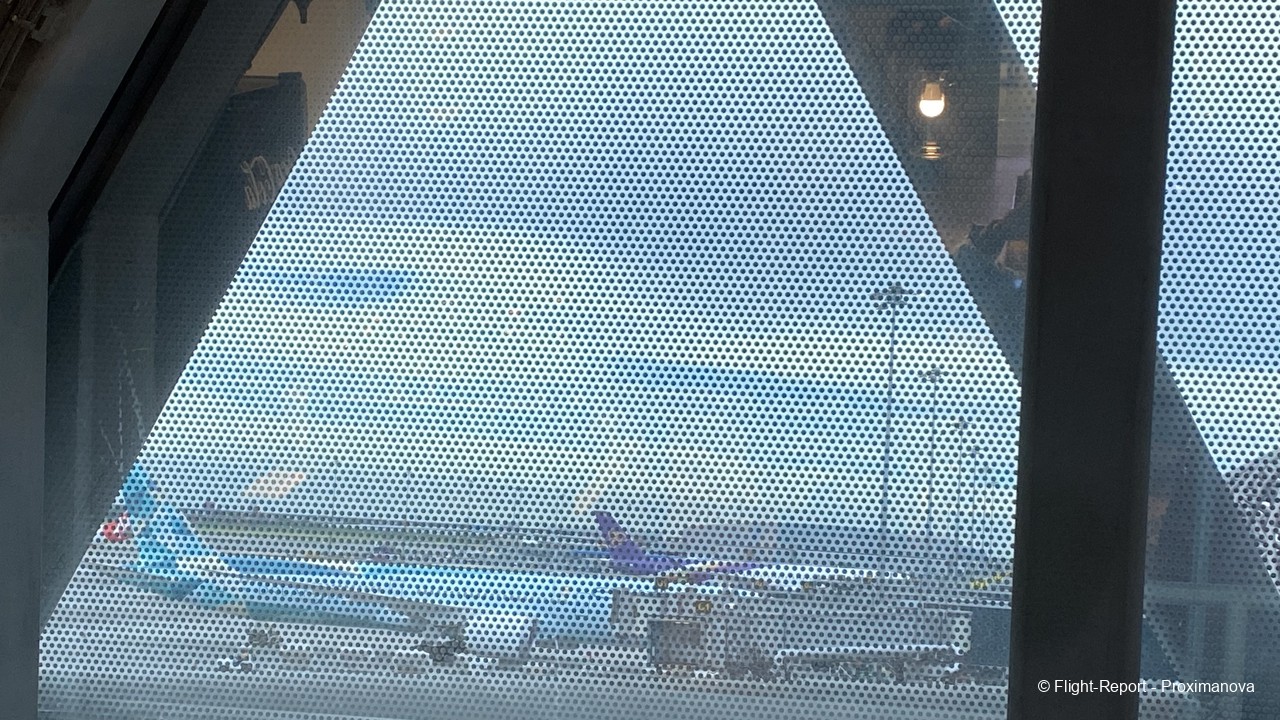
This was HS-VKE, a Thai VietJetAir A320 with a ‘Sky Boss’ decal, which inexplicably still had some Vietnamese text that hadn’t been changed to Thai.
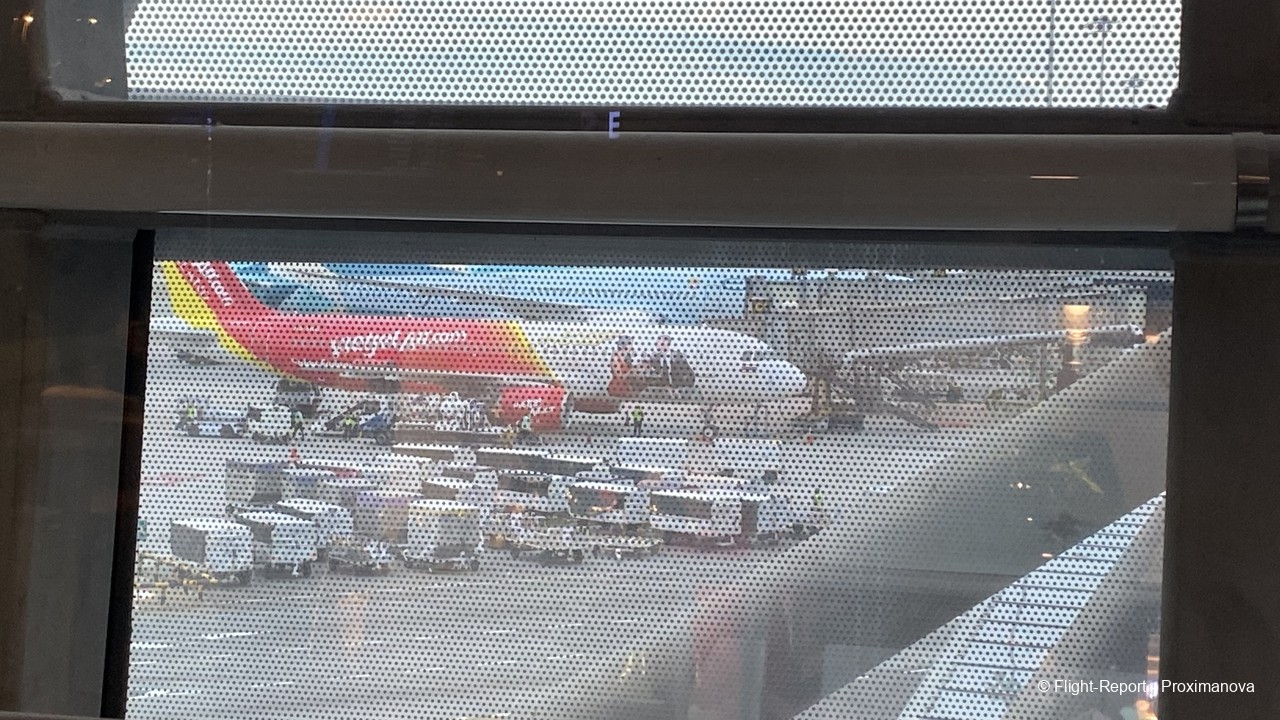
A Thai 777 stood in the distance.
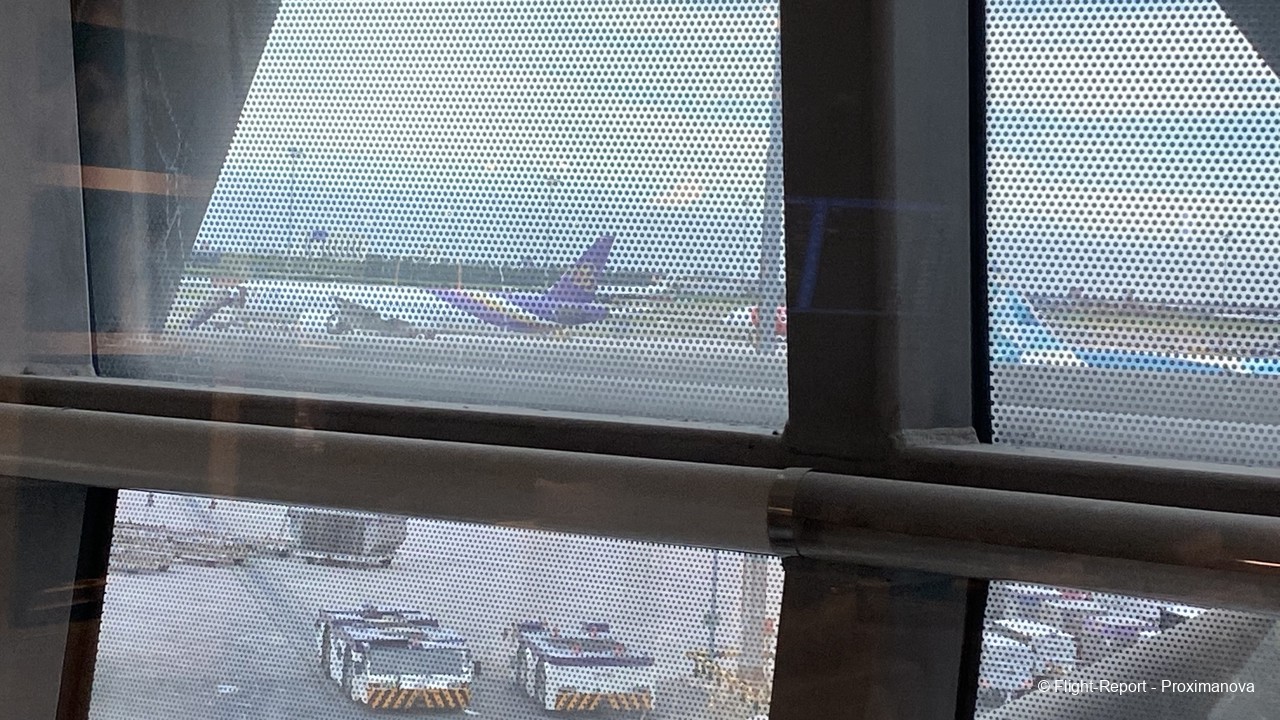
After a couple of hours, it was time to have a look at the various retail options of this sprawling transportation hub. I left my bags in the lounge at 5pm and headed out for a stroll around the terminal.
Exploring BKK’s shops, duty-free and restaurants
As I left the lounge I was greeted by a huge Qantas Airways information banner. The Australian flag carrier carries a large number of tourists from Down Under to Bangkok every year, and with both countries having reopened after months of draconian restrictions, it was ready to welcome them once again. (In other news, the Oneworld founder-member will launch flights from Sydney to Bengaluru in September, at the expense of its Sydney to Delhi flights — another reason for me to be jealous of that far more successful South Indian airport.)
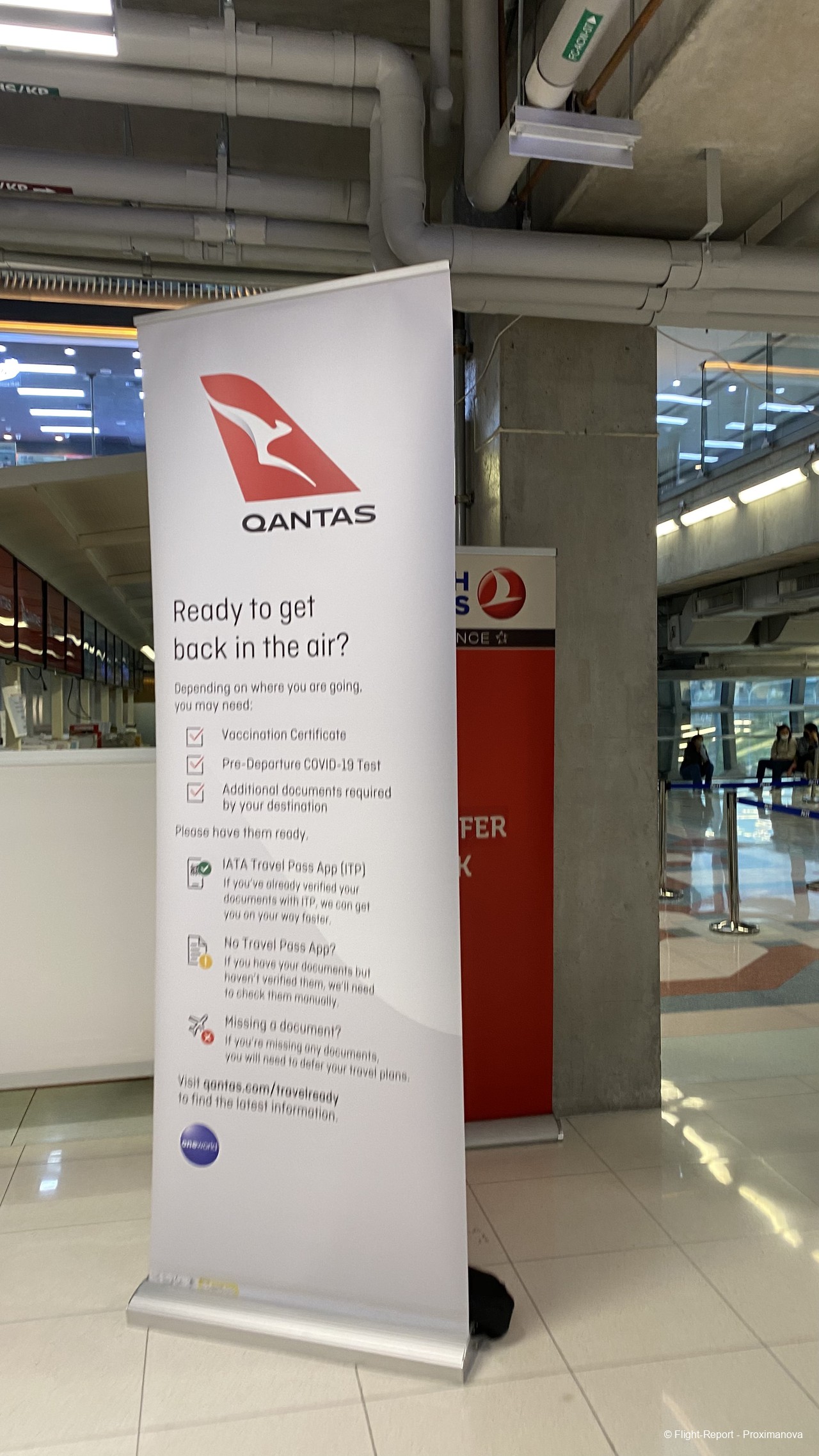
At the nearby transfer desk were signs for Ethiopian Airlines and Qatar Airways, the former an African giant and the latter a global colossus. A desk for QR’s great rival EK was also present.
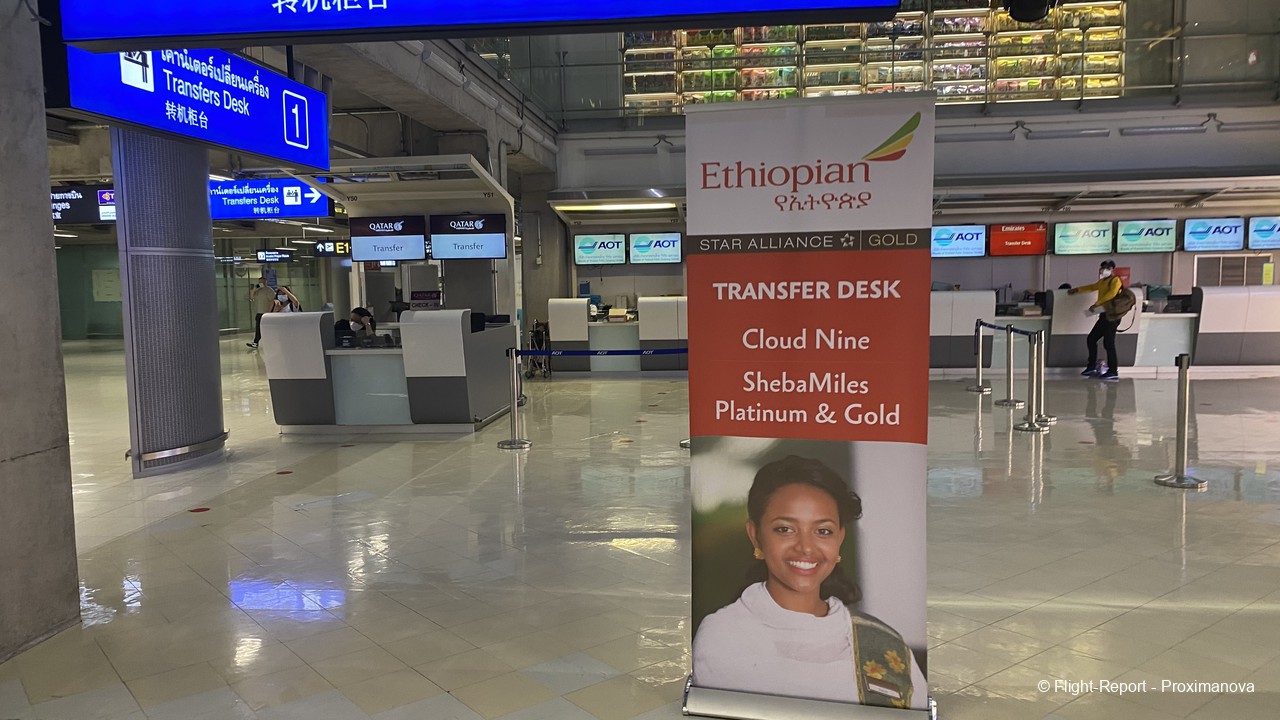
On the top floor was a large array of restaurants and shops, starting with this Boots pharmacy. I was astonished to see the British drugstore chain here, because it is completely absent from Singapore, where Watsons and Guardian dominate the pharmacy scene. As it turns out, Thailand is Boots’ largest market outside the UK! It’s not often that a major international retail chain has such a large presence in Thailand but none in Singapore.
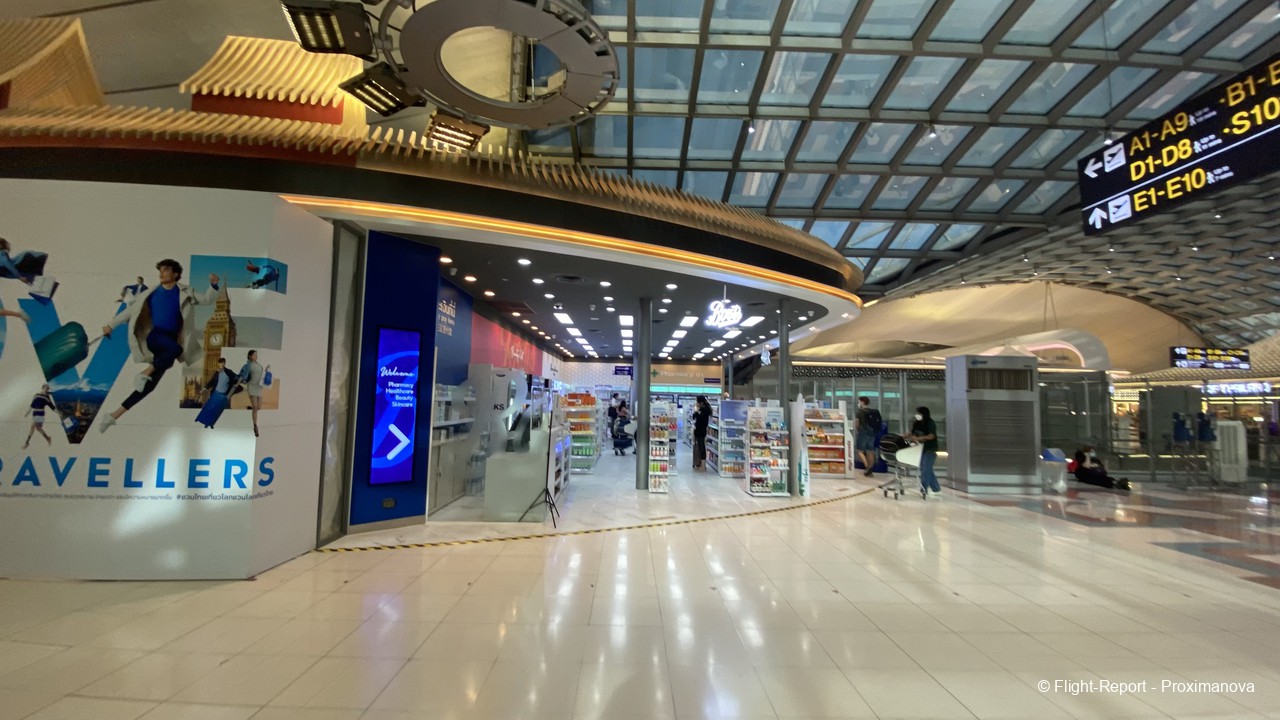
Of the scores of King Power duty free shops at BKK, this one sold Thai food products, from chocolates to candied fruits.
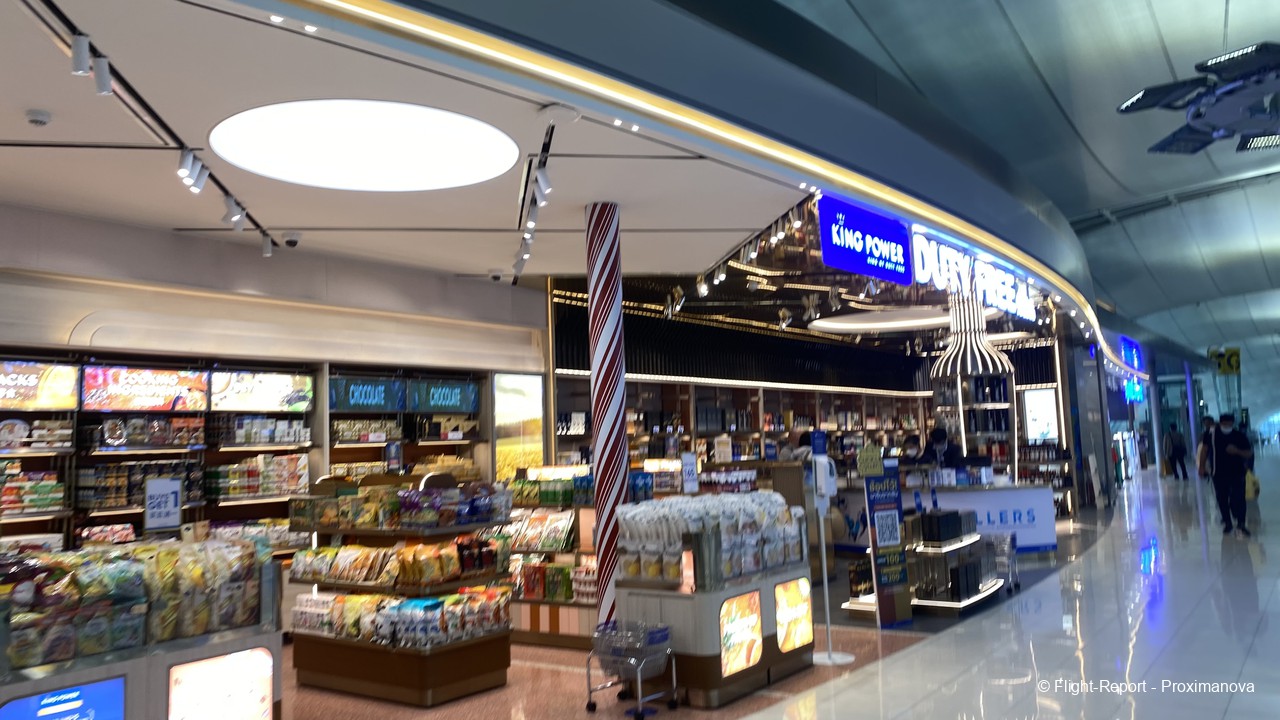
Another sold health and beauty products, à la Boots.
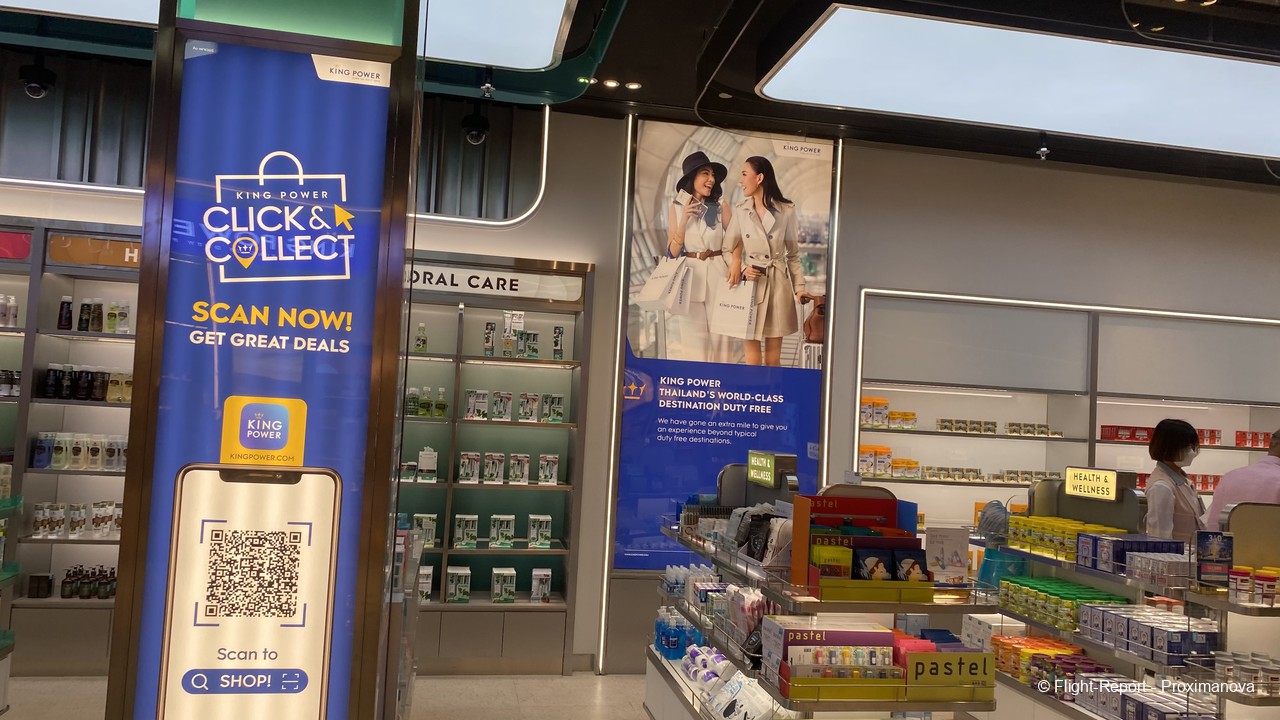
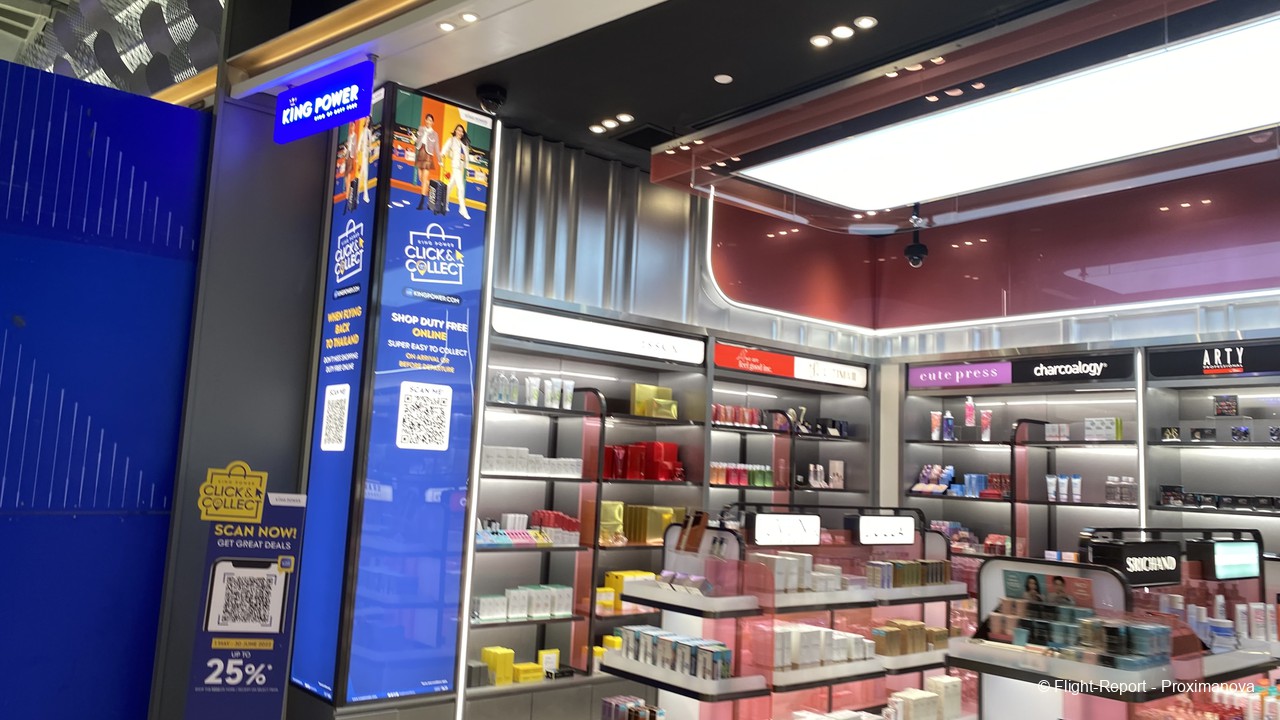
And another sold sportswear. It was clear that King Power had a shop for every possible need, much like Dubai Duty Free does at DXB.
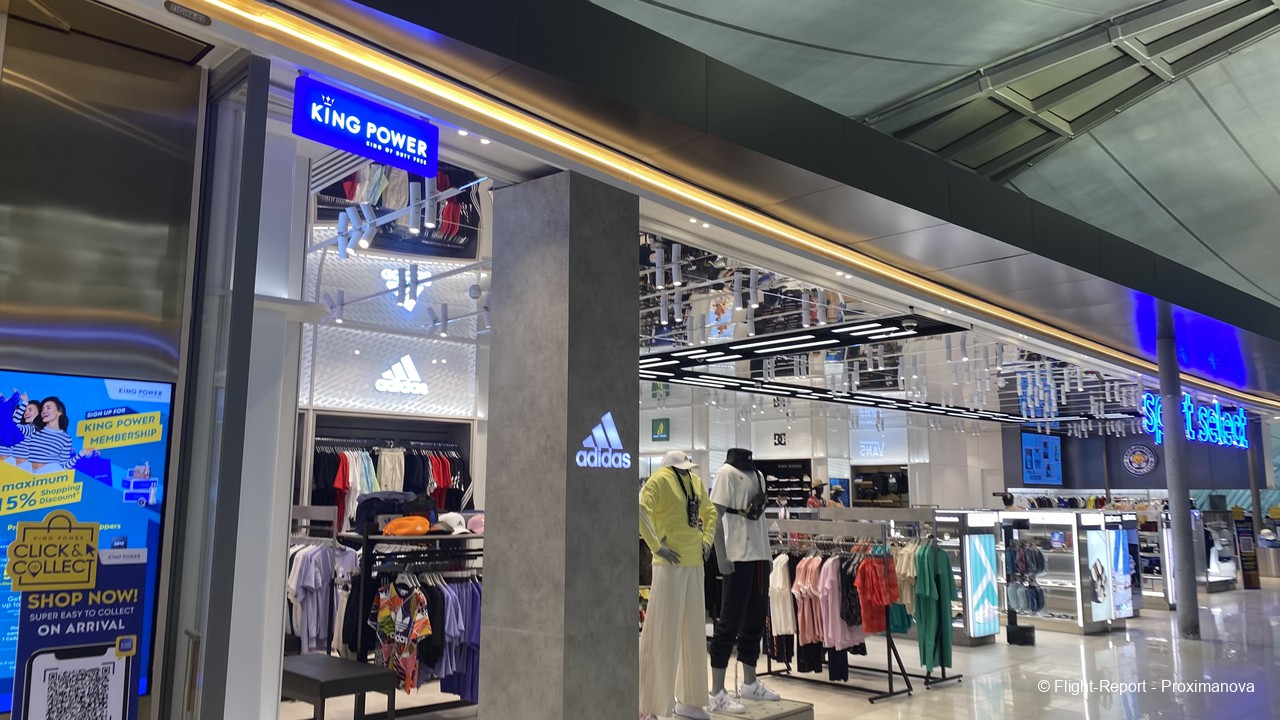

Coming back to Boots, I decided to buy a cough syrup for THB 117, as my cough was only getting worse. It did subside by the time I reached Bengaluru.
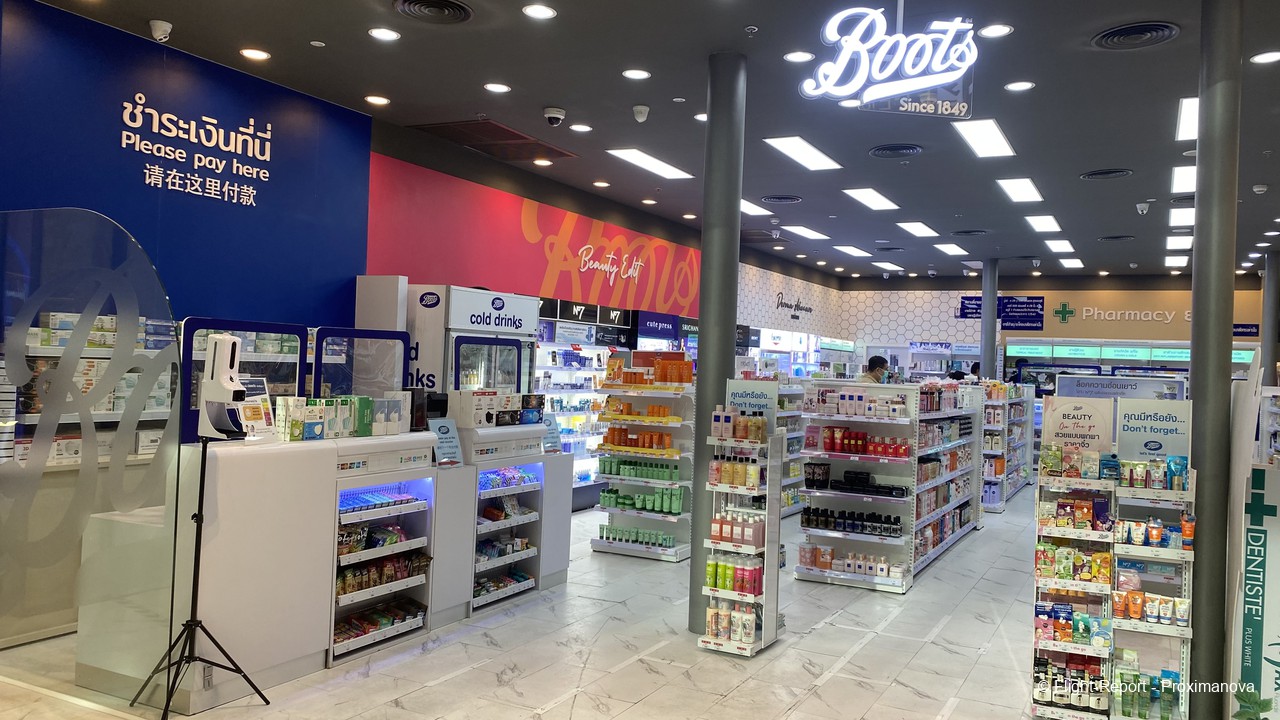
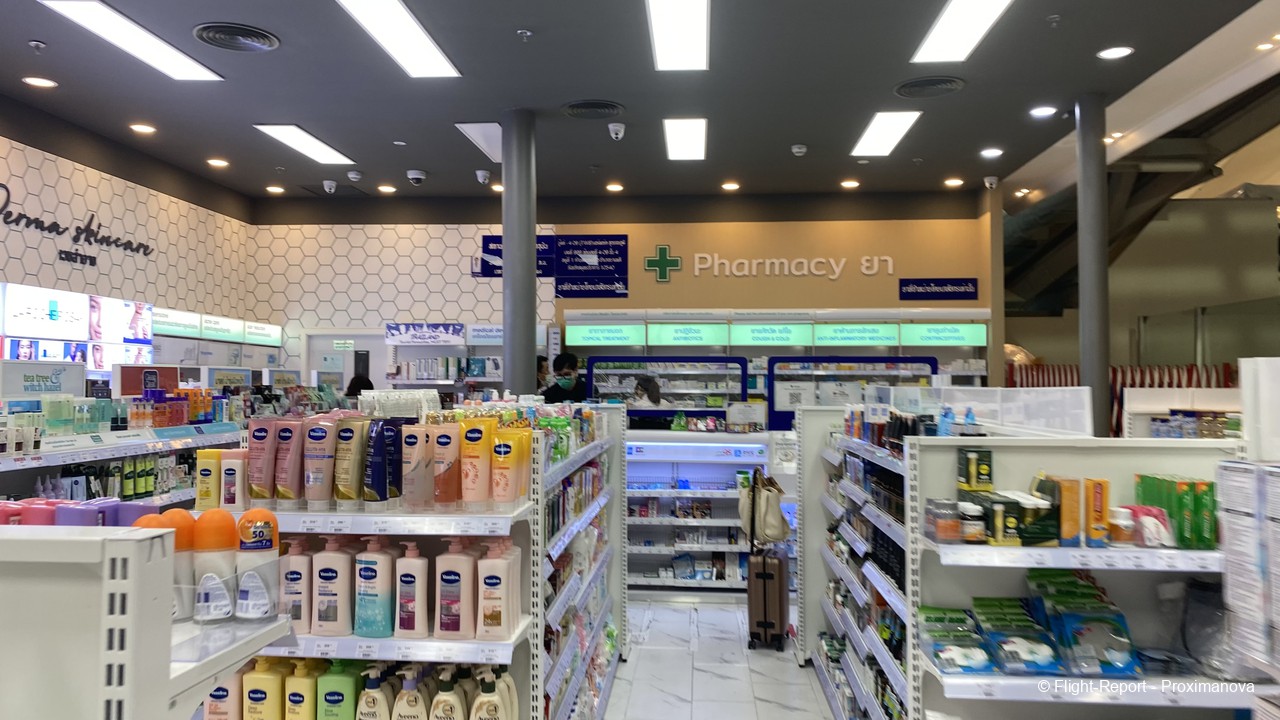
More astonishing than the presence of a Boots in Thailand was the fact that it had a local cosmetics company called Srichand! This is a very Indian-sounding name, with none of the long multi-syllable words that distinguish Thai from other languages.

Some other pictures of the top-floor retail outlets.
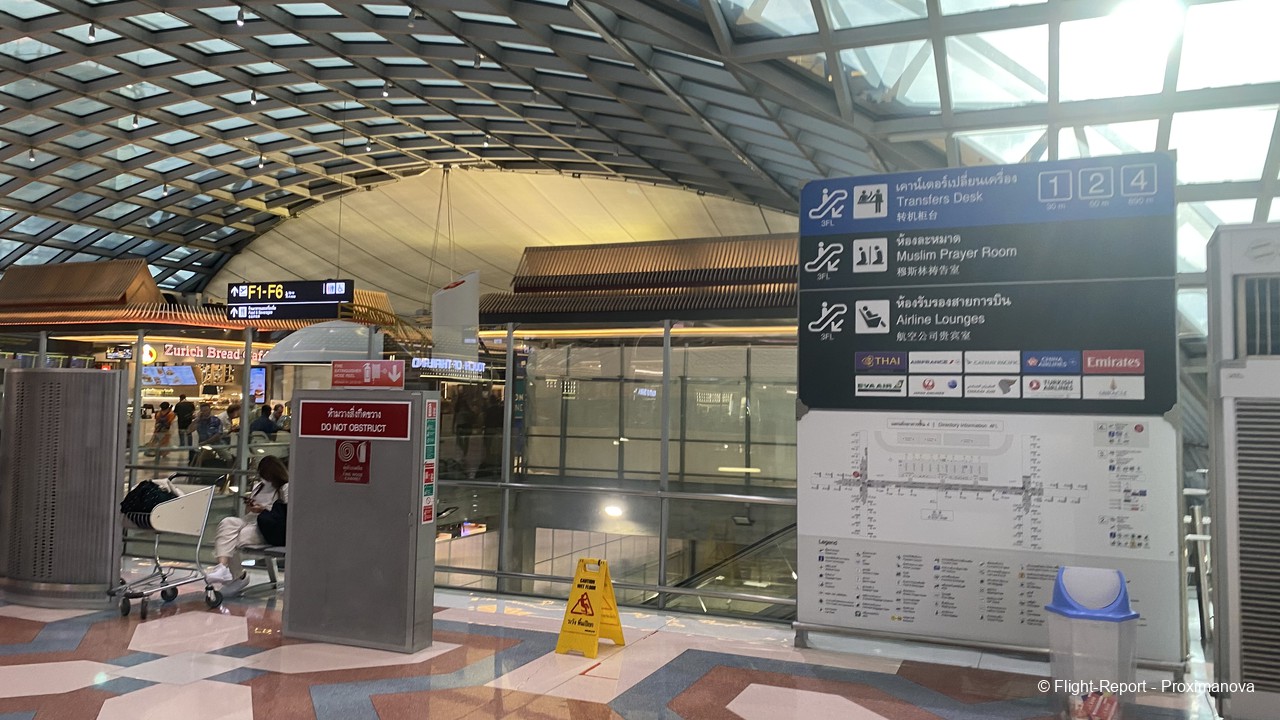

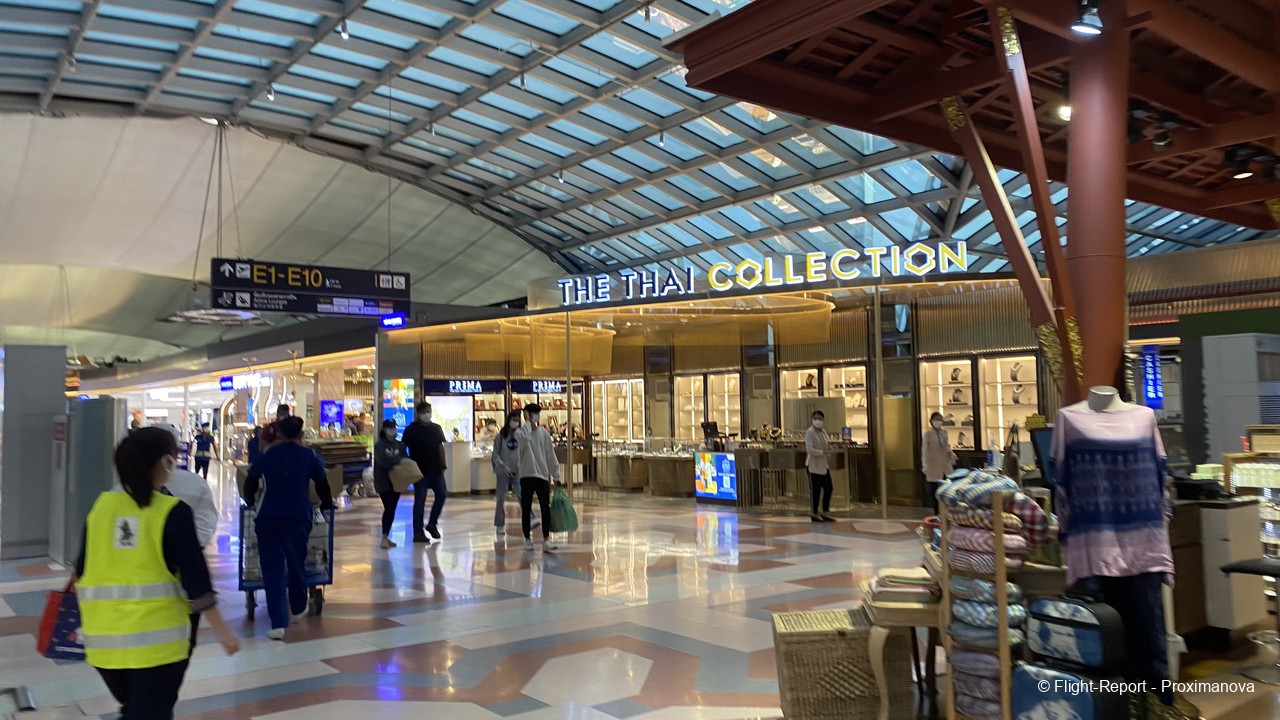
More King Power shops, including an electronics shop…
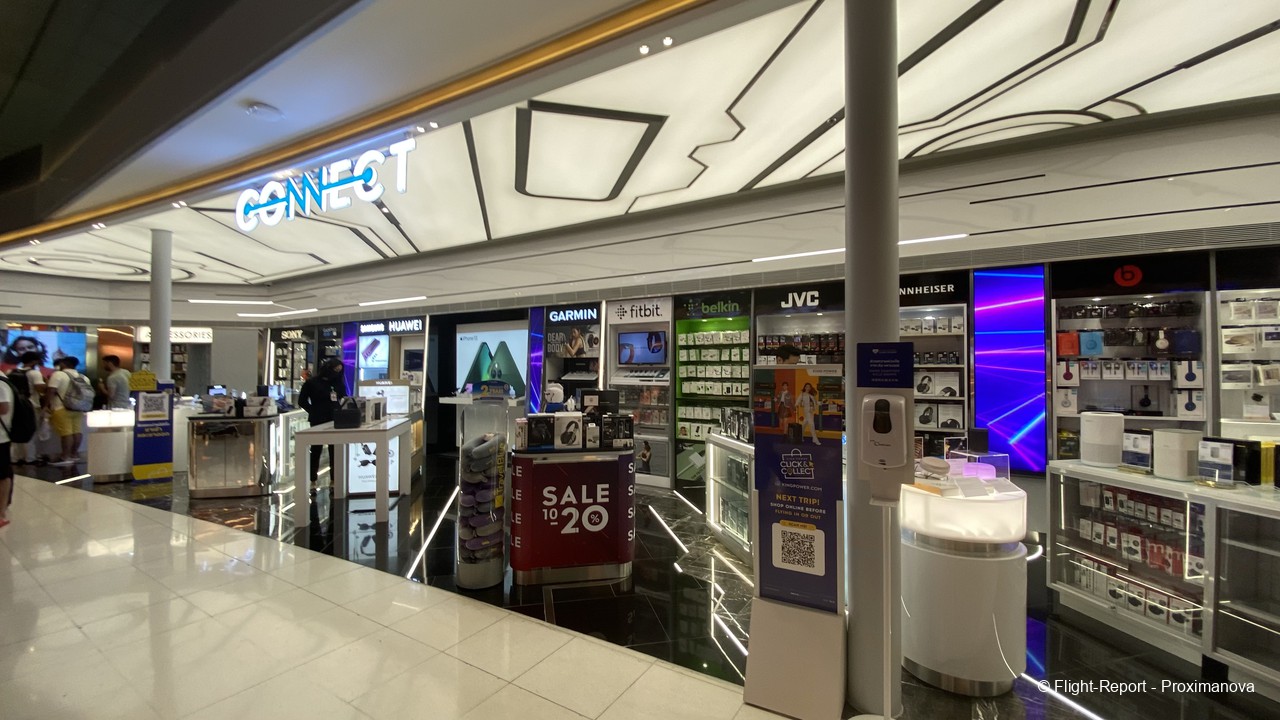
…and this shop for souvenirs and books, which I entered.
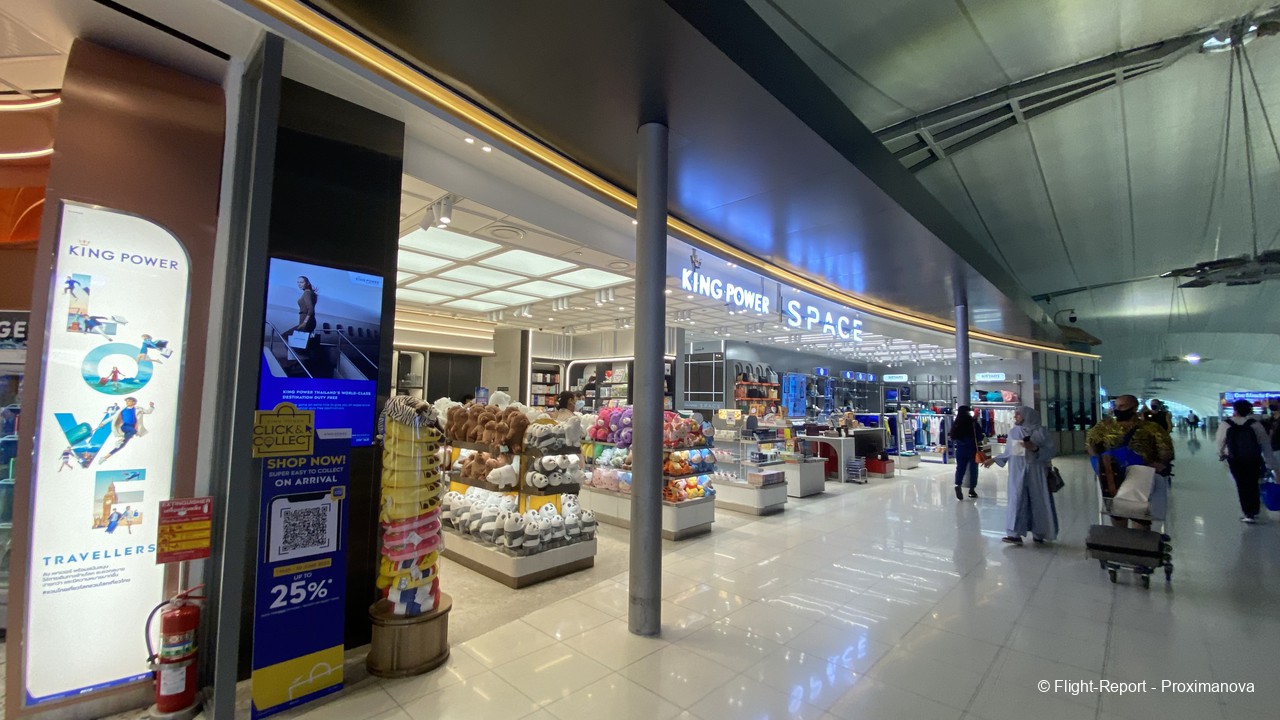
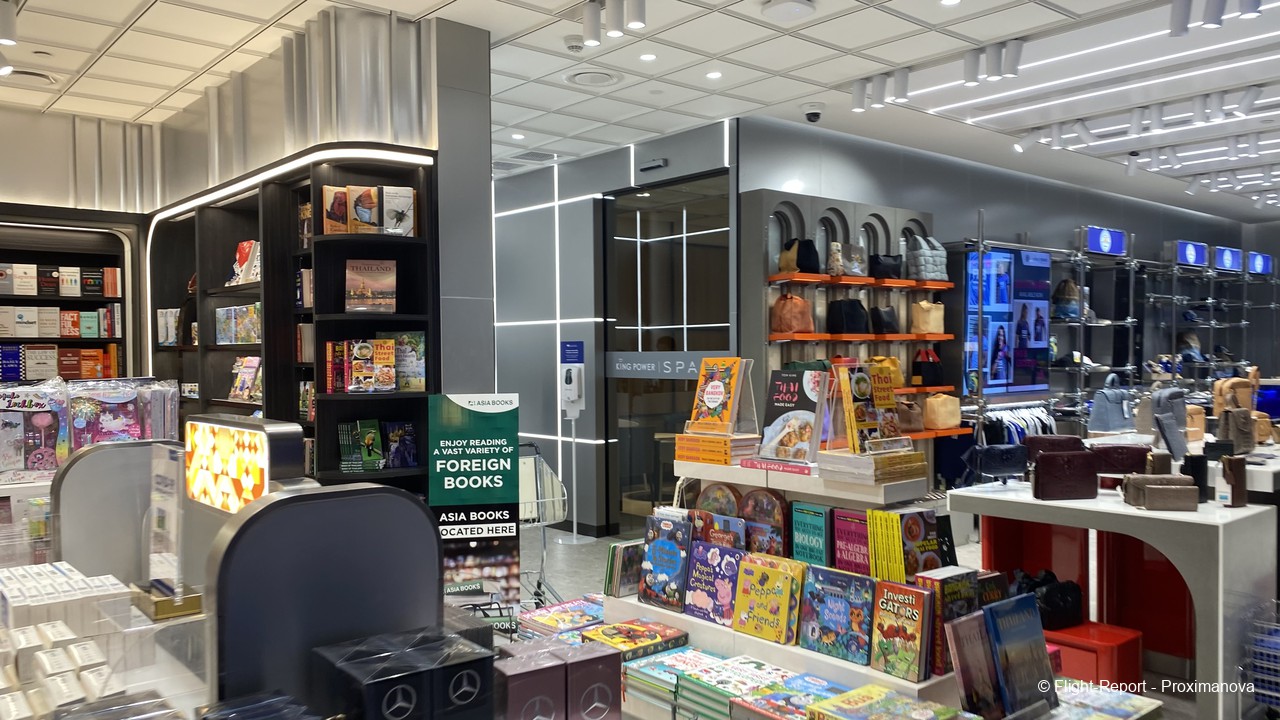
I was struggling to carry all my belongings, so I urgently needed a carry bag. Fortunately there were some colourful bags that cost a pocket-friendly THB 590. The green one is visible here, and what those colourful little things to the left are is revealed next.

As it turns out, each bag could be folded and stored in a cute little elephant! I was completely sold and bought one of these ‘awww’dorable bag-holding elephants in violet, my favourite colour and the colour of Thai Airways. I had bought a similar cute elephant (though a slightly larger, much more colourful one) from my Chiang Mai trip in 2016. I’ll share a picture of that in the instalment for my not-so-cute flight from Chennai to Bangkok.
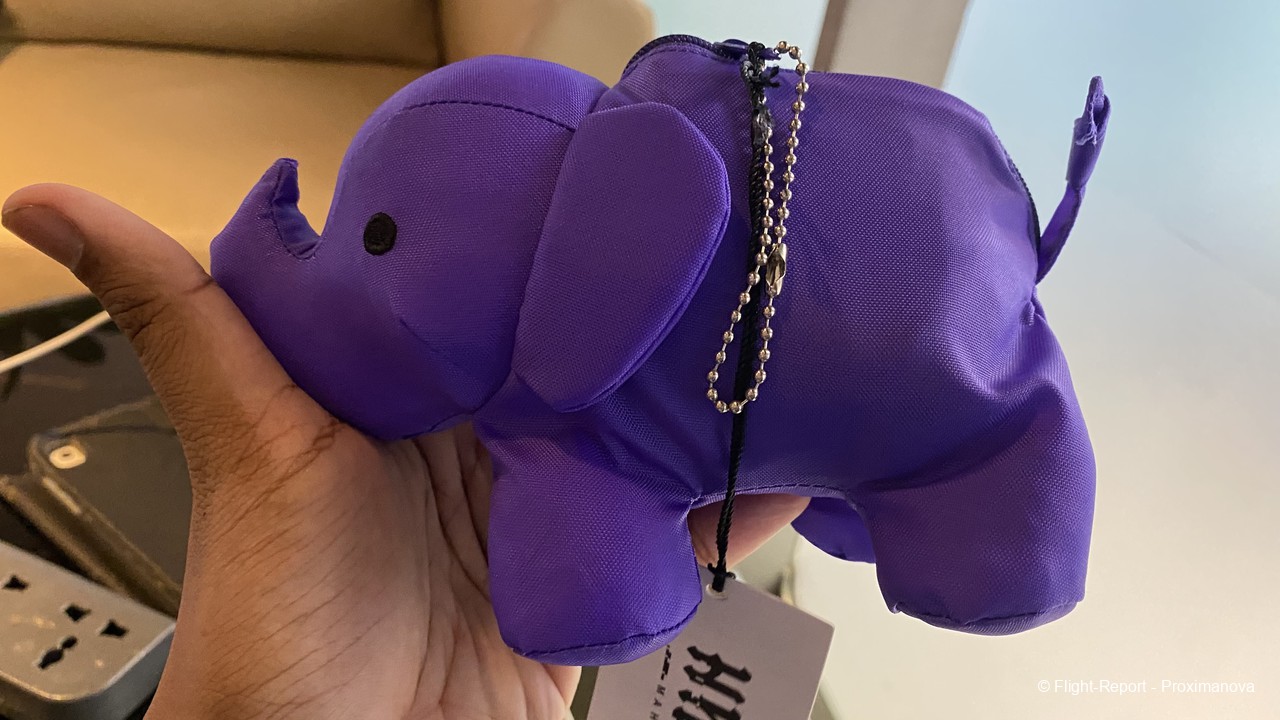
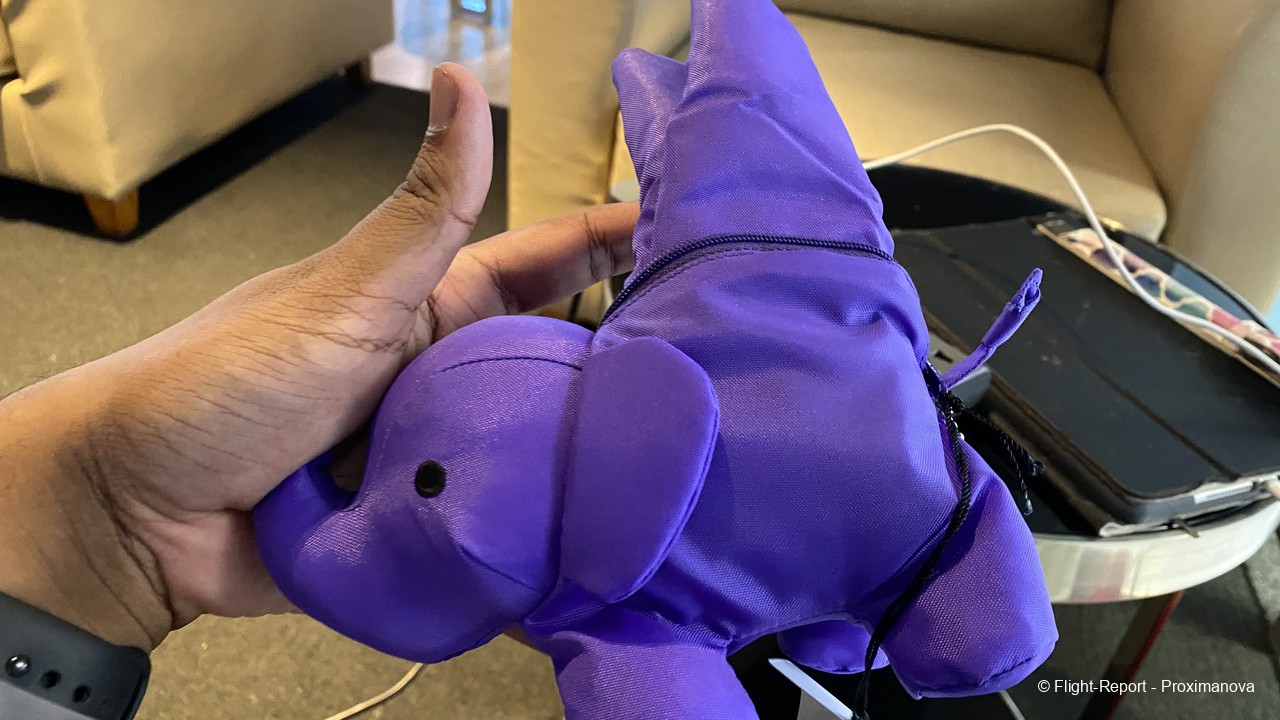

To buy the elephant, I needed to get back to the lounge to get my passport and boarding pass. Here are some pictures of the lounge at around 5:30pm or so.
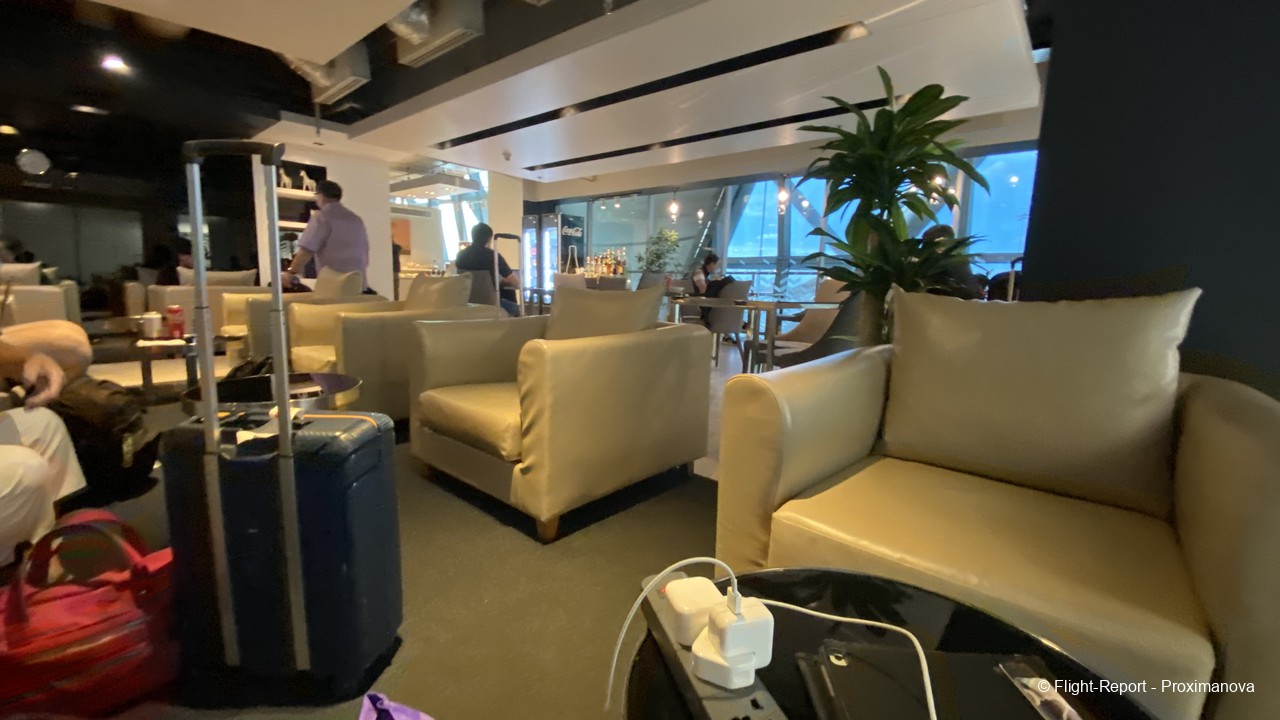
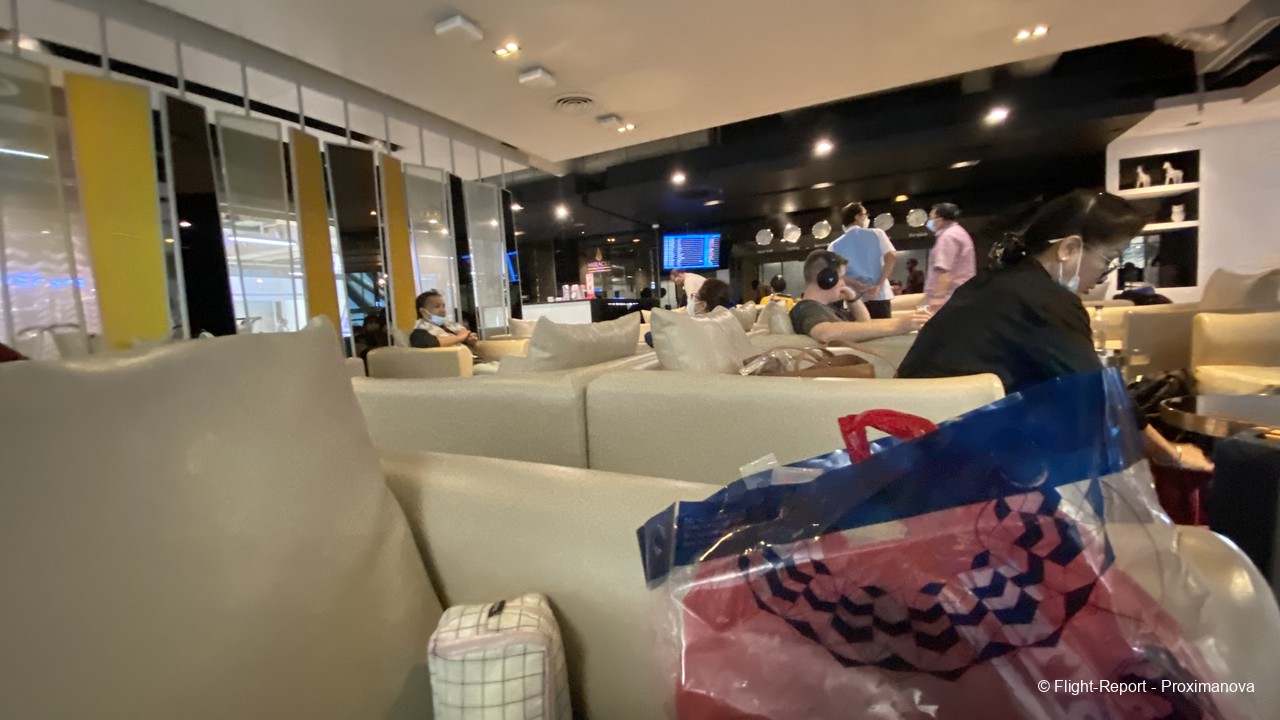
As a result of this purchase I got not one but two much-needed carry bags, with the other being a standard, sturdy King Power bag. (For the record, the friendly King Power salesgirl was called Mayuree — another Indian-sounding name.)
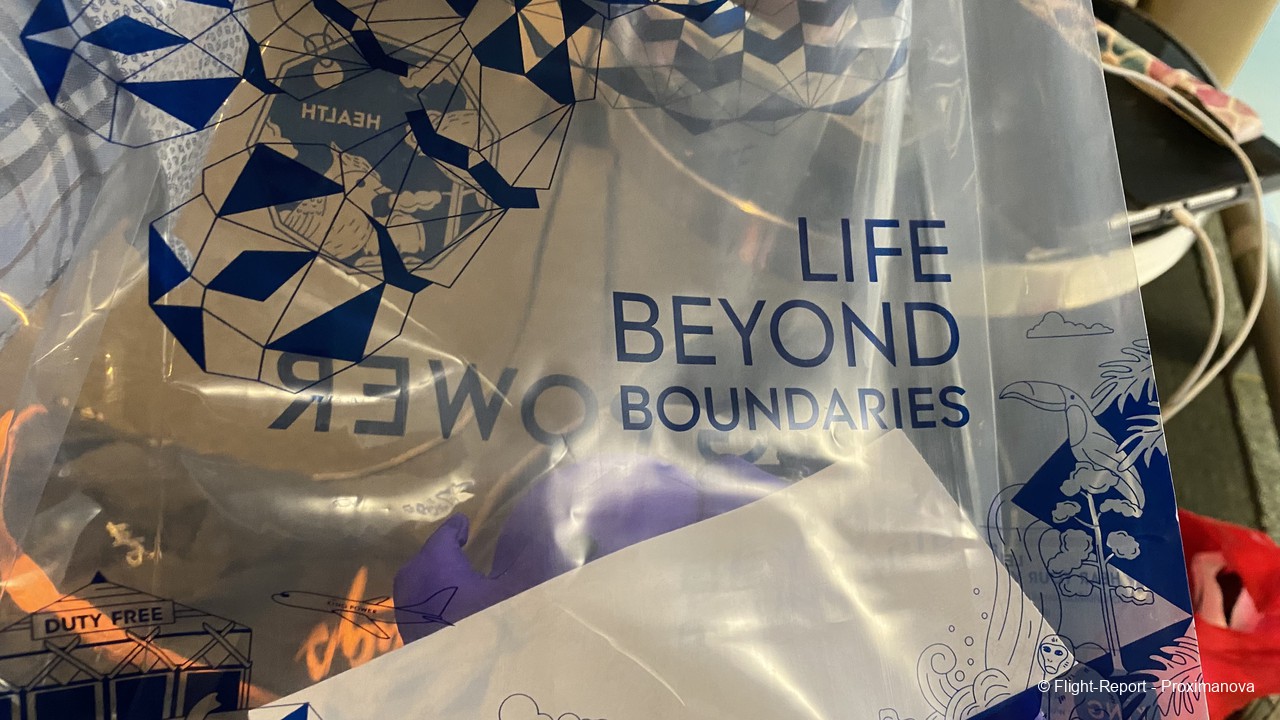
Meanwhile there was plenty of action on the apron, including these three birds from the Middle East, all 787-9s: A4O-SE (Oman Air), A9C-FG (Gulf Air) — which had followed us from Singapore as GF165 — and A6-BLT (Etihad Airways), painted in the ‘Choose Italy’ livery, which had arrived from Abu Dhabi as EY402. In the distance you can see yet another 787-9, but this time from Japan: this was All Nippon Airways’ JA890A, which had arrived as NH847 from Haneda.
Interestingly enough, A4O-SE had actually arrived from Guangzhou as WY852 and would continue to her Muscat home. The onward flight, WY851, is Oman Air’s only flight to China, and it is operated nonstop every Friday. It is only the return flight that goes via BKK — making this the future Oneworld member’s only triangular route — and I was lucky to catch an Oman Air plane here at this hour, for the only time that week. Airlines like KLM and Turkish Airlines operate far many more triangular routings.

I tried to sleep for a couple of hours, unsuccessfully at that. At 8pm I was feeling peckish and decided to have dinner. En route was this shop selling exquisite Thai silk clothes.
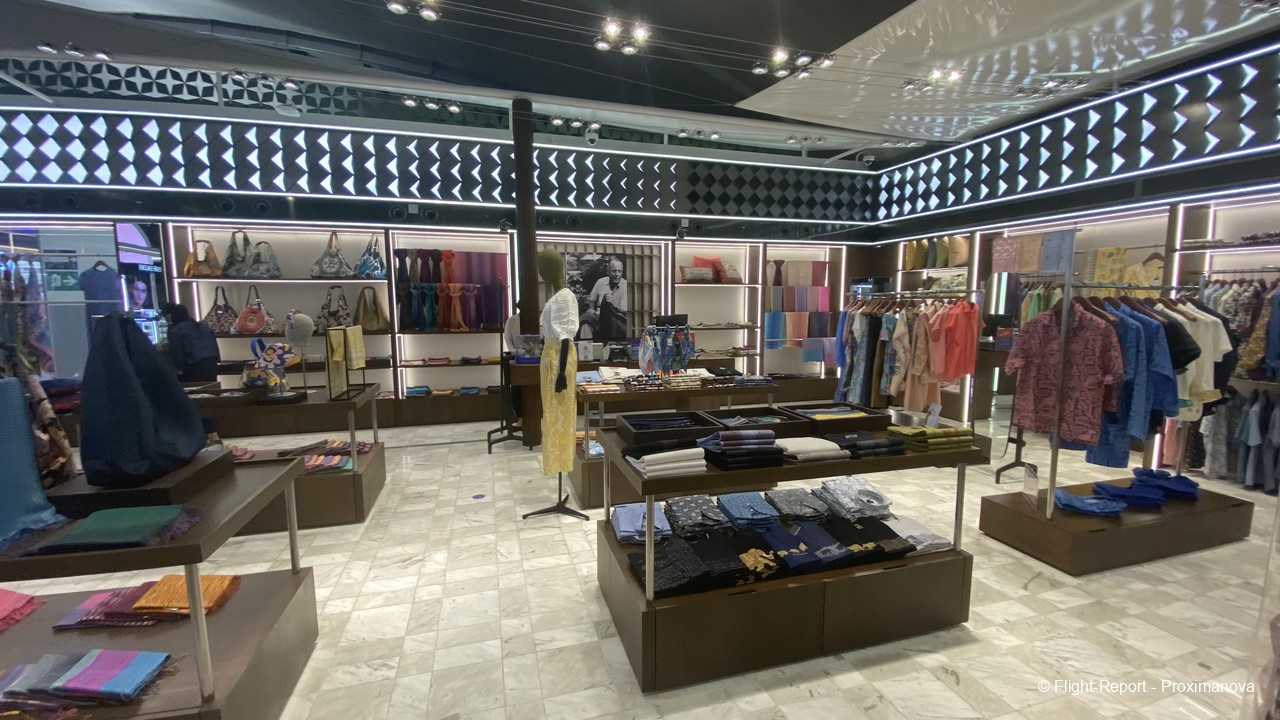
There wasn’t a deluge of food options as you will find at Changi. There wasn’t a McDonald’s yet — it was under renovation — but there was a Burger King, among others. (Interestingly, there was this article in 2011 titled McDonald’s Has A Monopoly On Airport Food In The Bangkok Domestic Terminal — which is far from the truth today.)

I decided to have dinner at Taco Bell, which is present in India — and a rare luxury when visiting malls there — but not Singapore.
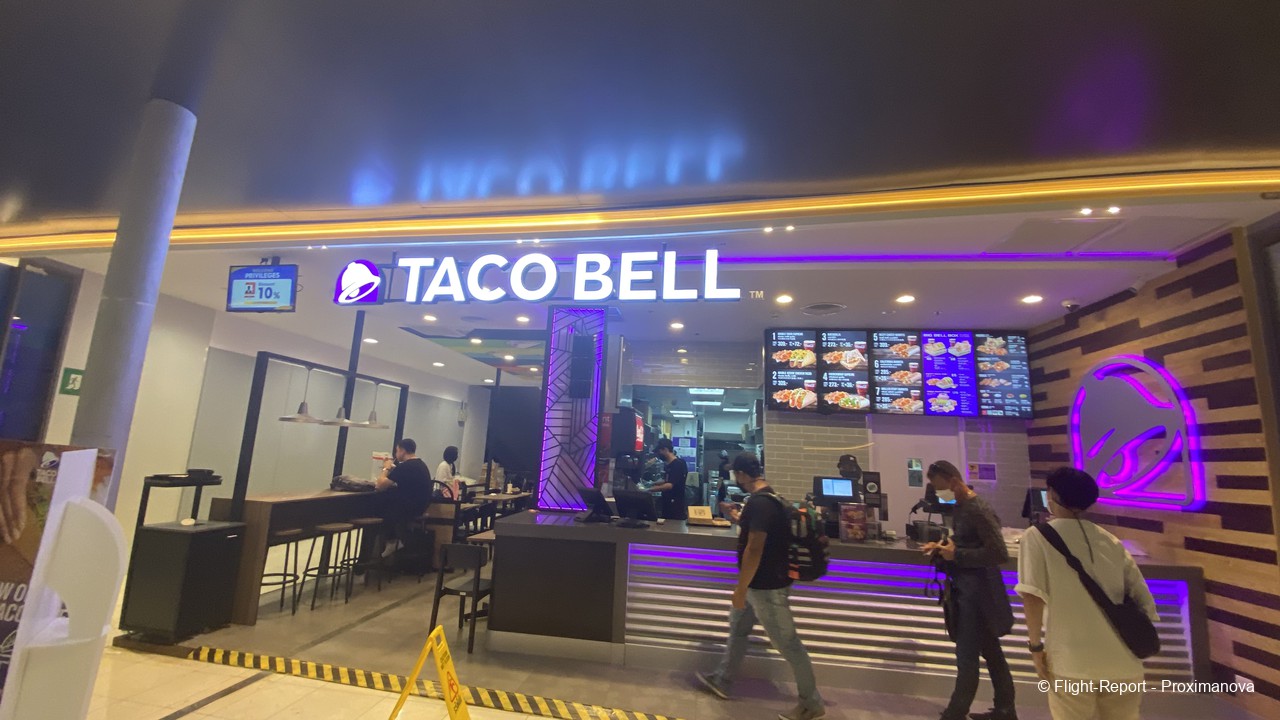
I chose a chicken quesadilla, which was also my go-to option on my last night in Dubai two weeks later. It cost THB 143, and not THB 273 as you see below, because I didn’t take a combo meal.


The Taco Bell tray paper and bag. I took these home as a keepsake.
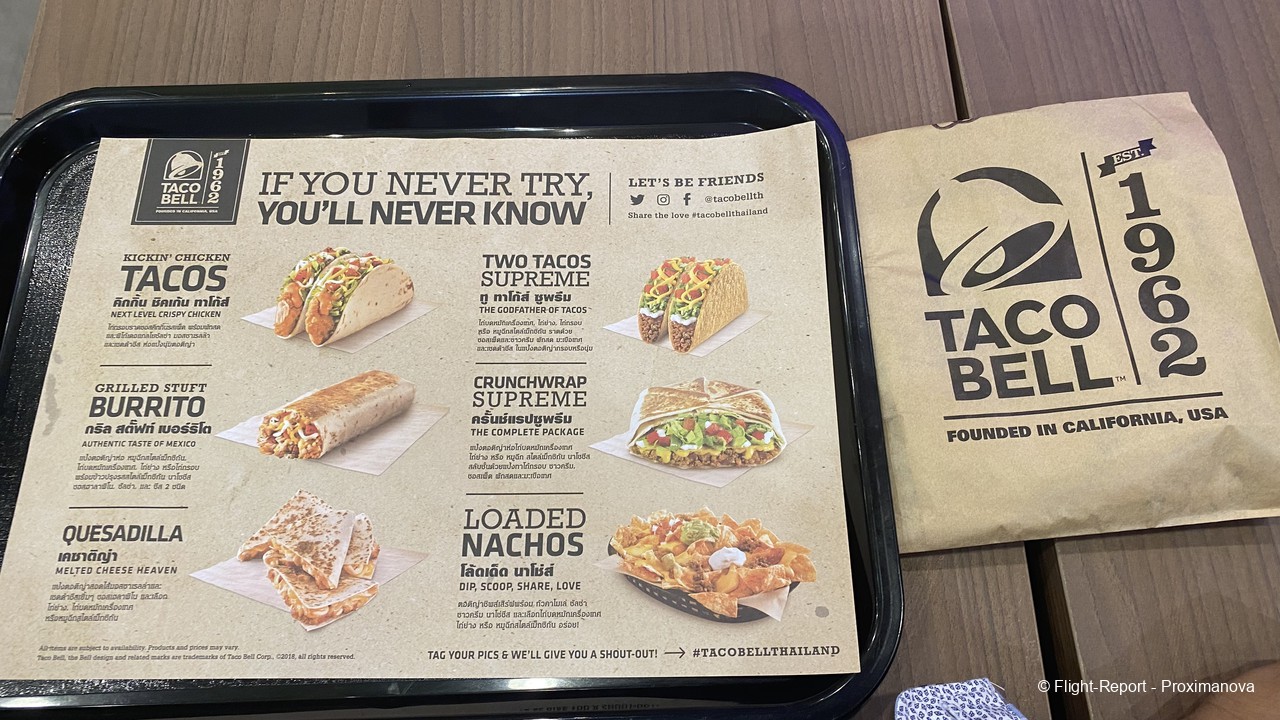
A view of the sprawling dome. After dinner I took my bags and left the lounge.

On the way to the gate, I noticed that a great many airlines have a dedicated first-party lounge at BKK. Very close to my lounge was a big Oman Air lounge, which I didn’t take a picture of. This already well-regarded boutique airline will only get more popular as it will join Oneworld in 2024. That aside, some other airline lounges are the Turkish Airlines Lounge…
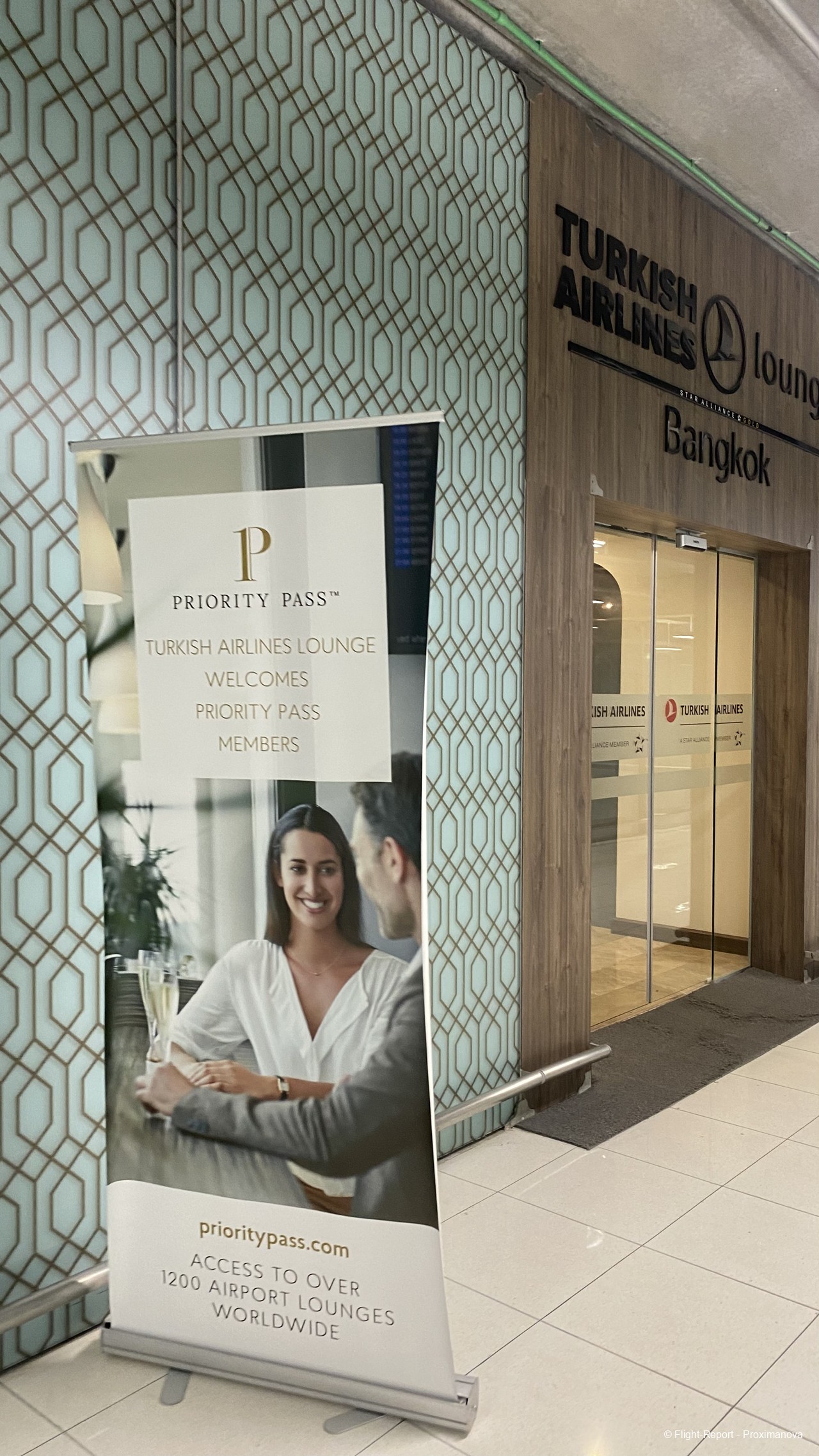
(…which still showed the defunct Slovenian airline Adria Airways as part of the Star Alliance…)
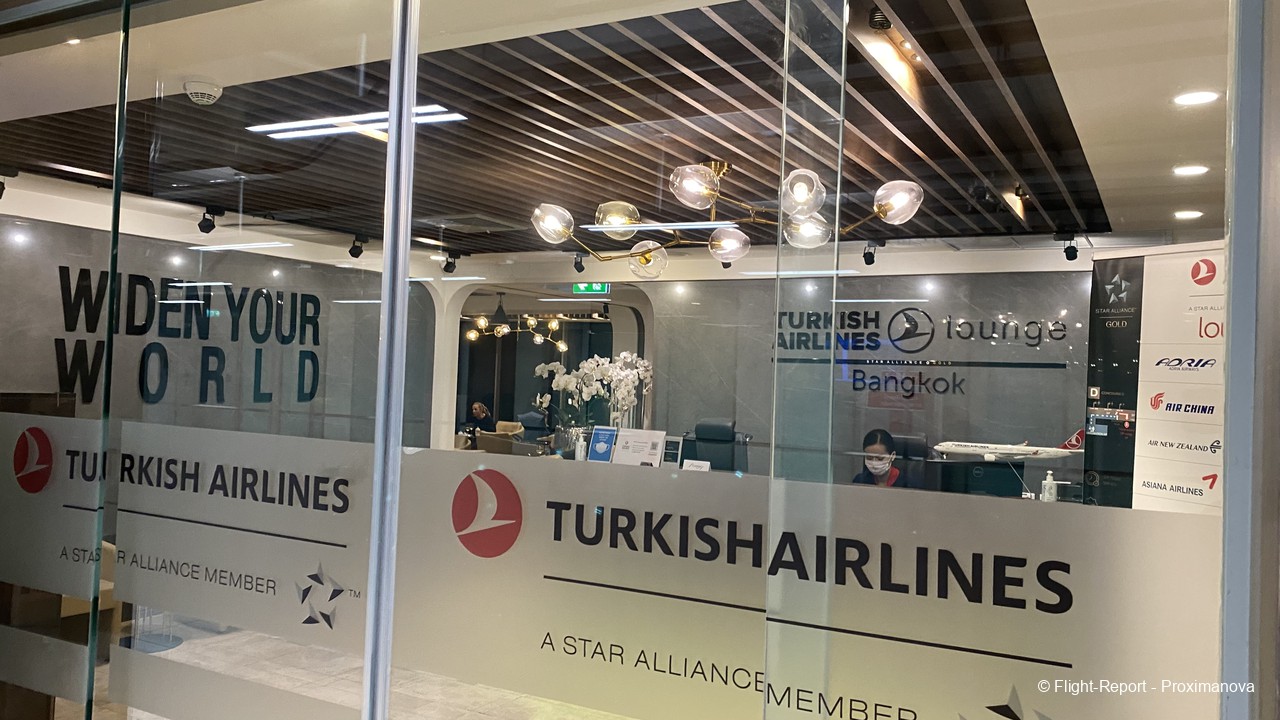
…the JAL Sakura Lounge…
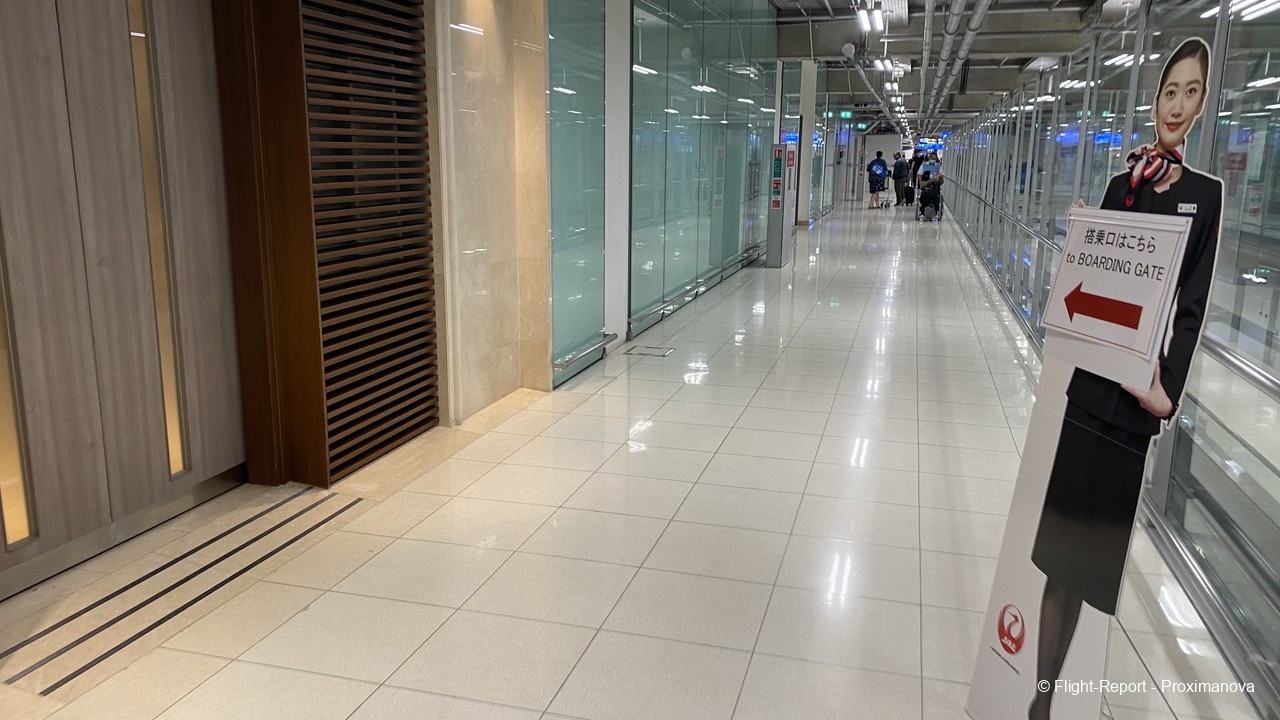
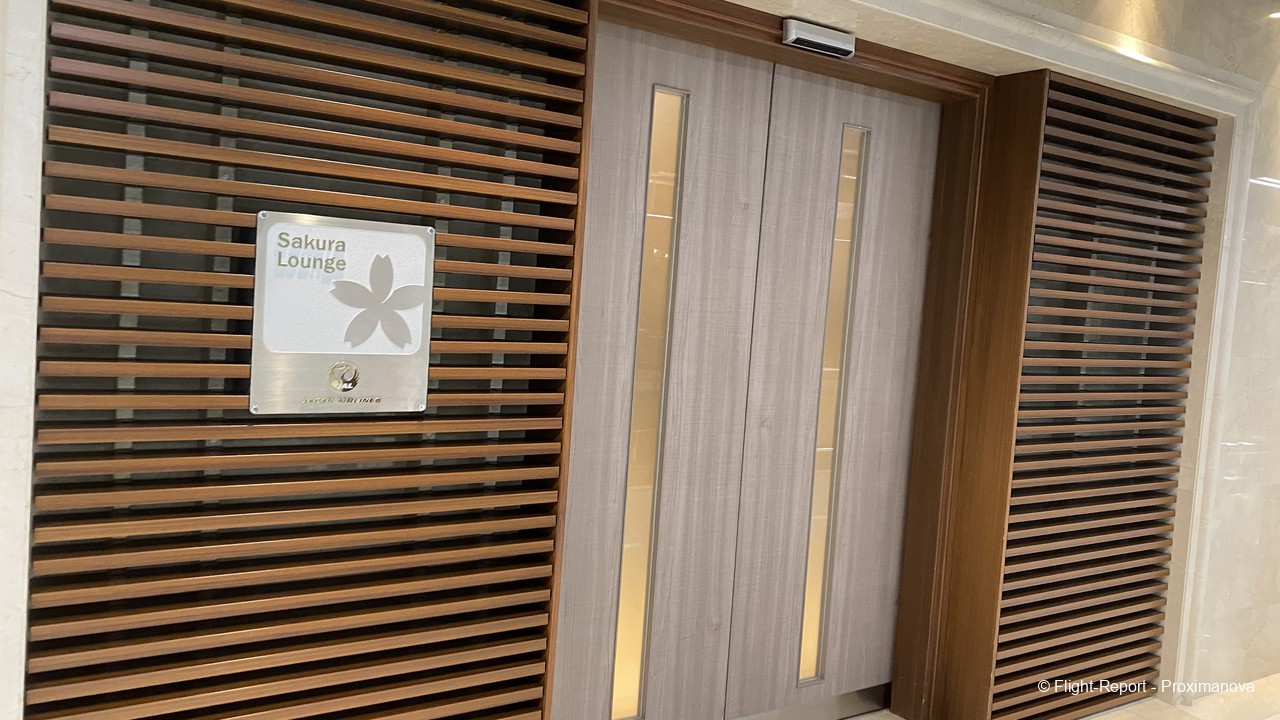
…and the China Airlines Dynasty Lounge, which was closed. That makes one from each alliance.
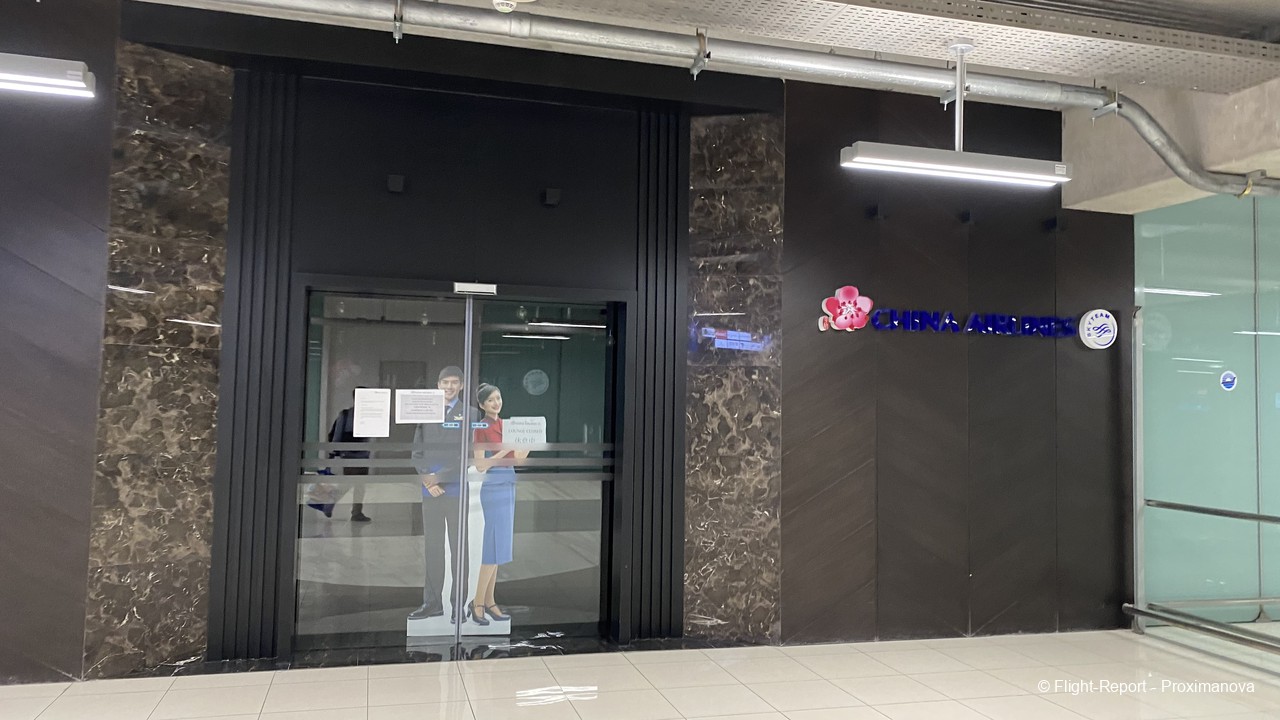
There was also the Bangkok Airways Blue Ribbon Lounge, which is complimentary for ALL passengers of that airline — a concept unheard of elsewhere. It was closed, though.

No communication causes tension!
It was around 8:30pm when I reached Gate D6. There was another ad for dtac, the telecom company owned by Norway’s Telenor Group. Not that purchasing a SIM card for my short transit would help, but the lack of communication (thanks to the airport’s Wi-Fi disconnecting repeatedly) was a source of great headaches as I boarded the flight.

The arrivals board. The middle panel has flights mostly from Northeast Asia, especially Tokyo. To the right are some flights from India, from the domestic giant IndiGo (6E) and its smaller rival SpiceJet (SG), as well as TG316 from Delhi. BKK is SpiceJet’s only eastern Asian destination at present, but IndiGo has many more, and in 2019 even served places as obscure to Indians as Chengdu and Ho Chi Minh City before the pandemic stopped that.
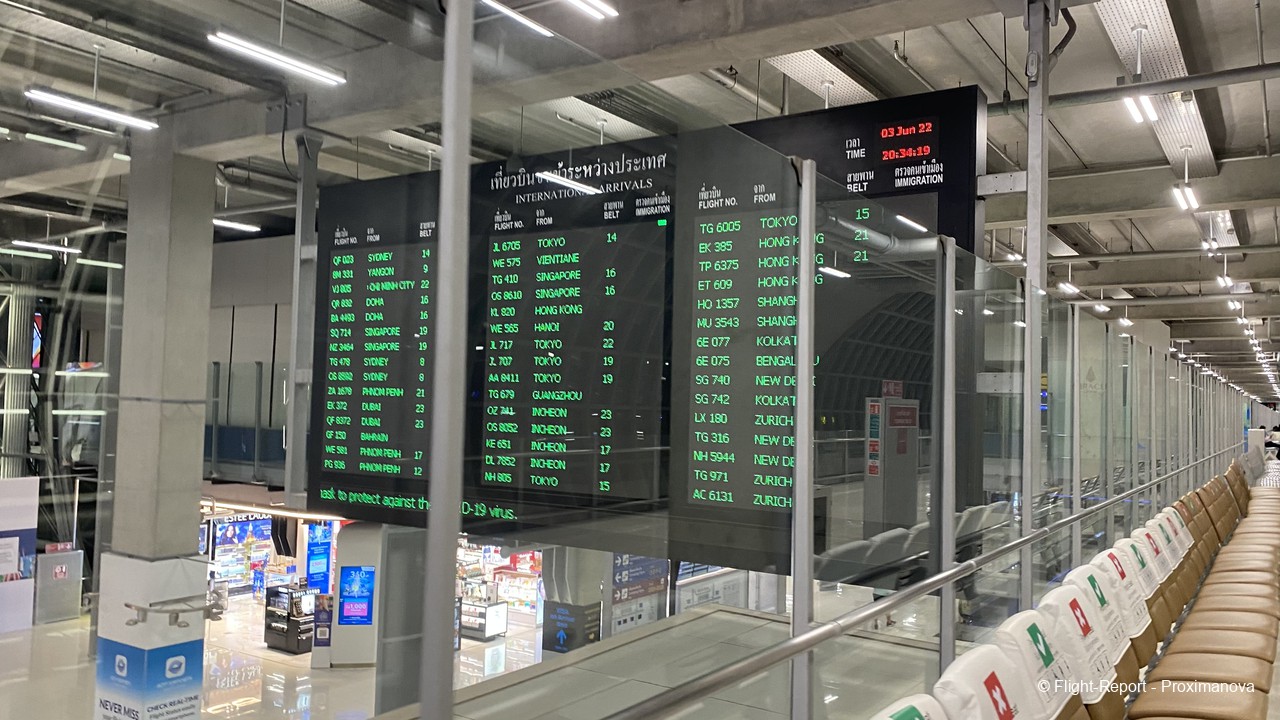
I was shocked to see this flight to Jebel Ali (a.k.a. Dubai World Central/DWC). It isn’t even a scheduled flight and cannot be tracked on Flightradar24. Perhaps it never operated at all?

At BKK, each gate has a downward staircase leading you to the departure floor. I have never seen such a thing at any other airport.
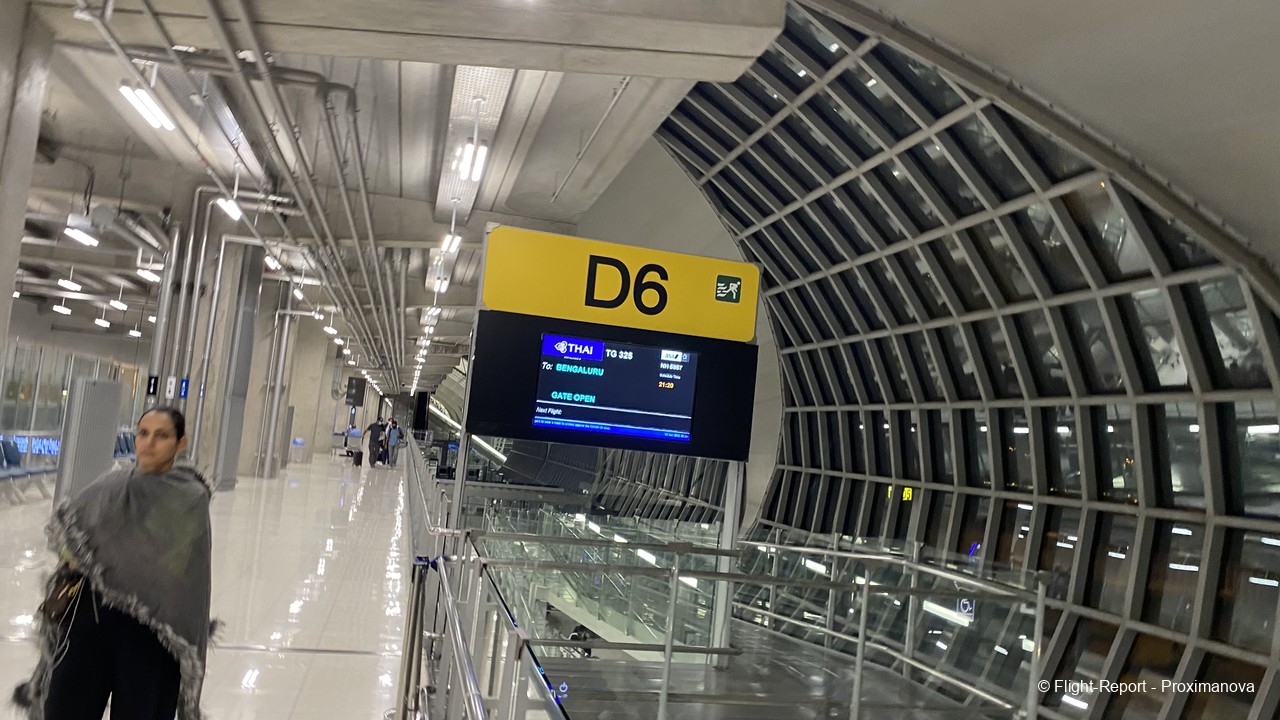
I must mention again that it was only with great difficulty, and after multiple exasperated attempts, that I was finally able to snag a Wi-Fi connection, thanks to using my secondary Android phone as a hotspot and connecting my iPhone to that. I managed to WhatsApp my parents momentarily, and find out the aircraft operating the flight to BLR, before I was called to board and lost even that signal. This is a serious area of improvement for BKK, and it urgently needs to address its Wi-Fi disconnection issues.
The crowd on the BLR flight consisted largely of ordinary-looking South Indians, much like any flight to Chennai, though there were also a few well-heeled Hindi-speaking families. Boarding was called from 8:45pm onwards.
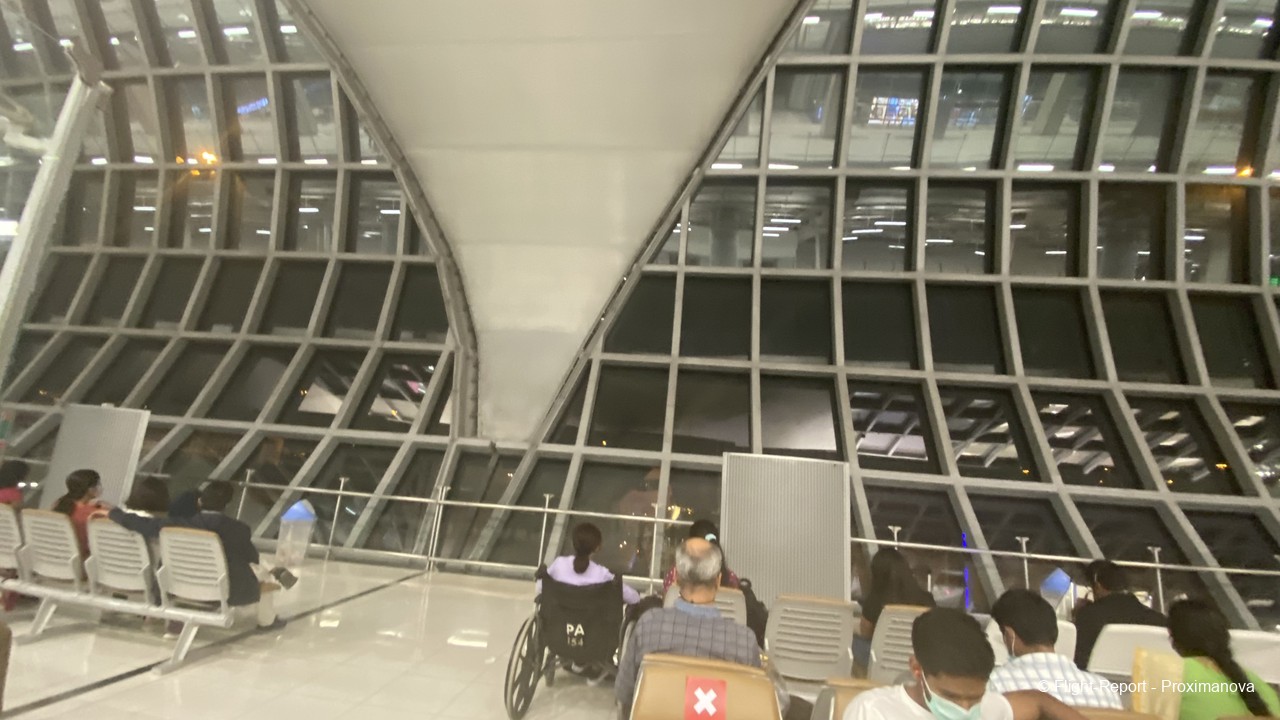
I peeped through the dotted window and spied with my little eye the registration next to the nosewheel: HS-THJ, entitled Pho Sai. Flightradar24 didn’t show this yet, but she had operated the previous day’s flight to BLR as well.
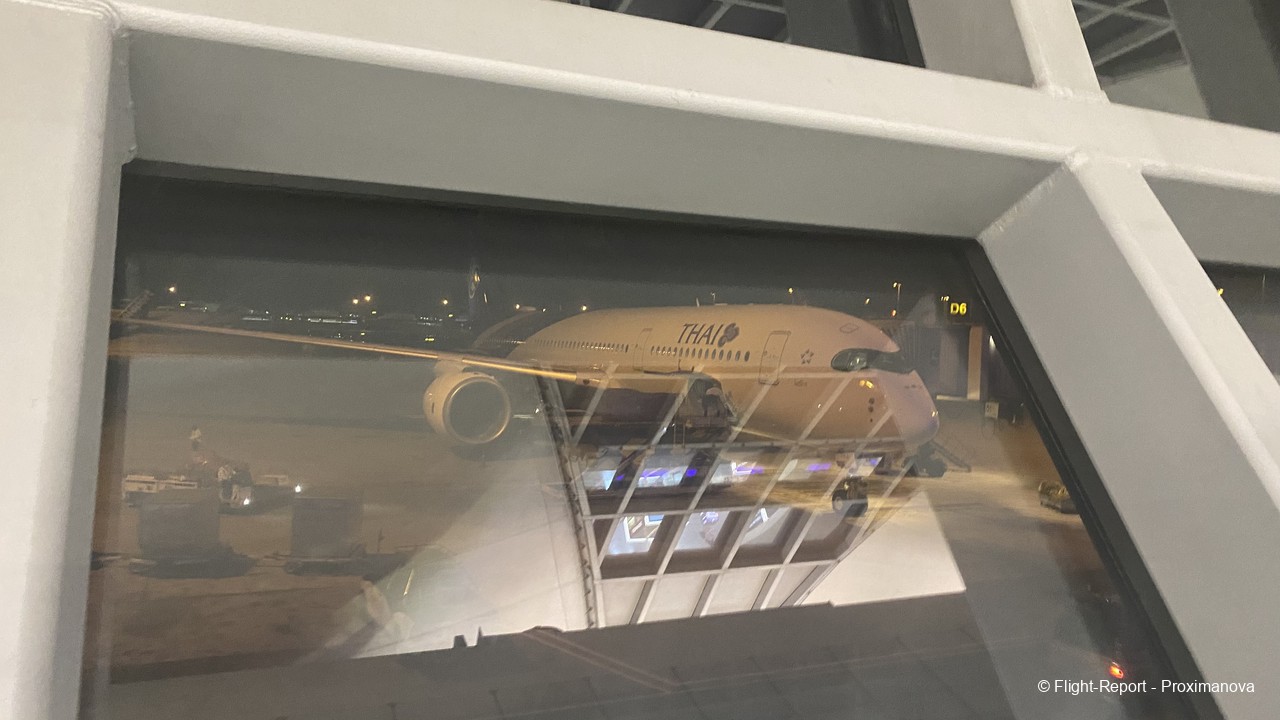
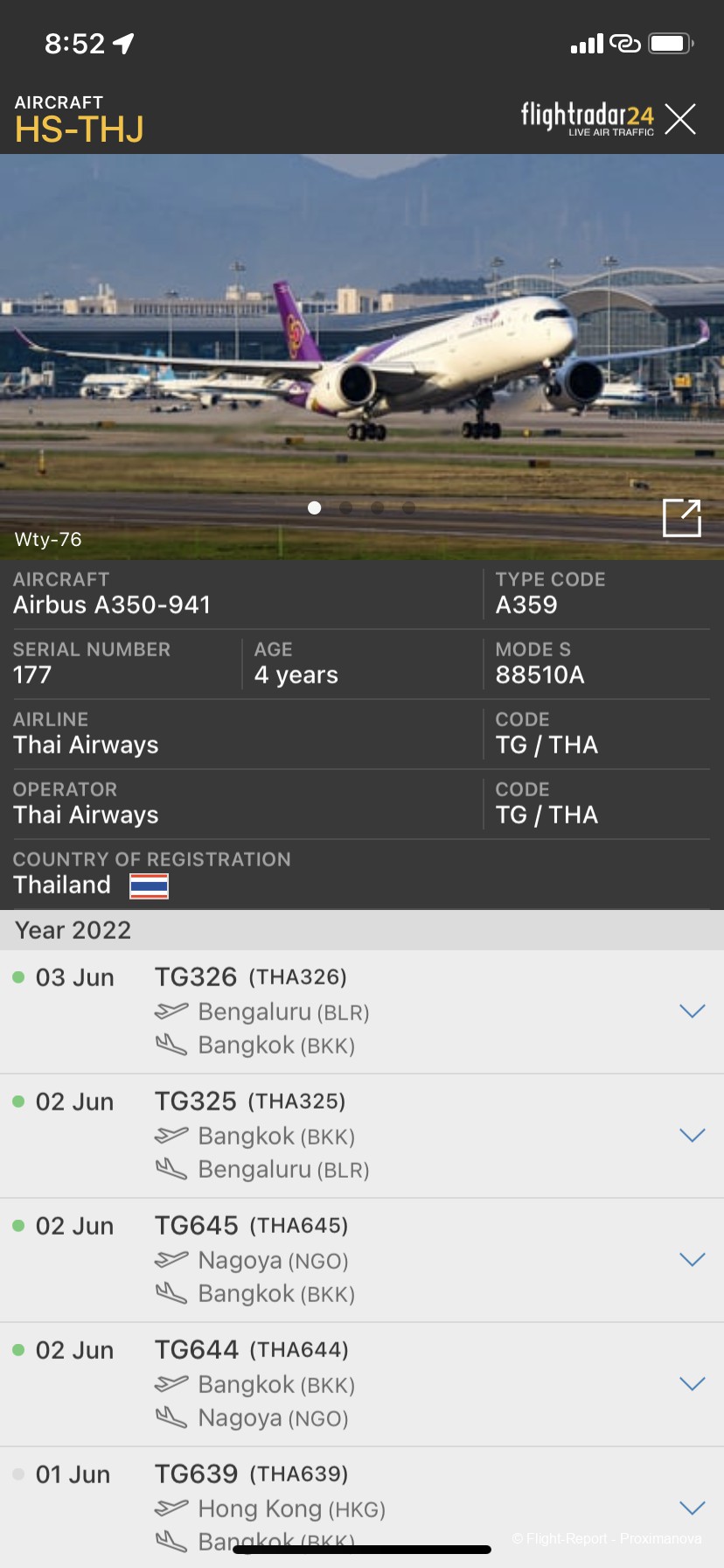
En route to the plane, I saw TC-LNE next door. This was a Turkish Airlines A330-300 that had been resting for much of the day. She had arrived from Istanbul that morning as TK68, and it was only much later that night that she returned to IST as TK69.

If HS-THF was a first-class experience, HS-THJ was going to be like business class! But it will be many more years before I start turning left. For now, ordinary folks like me could only hope to experience the so-called ‘poor man’s business class’: three empty seats in a row. And this time around, I did!
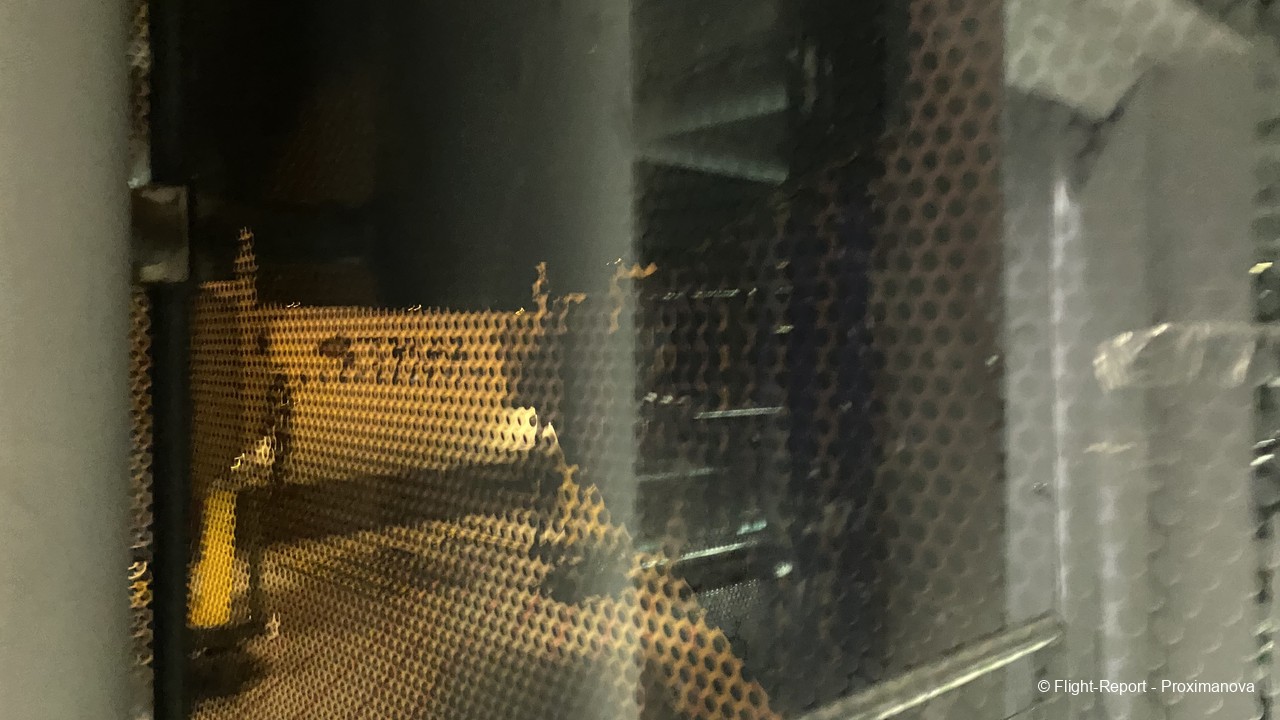
The flight
Flight: Thai Airways International TG325/THA325
Date: Friday, 3 June 2022
Route: Bangkok Suvarnabhumi (VTBS/BKK) to Bengaluru Kempegowda (VOBL/BLR)
Aircraft: HS-THJ, Airbus A350-900 XWB, named Pho Sai
Age: 4 years (first flight: 8 January 2018, delivered: 26 January 2018)
Seat: 39K (window)
Boarding: 8:55pm Indochina Time, UTC +7 (7:25pm IST, UTC +5:30)
Departure: 9:25pm Indochina Time, UTC +7 (7:55pm IST)
Arrival: 11:25pm IST, UTC +5:30 (12:55am UTC +7)
Duration: 3 hours 30 minutes
Notes:
Second flight on Thai Airways
Second flight on an A350/an Airbus widebody
First flight TO Bengaluru (my only other flight to BLR so far was from BLR to MAA on IndiGo in October 2015)
First international flight to India to an airport other than MAA
First flight not involving SIN or MAA since 2018
Going home, but not really home
I peeped into the Royal Silk business class cabin and snapped a discreet picture.
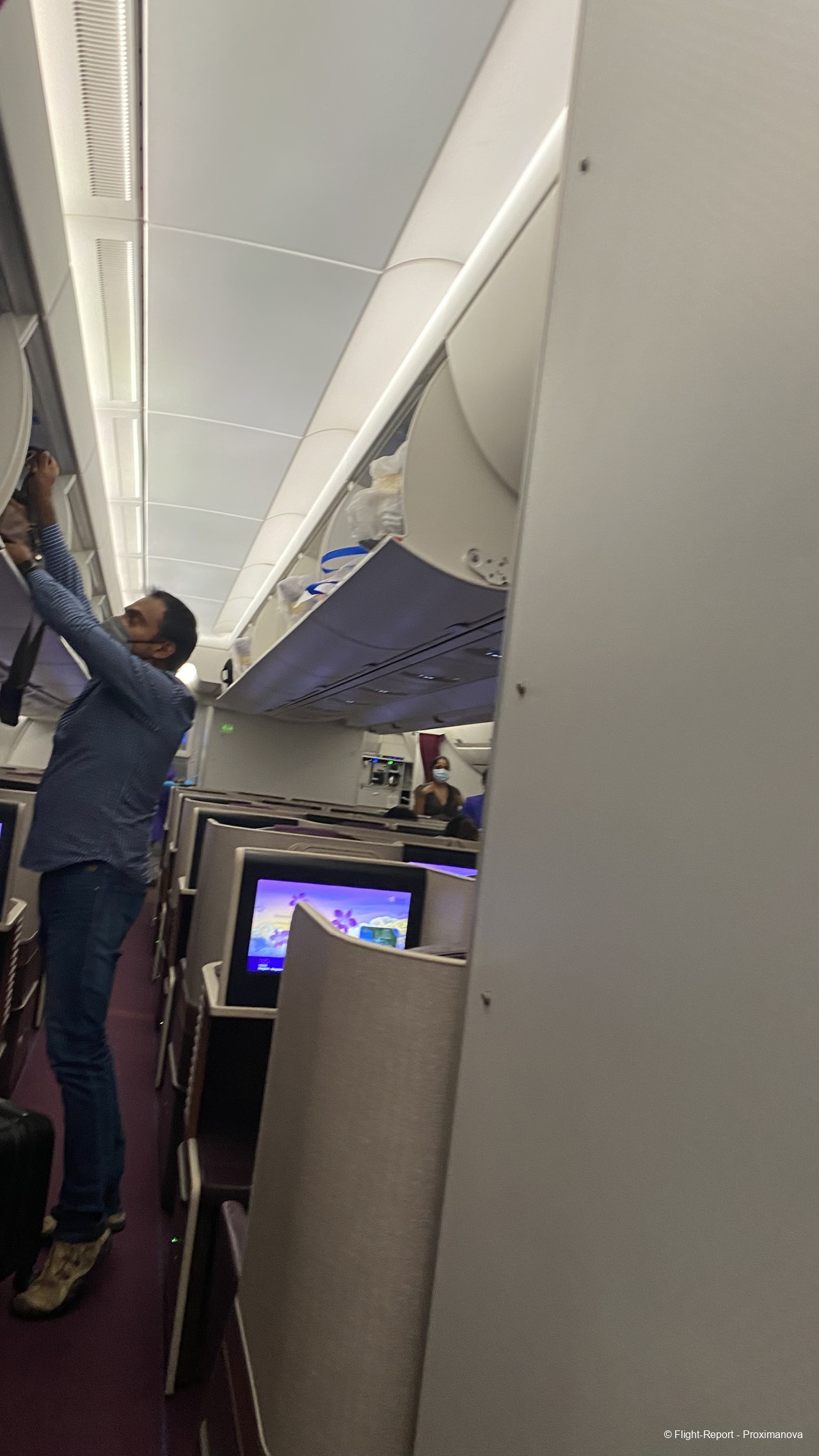
I proceeded to my seat, 39K. Once again, a crisp HD screen awaited me. This is about as fresh and cutting-edge as it gets on Thai Airways.
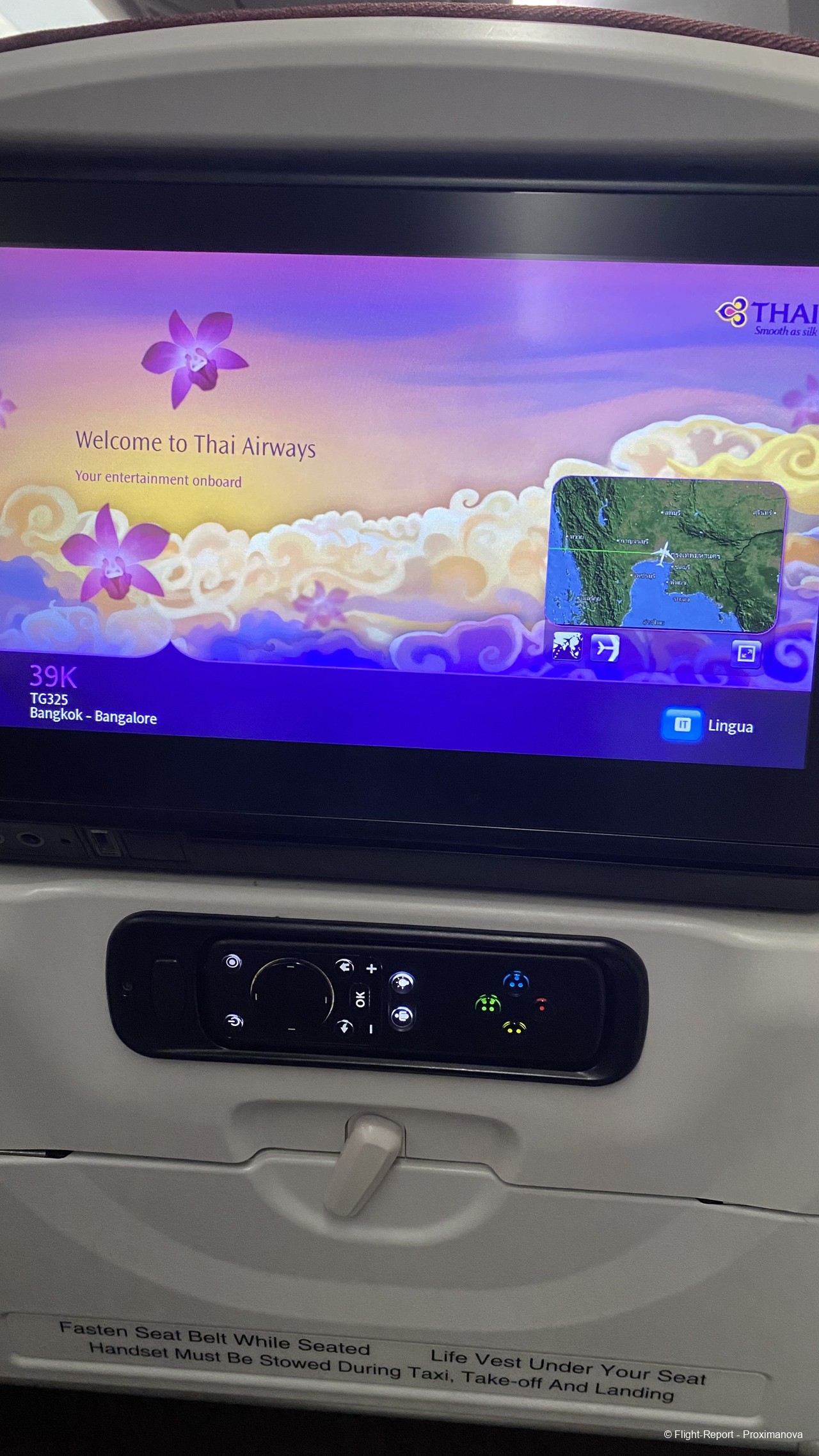
Can you spot the tiny ANA 787-9 in the distance?
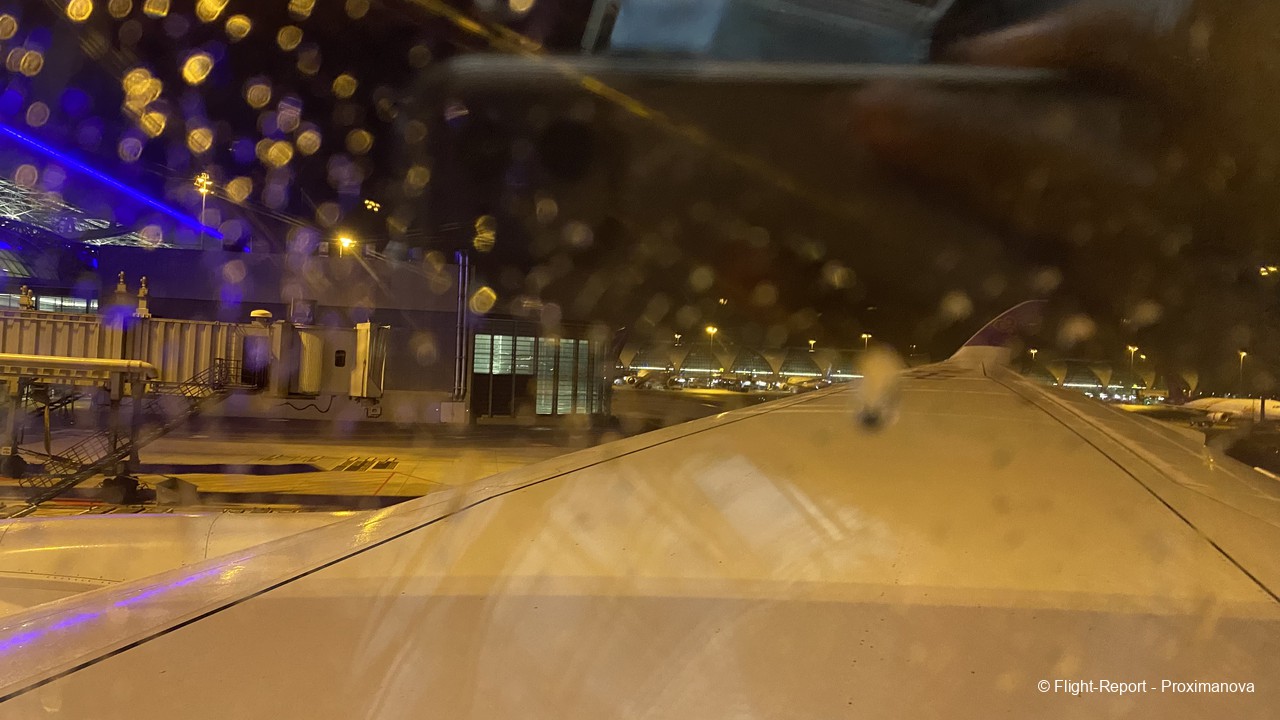
Once again, a guide to the IFE remote.

The safety video was now played. We started pushback at around 9:15.
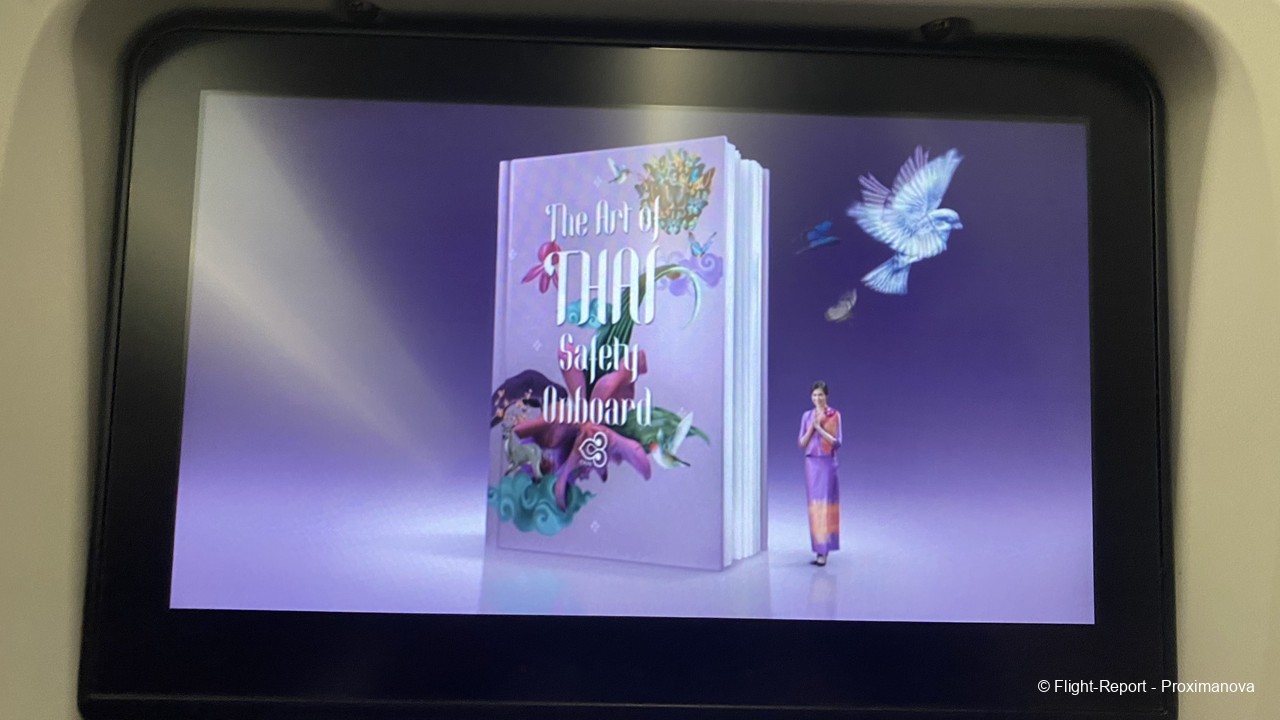
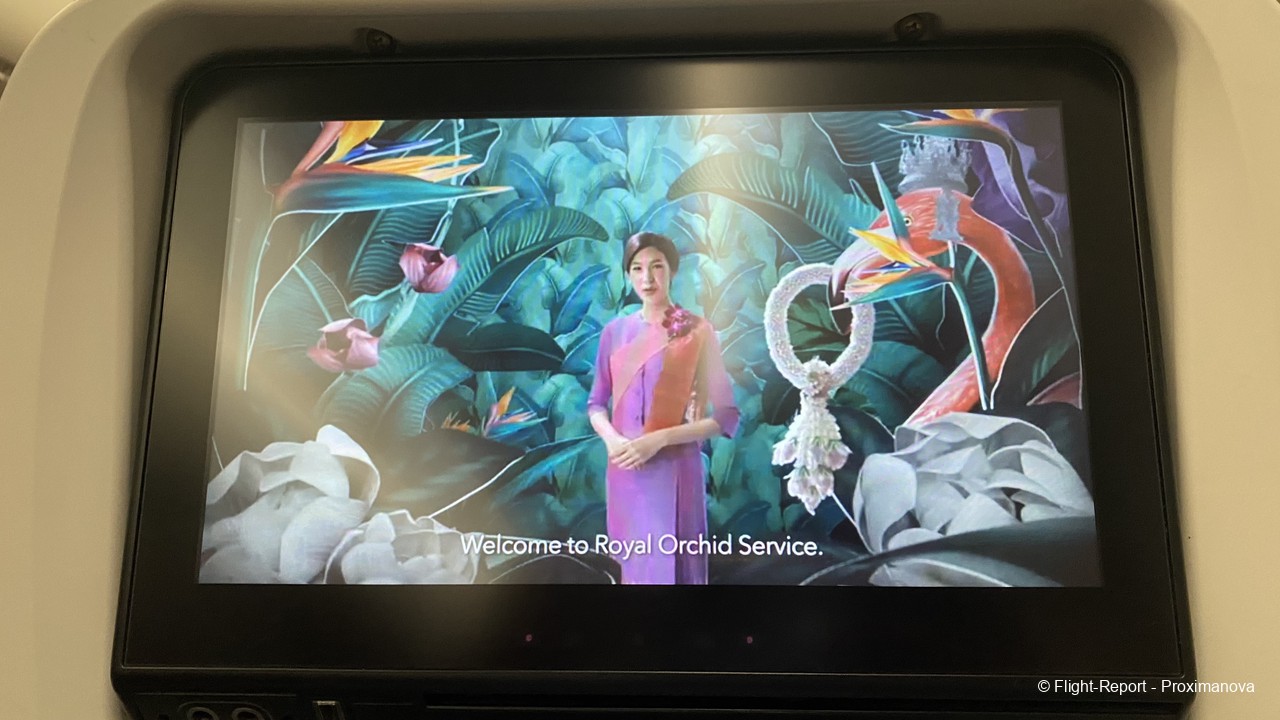
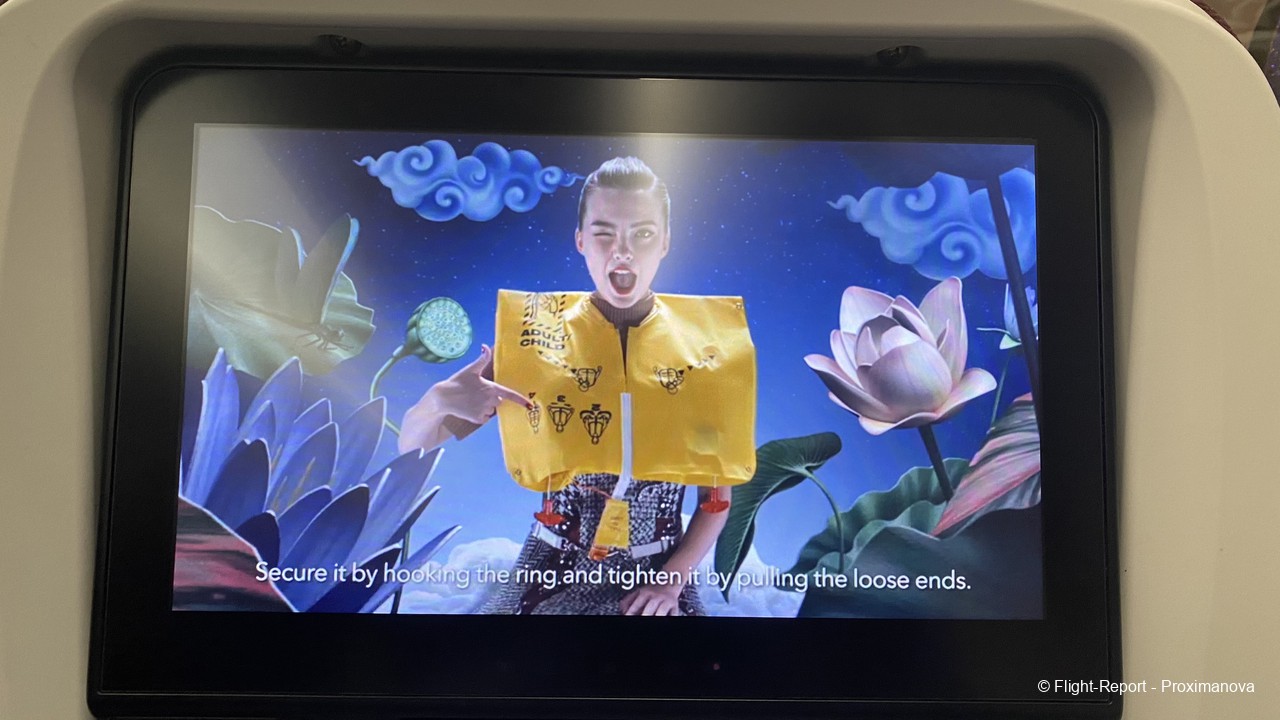
A view of the entire seatback while the safety video was playing.
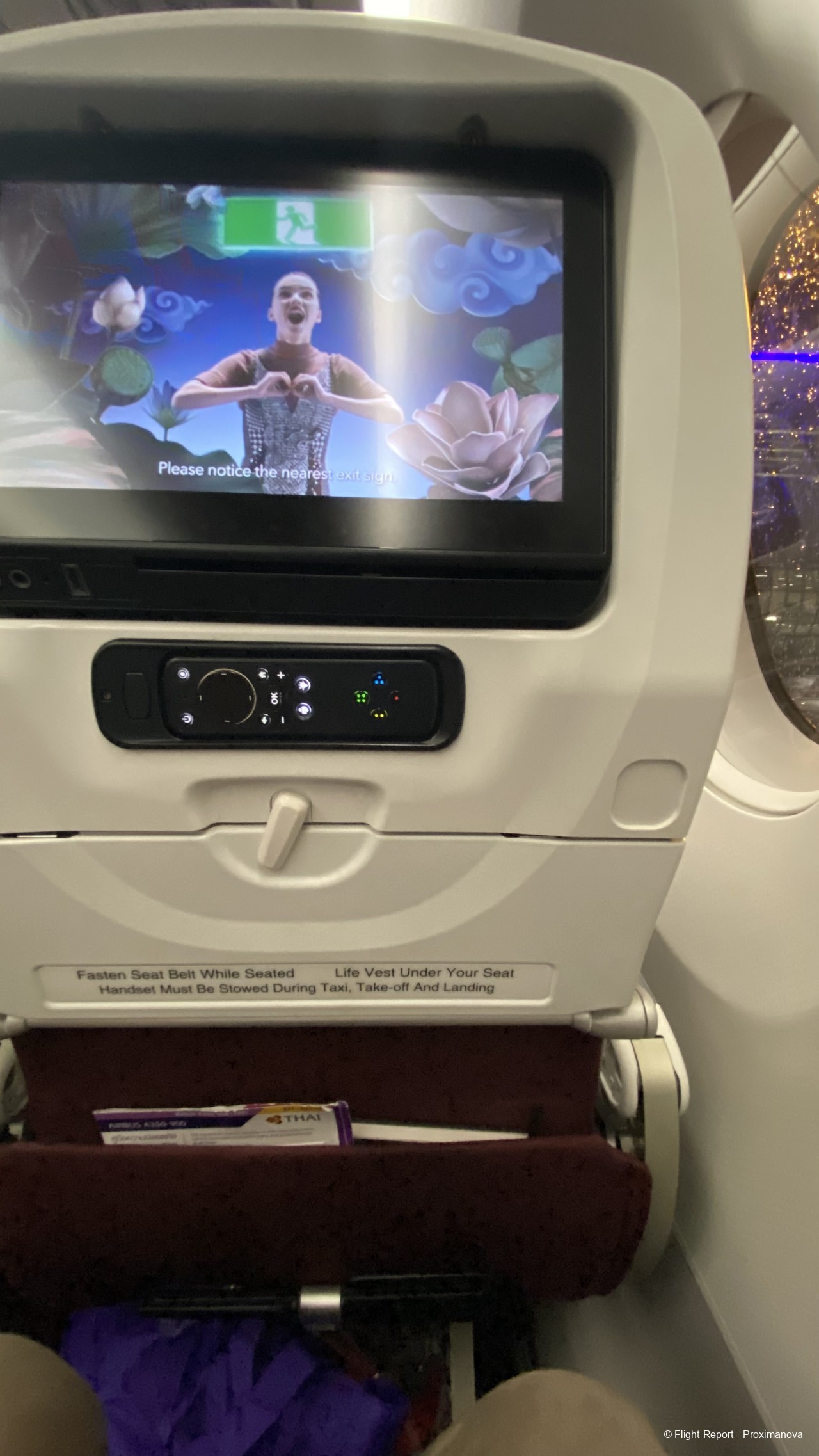
To my surprise, both seats to the left remained empty after boarding completed — I had got the ‘poor man’s business class’ for the first time!
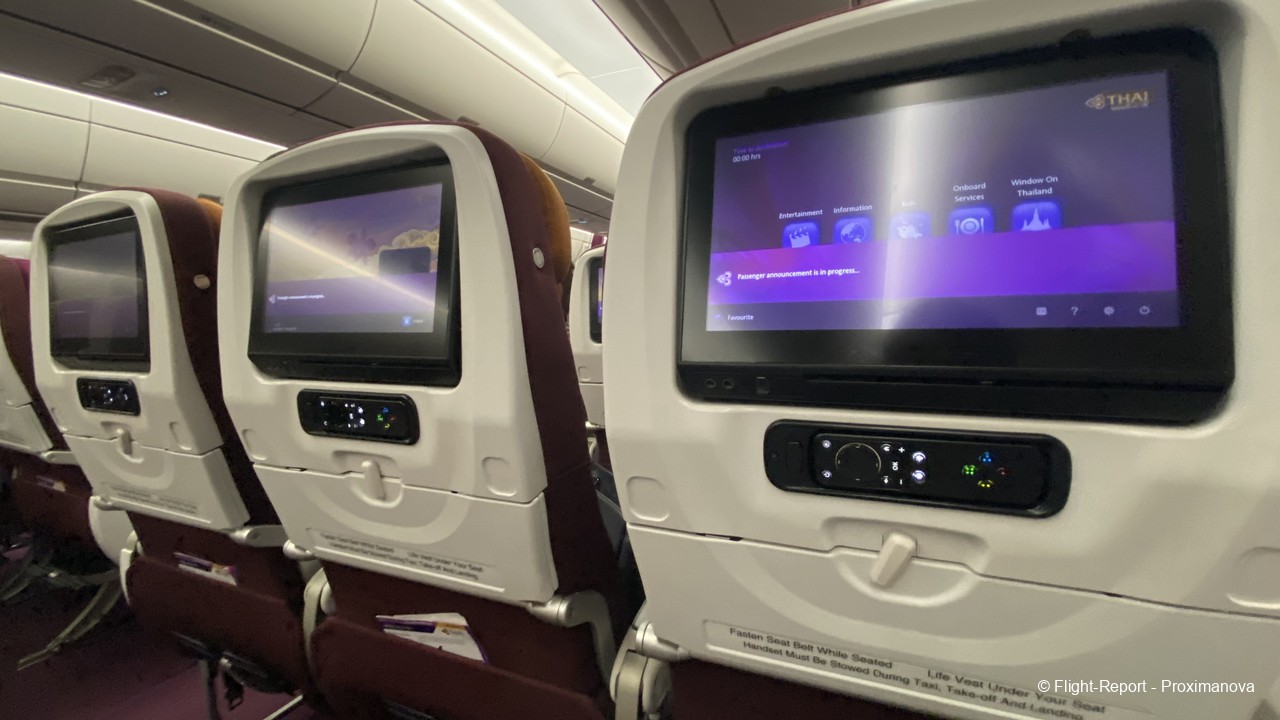
To the left sat HS-TWB, one of only two 787-9s at Thai Airways, which fly exclusively to Paris and Kuala Lumpur. She had spent the whole day at BKK after arriving from CDG as TG930, and at midnight she would go back there as TG931.
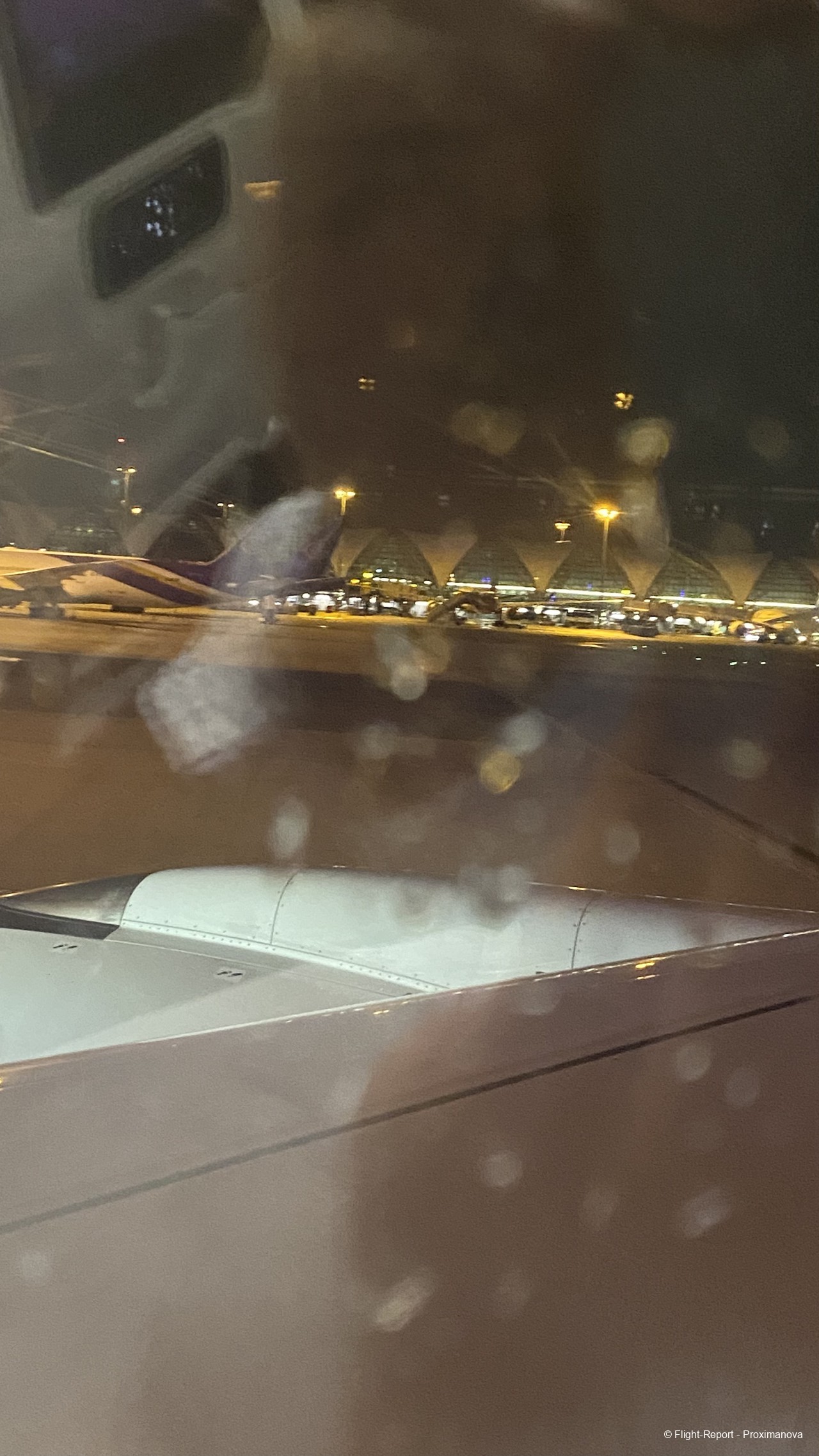
We taxied past the Teleport 737 as well as A6-EPB, an Emirates 777 which had arrived from DXB as EK372. She was painted in the ‘Year of the Fiftieth’ special livery.
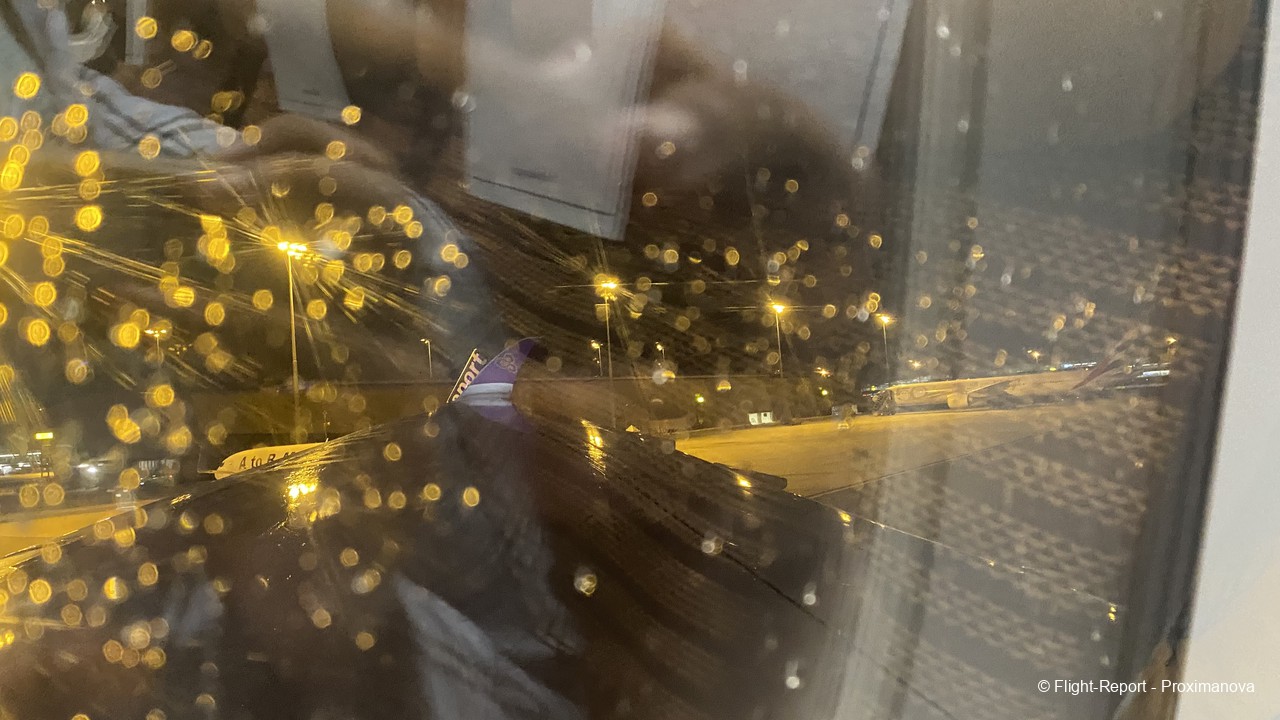
A closer look at A6-EPB. In all, five EK A380s and five 777s sport this livery. (When returning from Dubai to Chennai two weeks later, I spotted her sister-ship A6-EGE wearing this livery, which went to Bengaluru for the EK566 afternoon flight.)

The tail camera had a surreal effect at night.
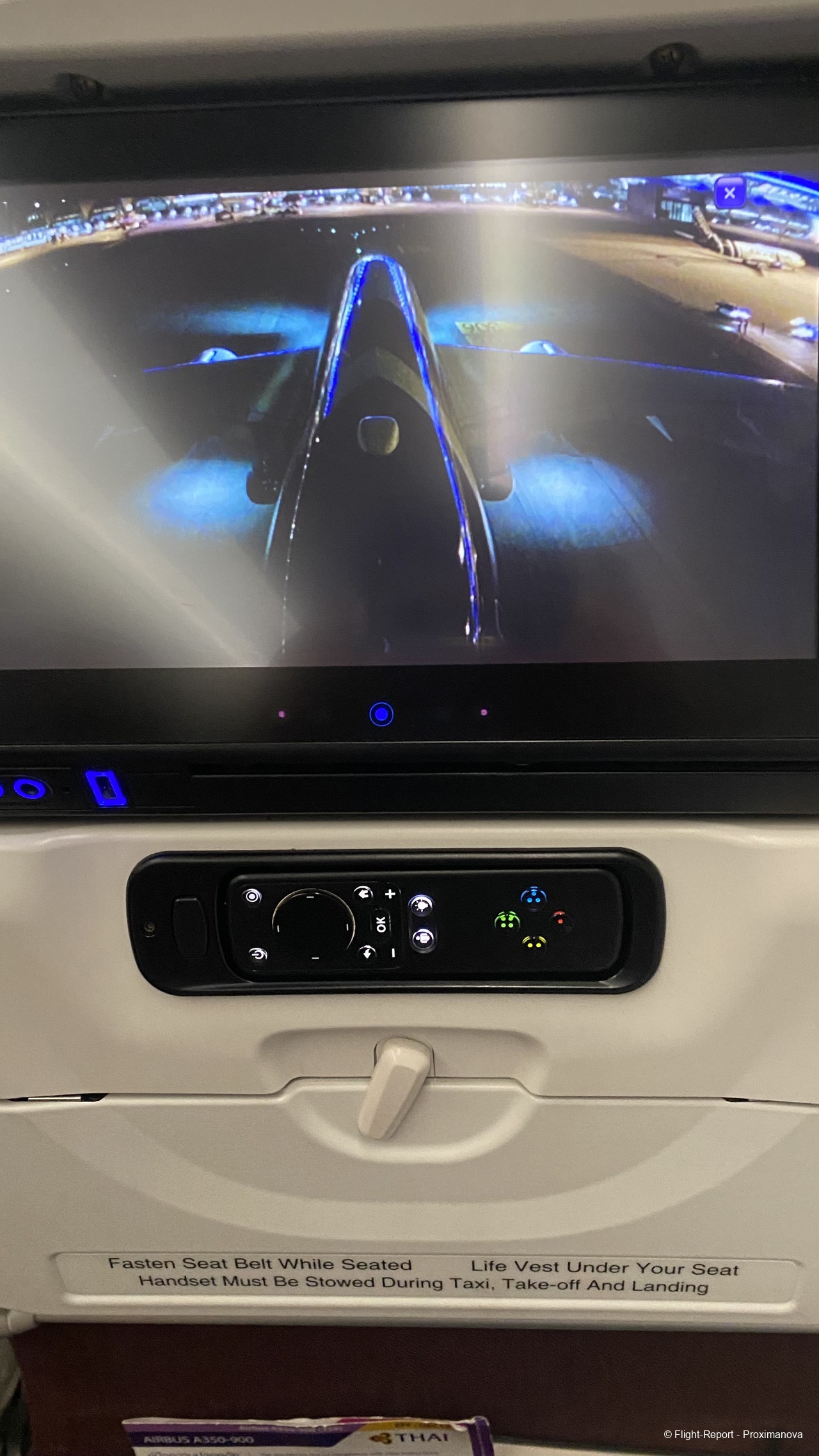
This is a funny photo, with the reflection of the cabin above, the Teleport 737 in the middle and the A350’s engine and wing below.

Mood lighting hadn’t been turned on yet. The cabin remained only half full.

Shortly thereafter we left the gate and taxied to the runway.
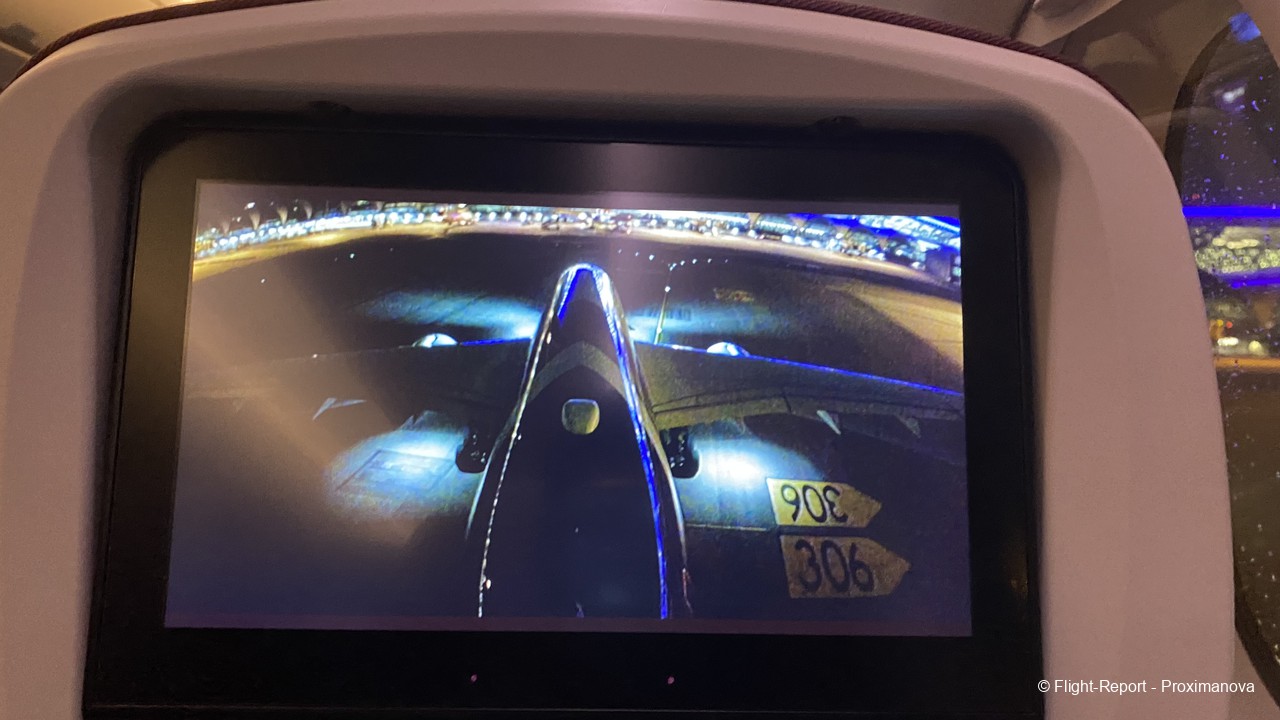
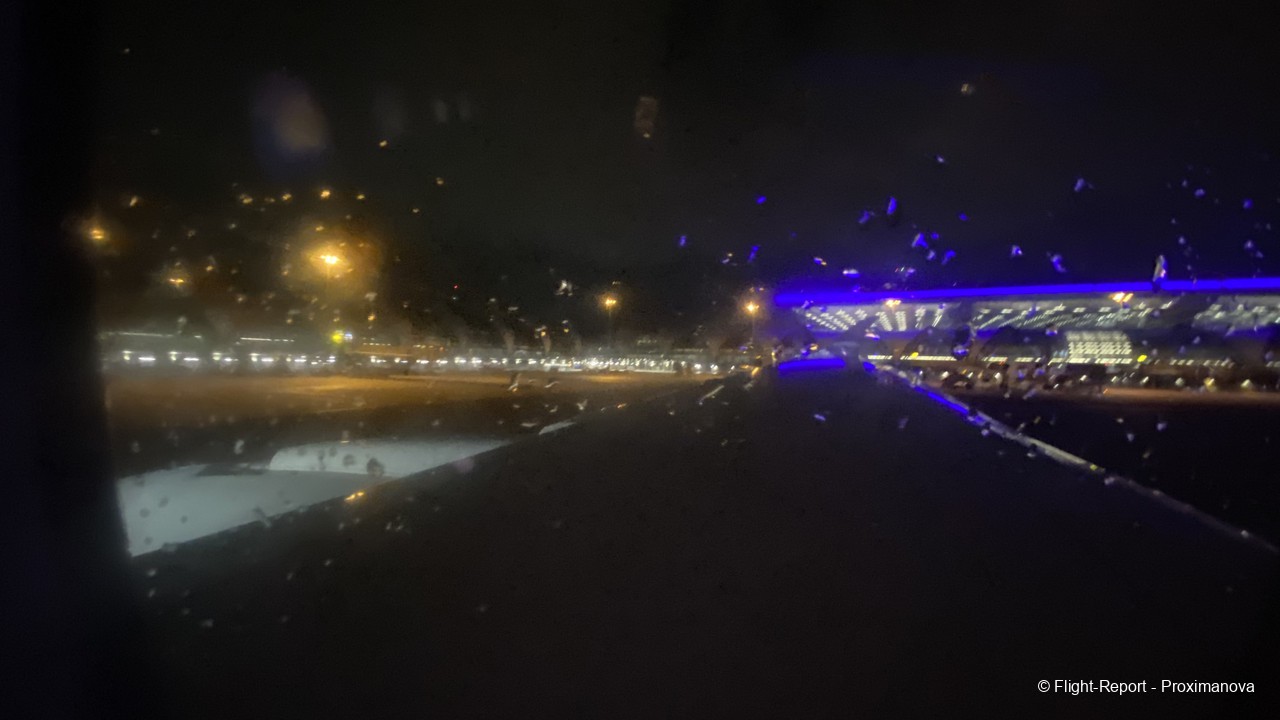
A darkened version of the mood lighting was turned on, in TG’s signature purple-and-orange colours.
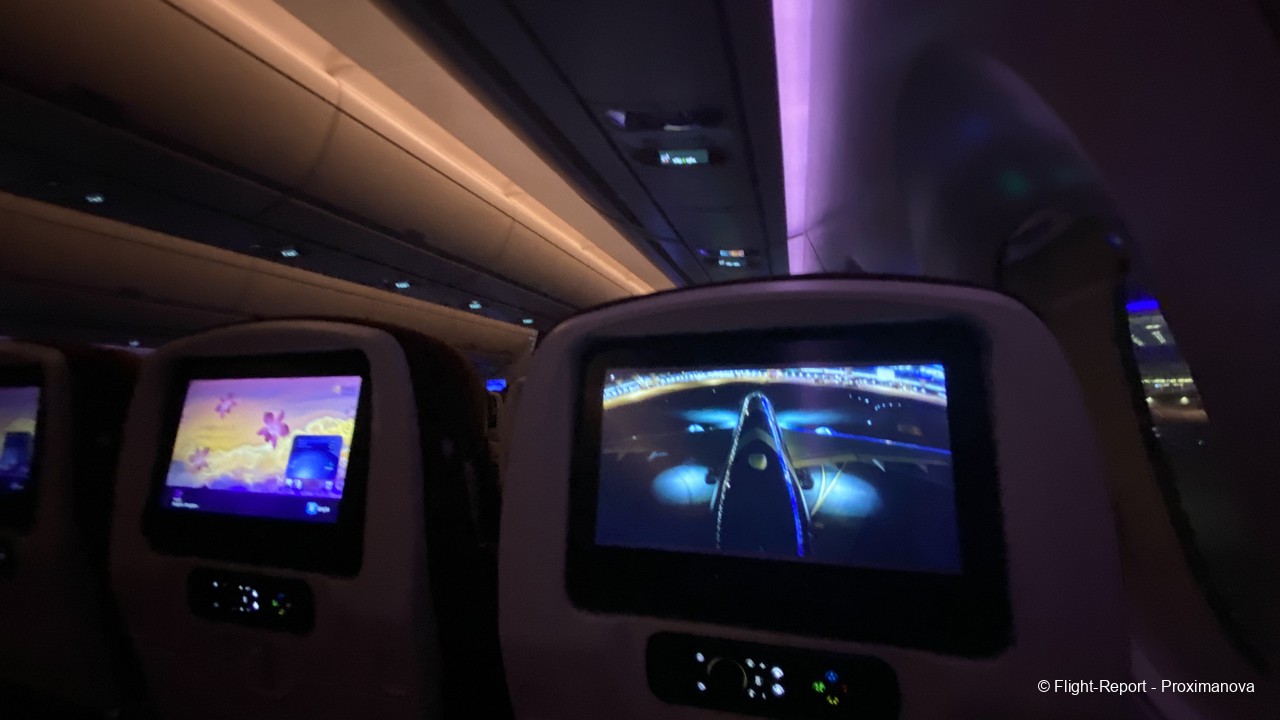
Now I spotted HZ-AR27, a Saudia 787-9 which had arrived from JED as SV844 earlier in the day. She was parked next to a Thai VietJetAir A320.

She sure looked sleek! And the Thai Airways winglet was even sexier.
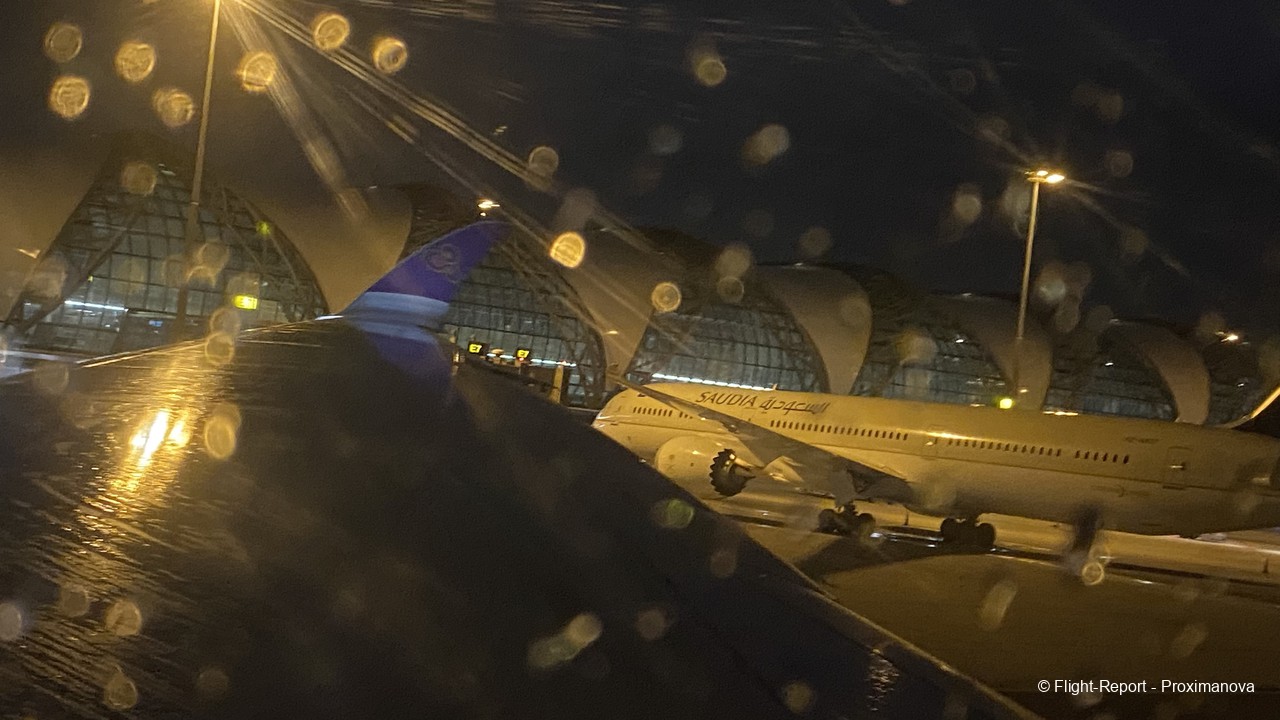
In the distance, a Qatar Airways A380 (A7-APE) rested. BKK has always been a big destination for QR’s A380s, even after they were brought back into service following the A350 paint fiasco. For most of June, A7-APE has almost always operated the QR836/837 rotation between DOH and BKK, barely flying anywhere else. But I do wonder why Singapore, being a bigger airport, never received the QR A380 like BKK does.

A7-APE wasn’t as close as it seems from the previous photo — this is where we actually were with respect to the superjumbo!

There was even a Kenya Airways 787-8 (5Y-KZB), which, like the Oman Air 787, had arrived from Guangzhou as a fifth-freedom flight (KQ2887) and would continue to Nairobi. SkyTeam’s only African member does fly from NBO to BKK as KQ880, but that flight wasn’t operated on that day.
SIN and BKK remain the largest international transportation hubs in Southeast Asia by a huge distance — despite CGK technically being busier than them pre-pandemic — and it’s always nice to see some airlines at BKK that you don’t see even at a massive hub like SIN.
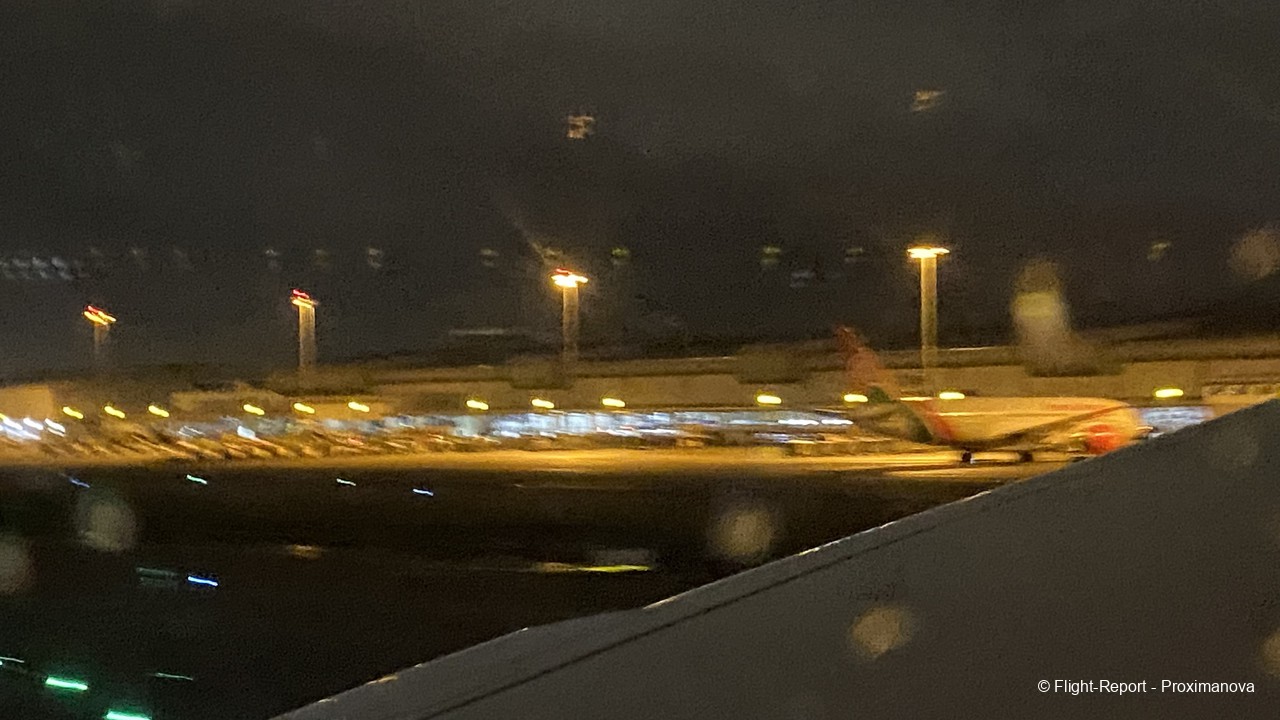
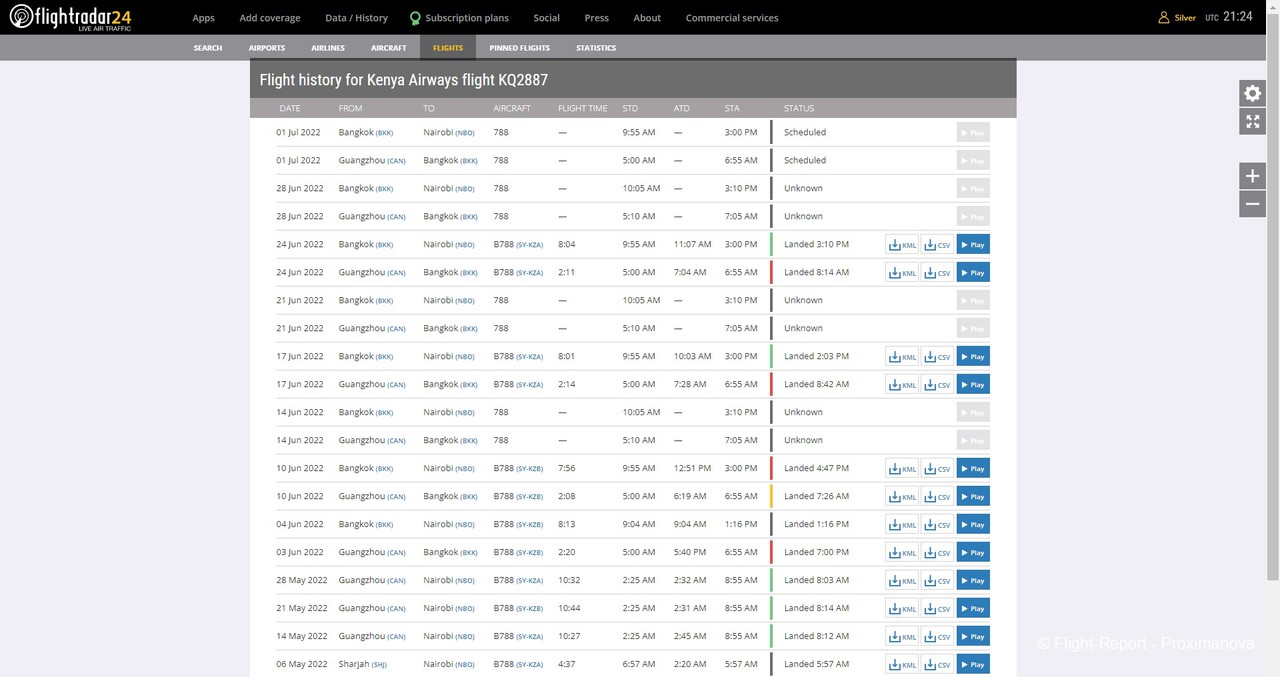
At 9:30 we were airborne. Here’s the flight information and map.
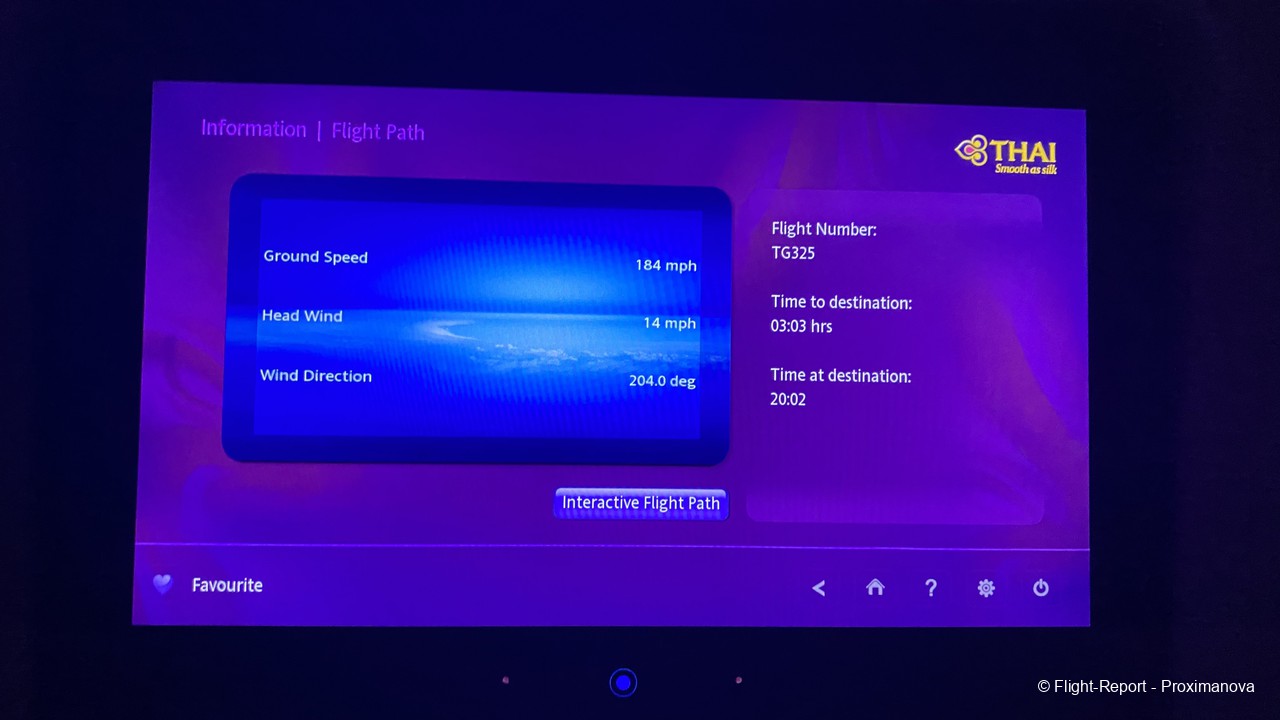
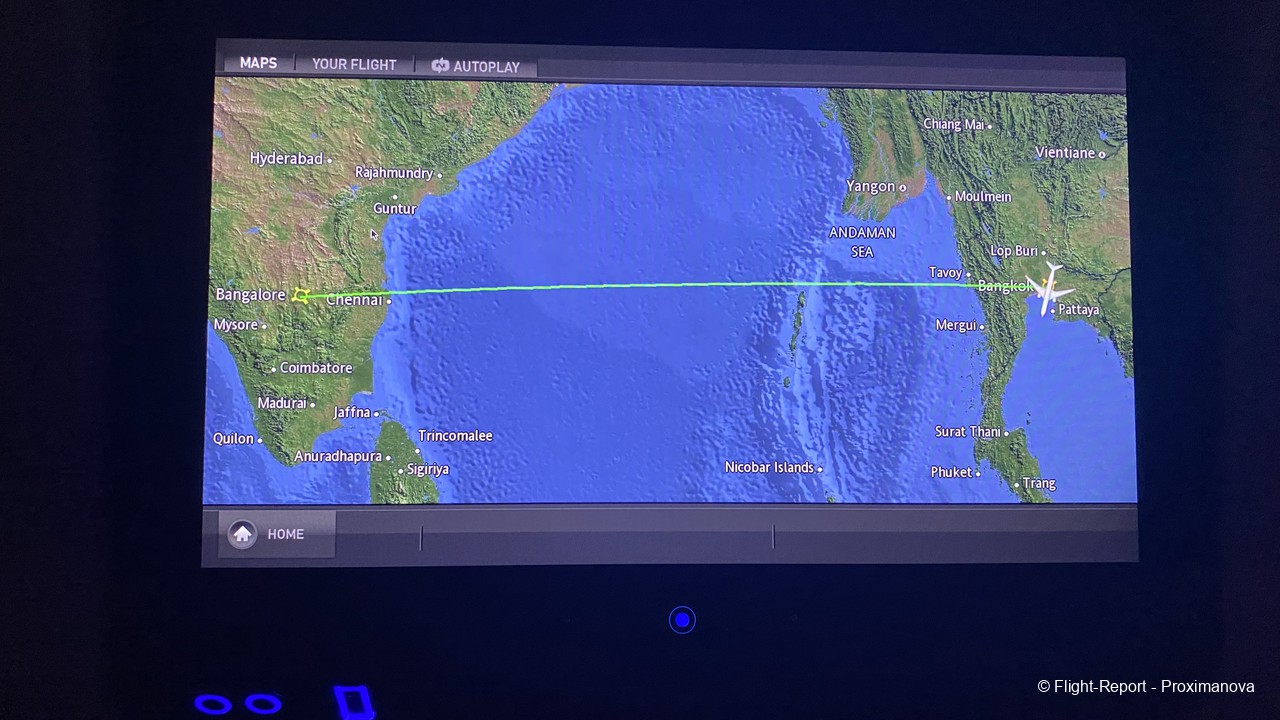
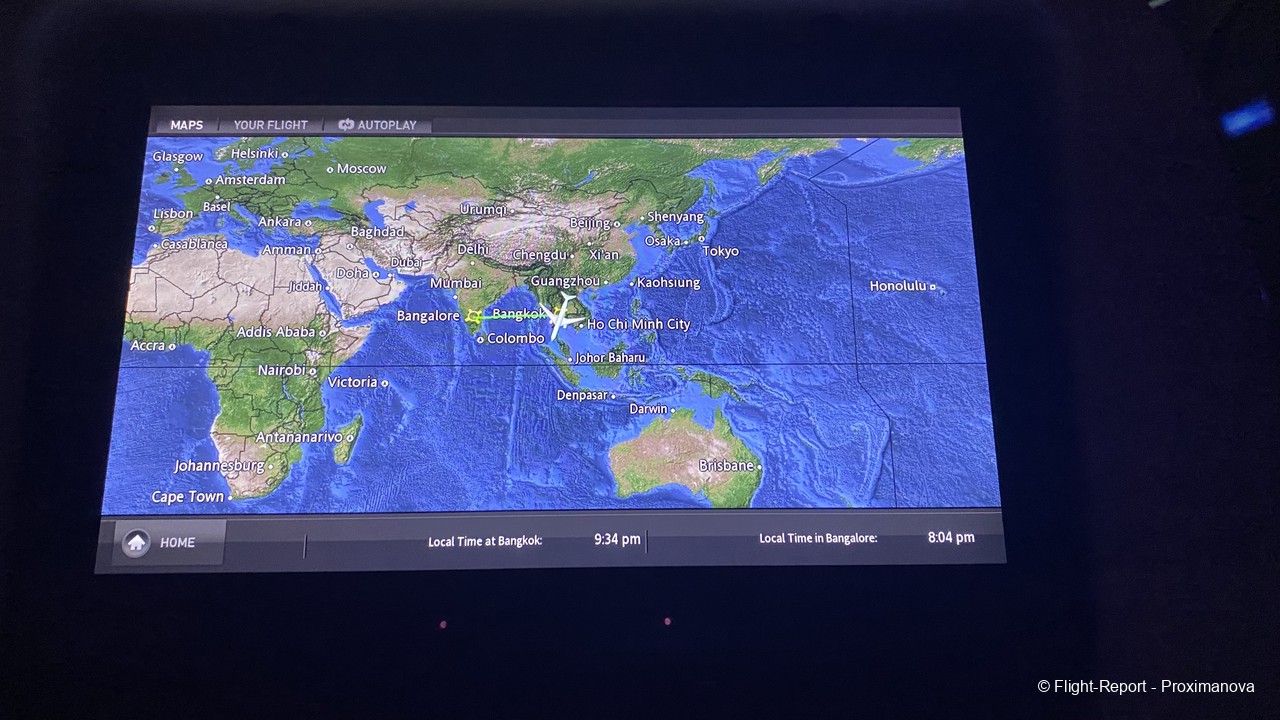
Travelportation
Now I decided to explore the ‘Travelport’ app which gave information about every city served by Thai Airways.

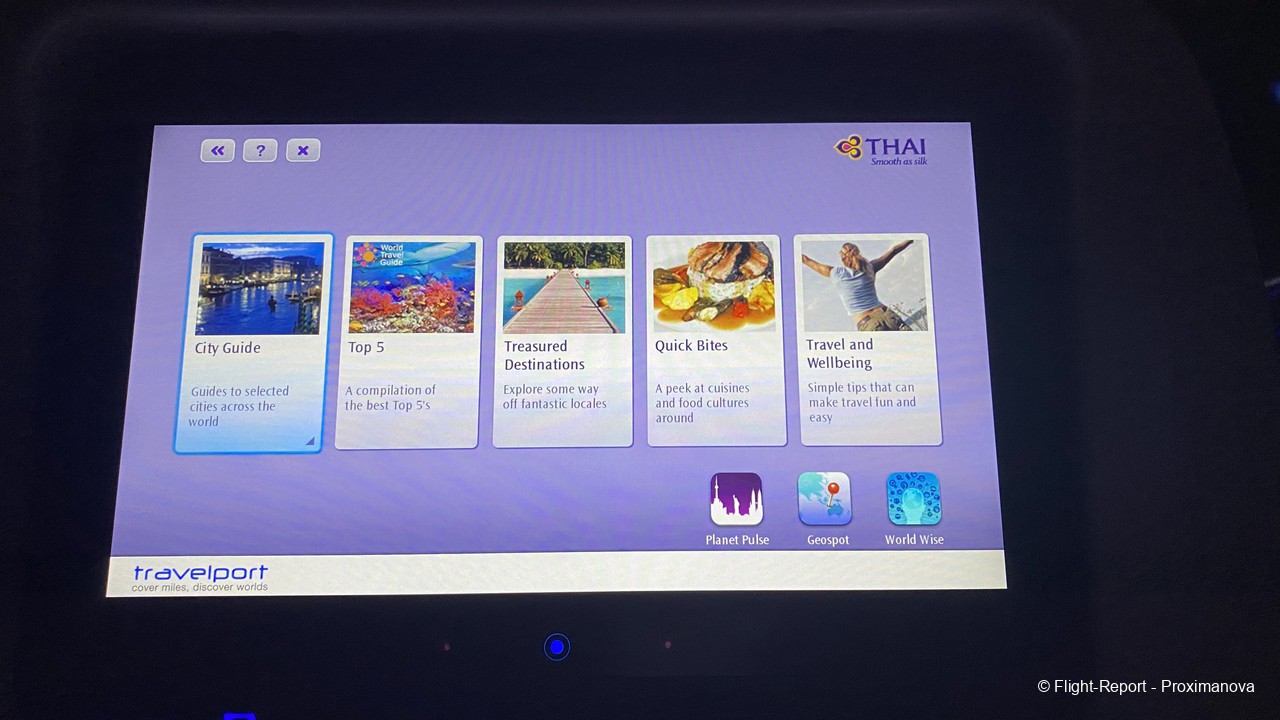
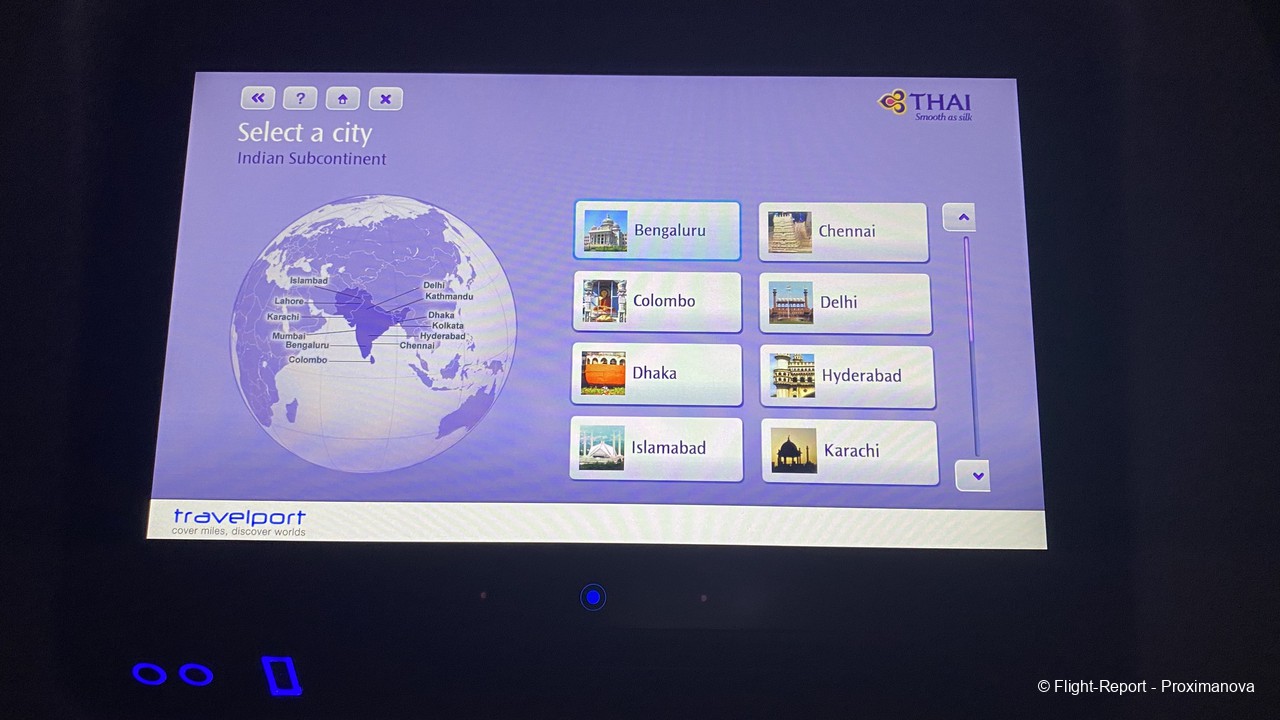
Some information on Bengaluru, including local lingo.

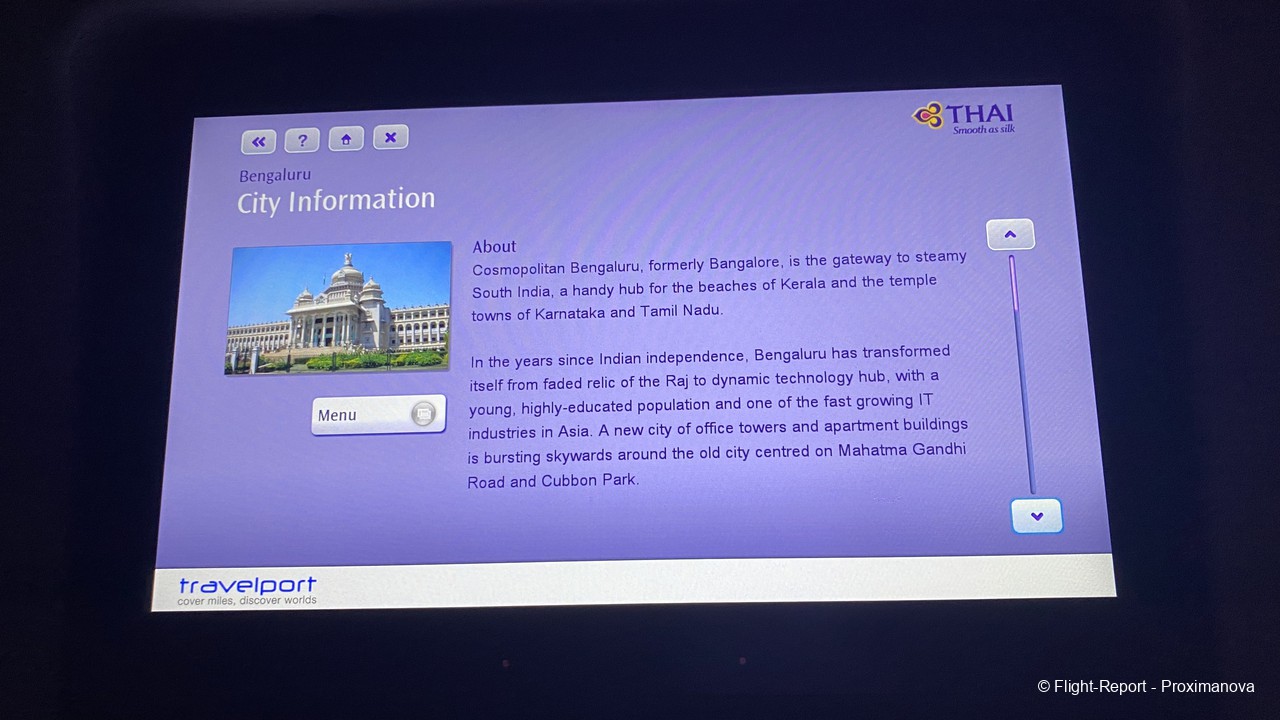
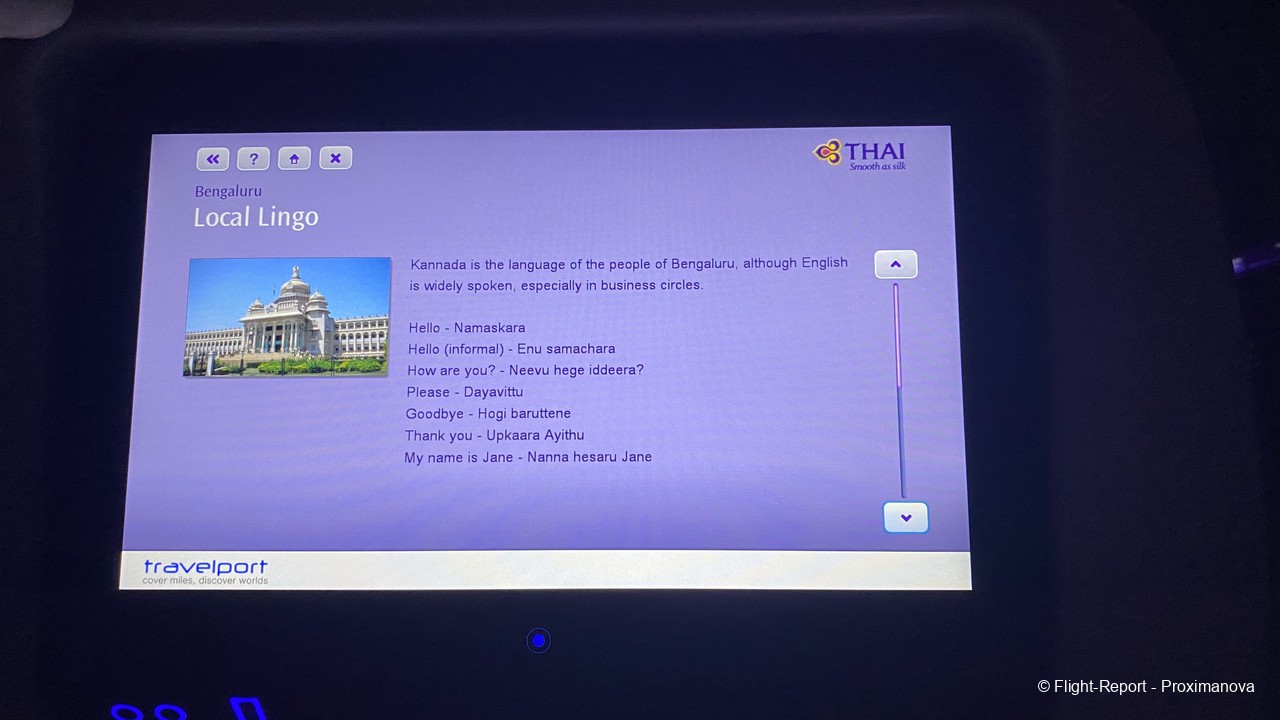
Also on Chennai…
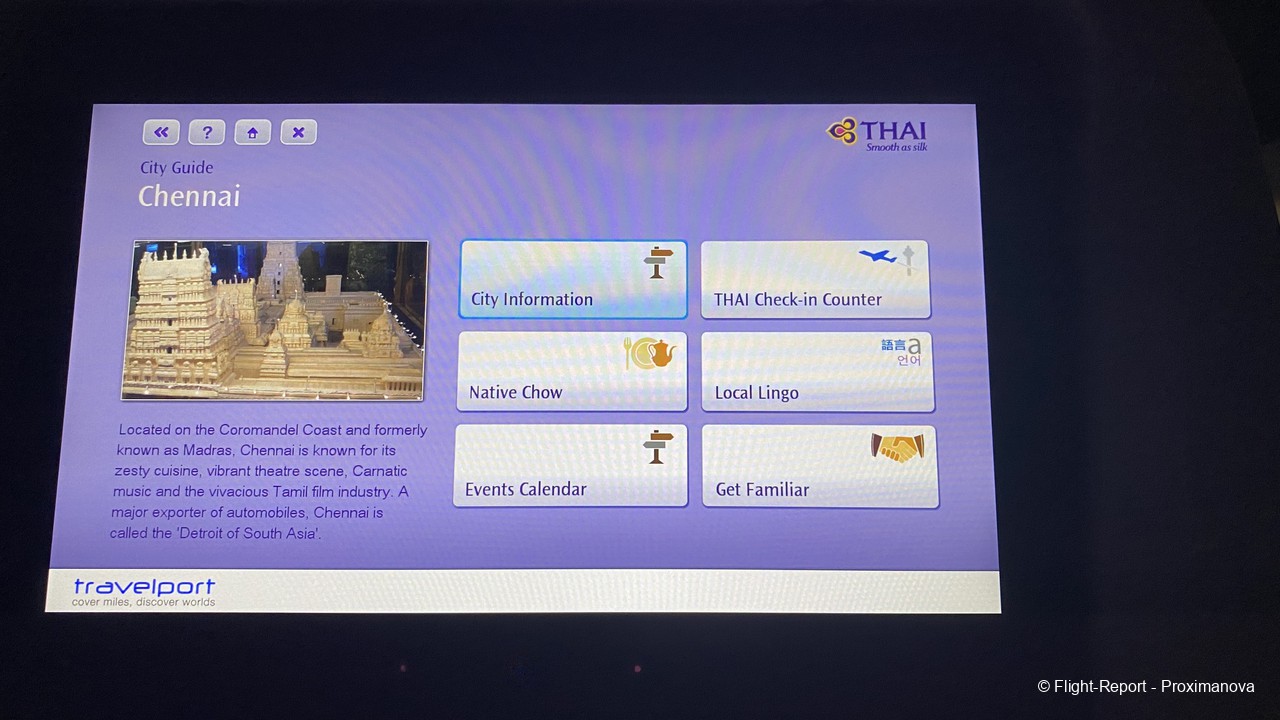

…and Singapore.
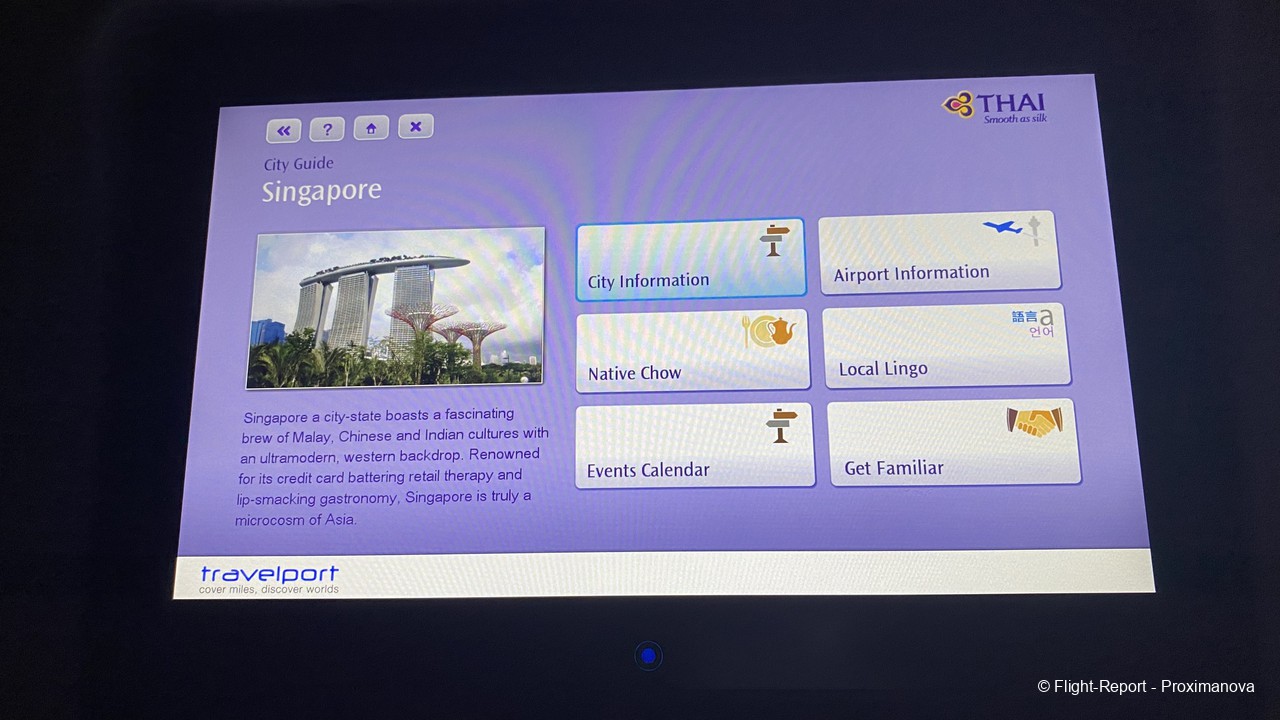
Half an hour into the flight I wrote down the proceedings in my journal.
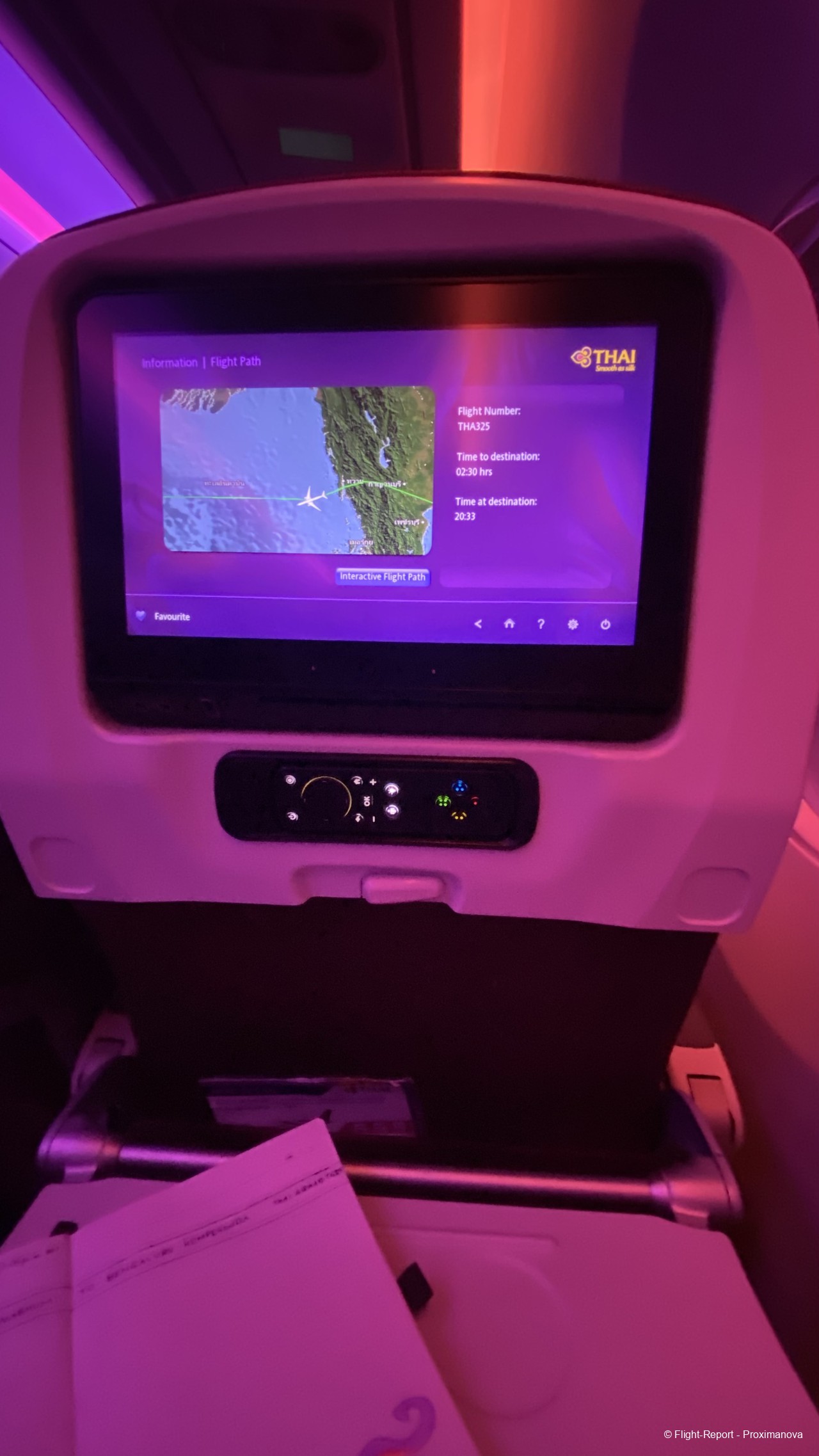
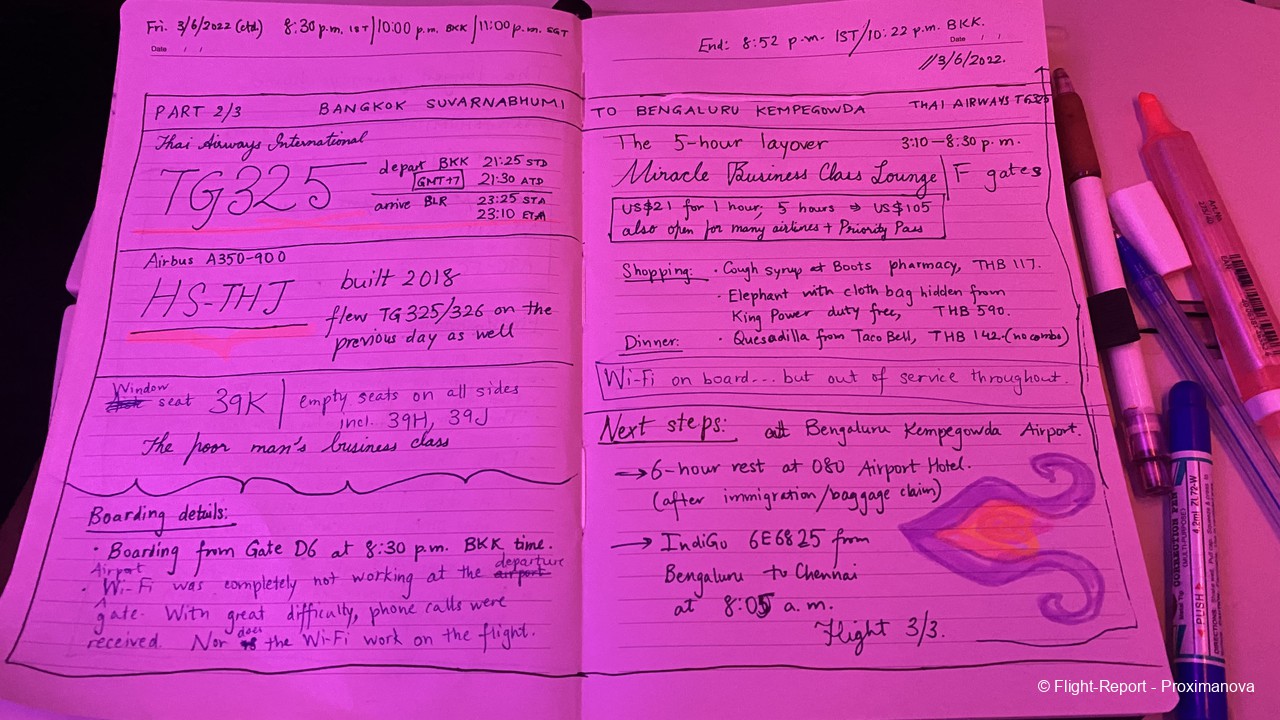
The cabin was dark, and the psychedelic pink-and-orange mood lighting remained.

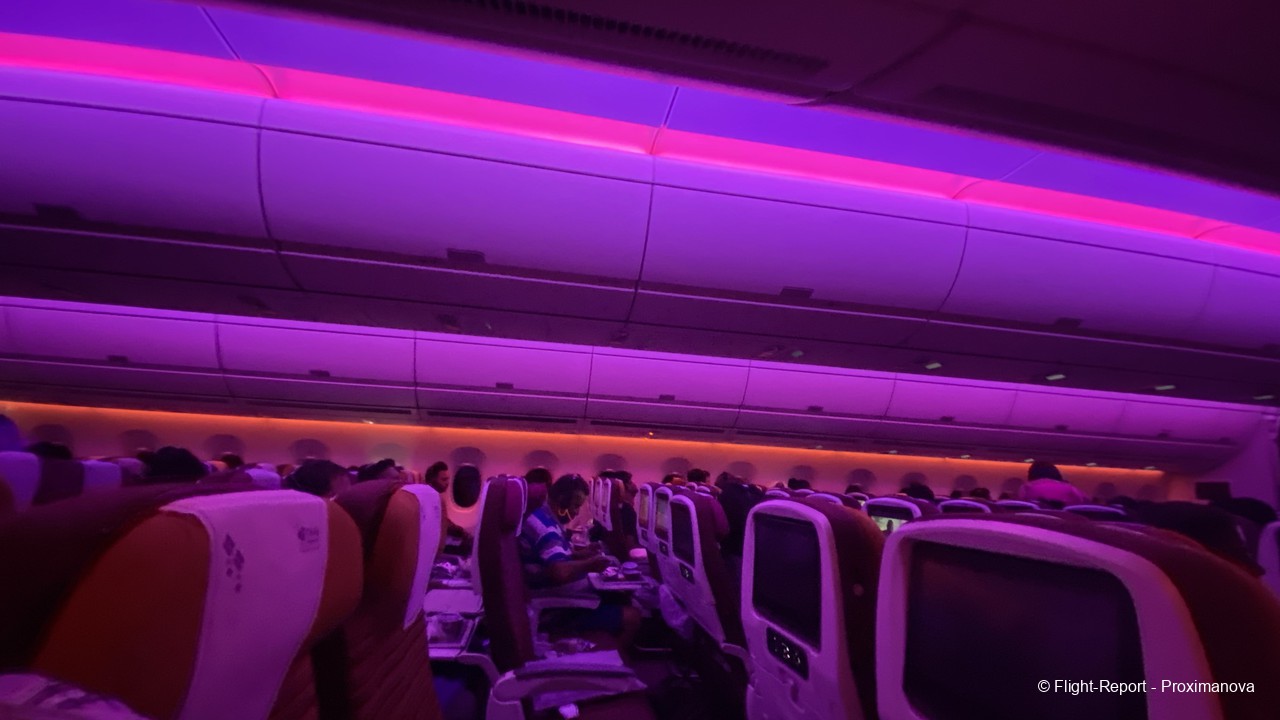
Shortly thereafter, dinner was served. Of course, there were no menus, and passengers were presented with the usual ‘veg/non-veg’ options.
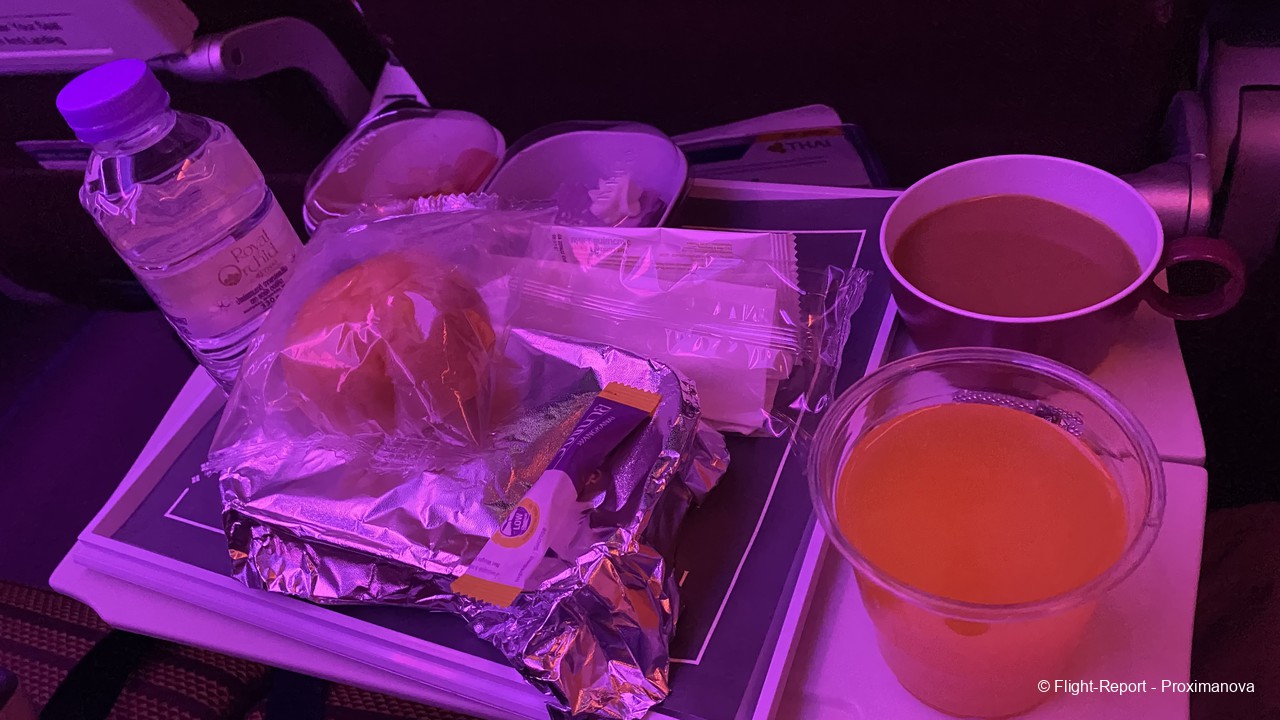
It consisted of rice, a tasty Thai red chicken curry and some sort of delicious cabbage salad. Accompanying them were the typical bread roll and butter, a spicy potato chaat which I didn’t like, a cute little purple bottle of water and the yummiest purple cake. I also had coffee and orange juice to go with them, though unfortunately ended up spilling the latter all over the seat. Overall this was a nice meal for sure.
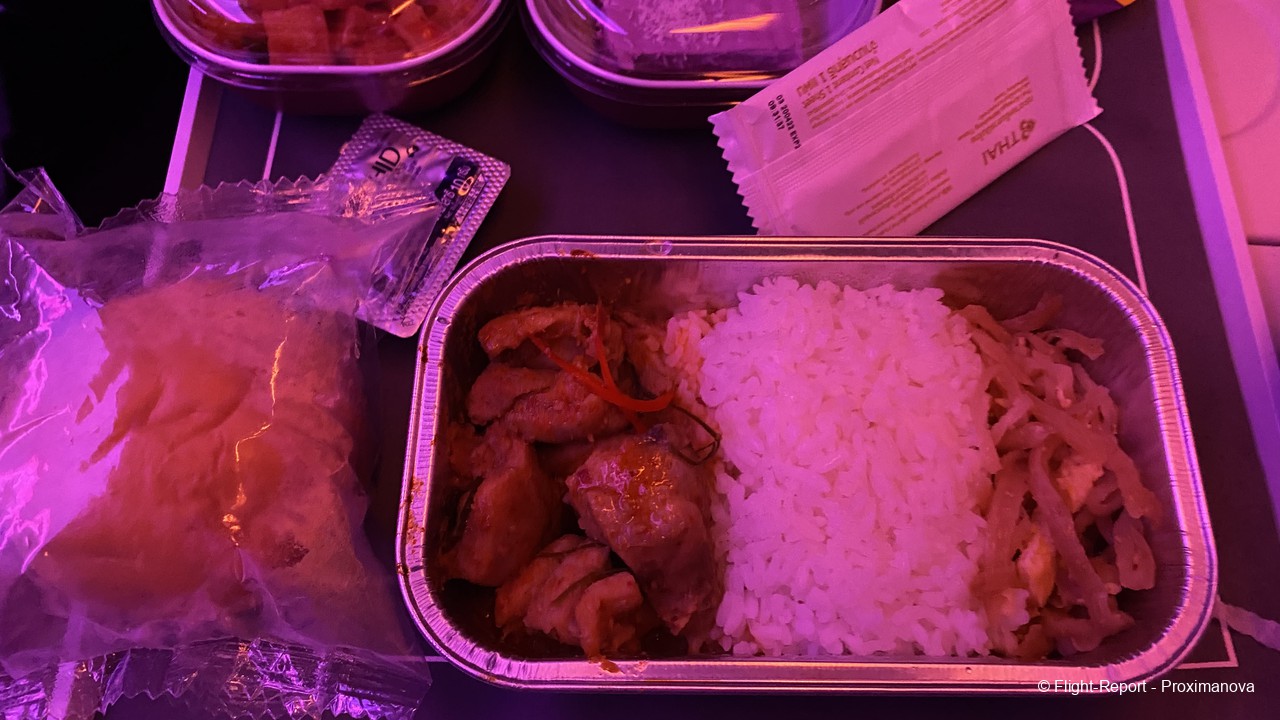
Meanwhile I was playing the same Bollywood music as the last flight. You can see that I was fully taking advantage of the empty seats beside me.
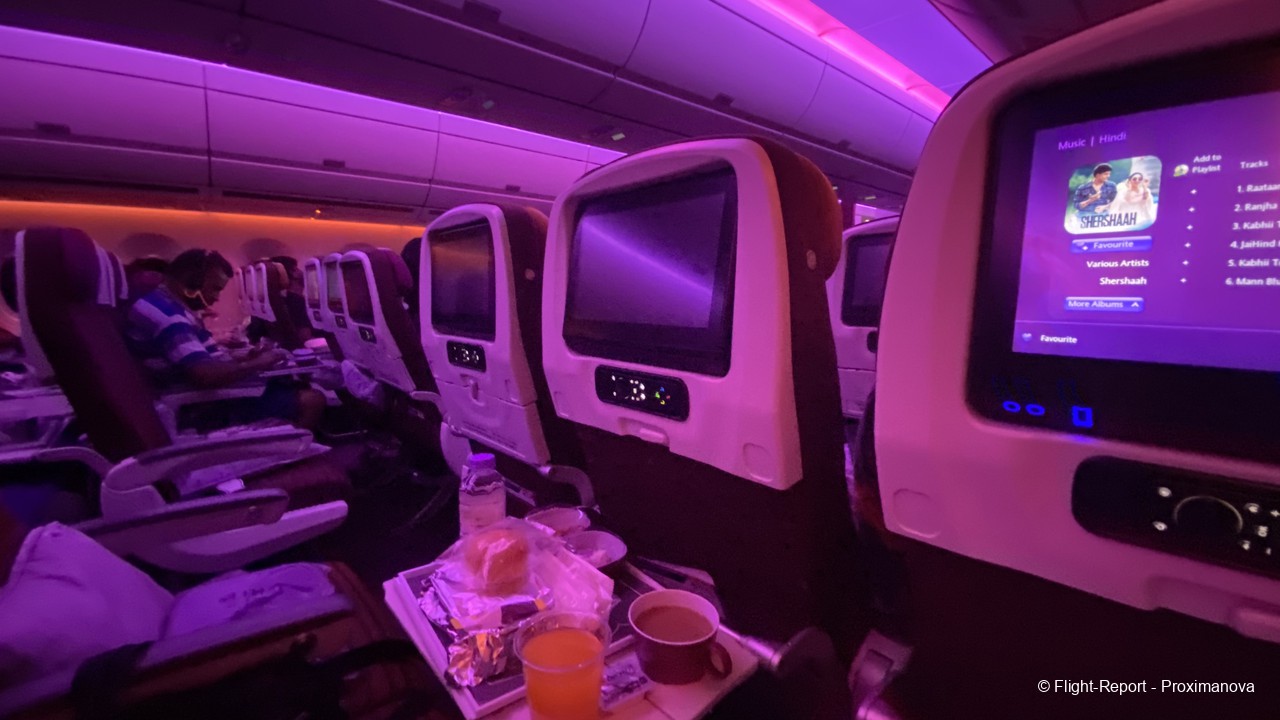
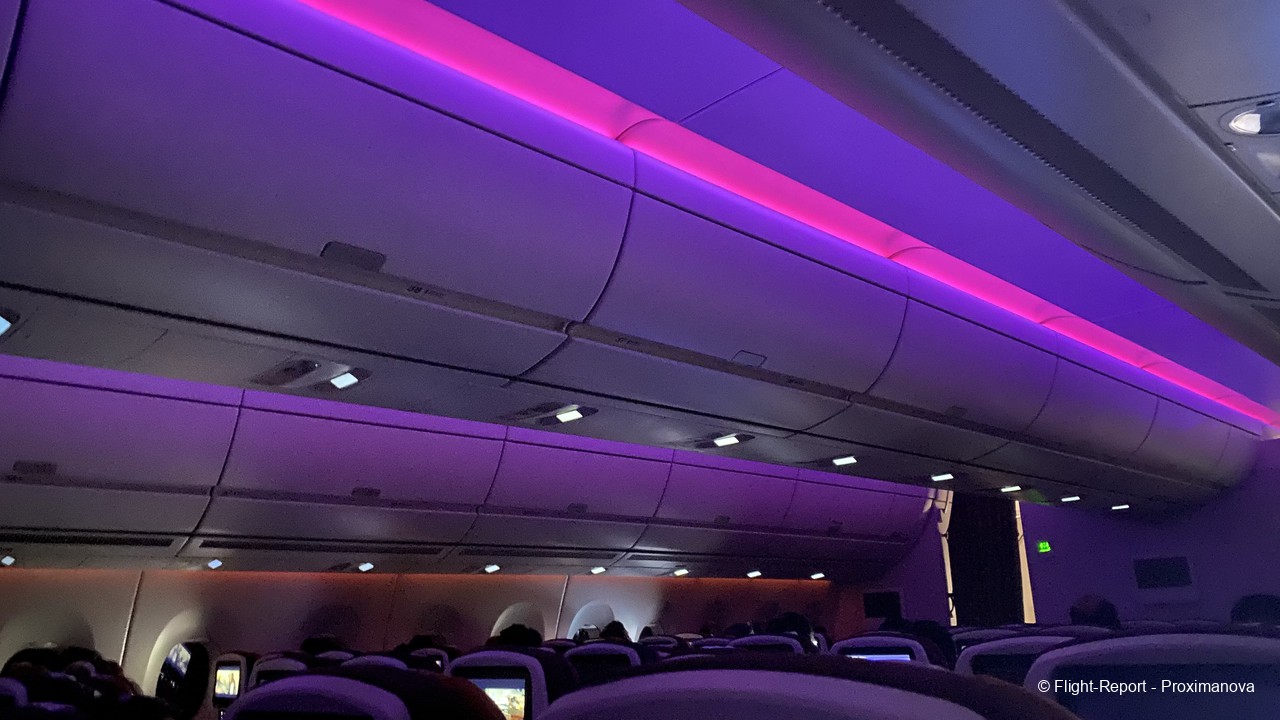
A close-up of the refreshing wipe…

…and the delectable purple cake in the purple bowl on the purple serving paper. While it was the best-looking dessert I’ve had on a flight — given that I’m a fan of all things purple — taste-wise, the crumble on the previous flight took the cake (!).

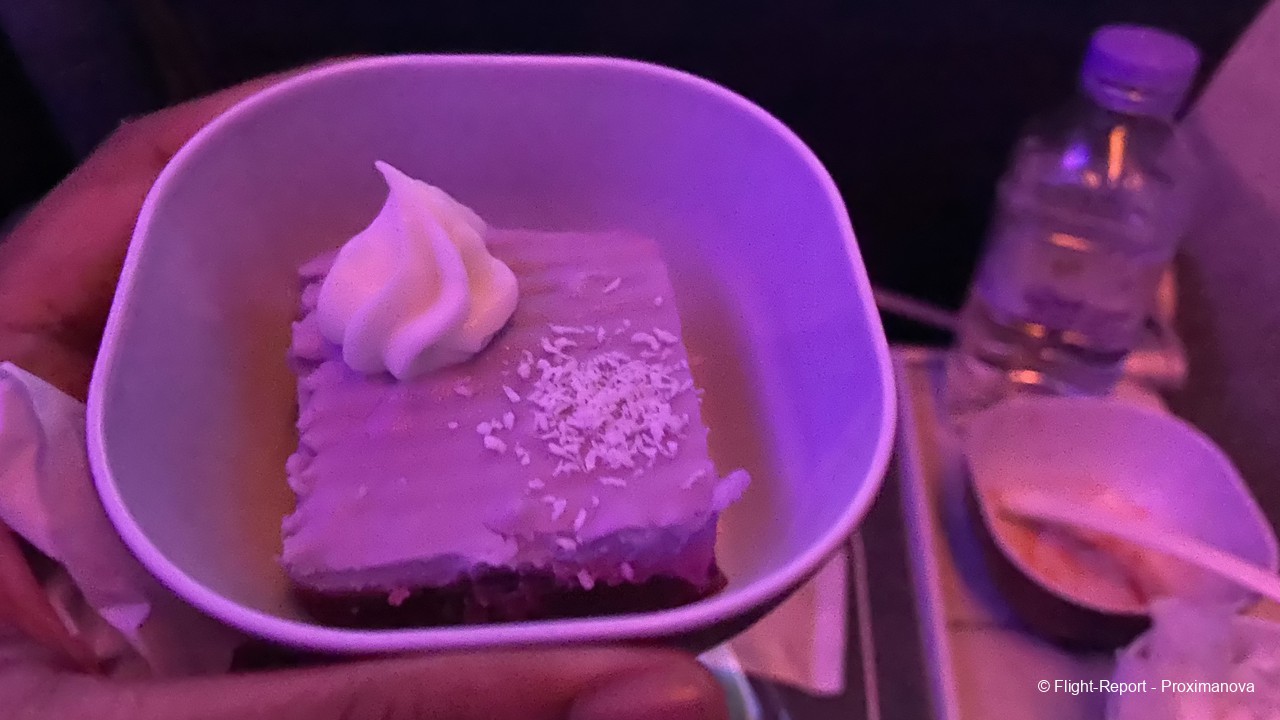
A word on the service here after the orange juice mishap. I pressed the call button and a smiling flight attendant presented himself with a Thai Airways-branded box of tissues, which I then used copiously to wipe up the sticky mess for a good half-hour before I decided that the seats were non-sticky enough to be able to sleep on, by which time we were halfway through the flight, with an hour and a half remaining. Kudos to Thai for their prompt and friendly resolution of the sticky matter — pun intended.
However, the same couldn’t be said for the passengers behind me, who had spilled some of their dinner. At one point I thought I had dropped something in the aisle, and felt all around the floor for it, only for my fingers to touch food on the floor — ugh! Later I did ask the cabin crew to help.
In the meantime I made a quick trip to the lavatory and took a few of these cups home.
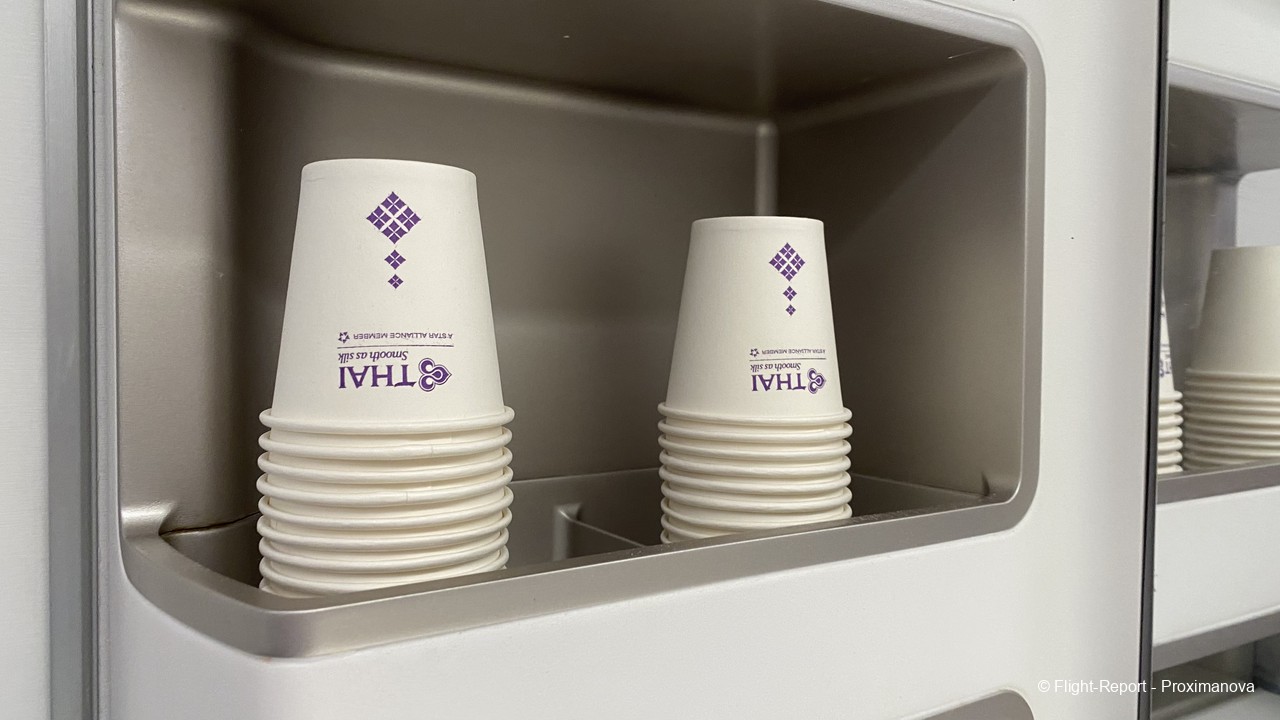
I also opened the drawer below the counter, and lo and behold! I found two more tissue rolls.
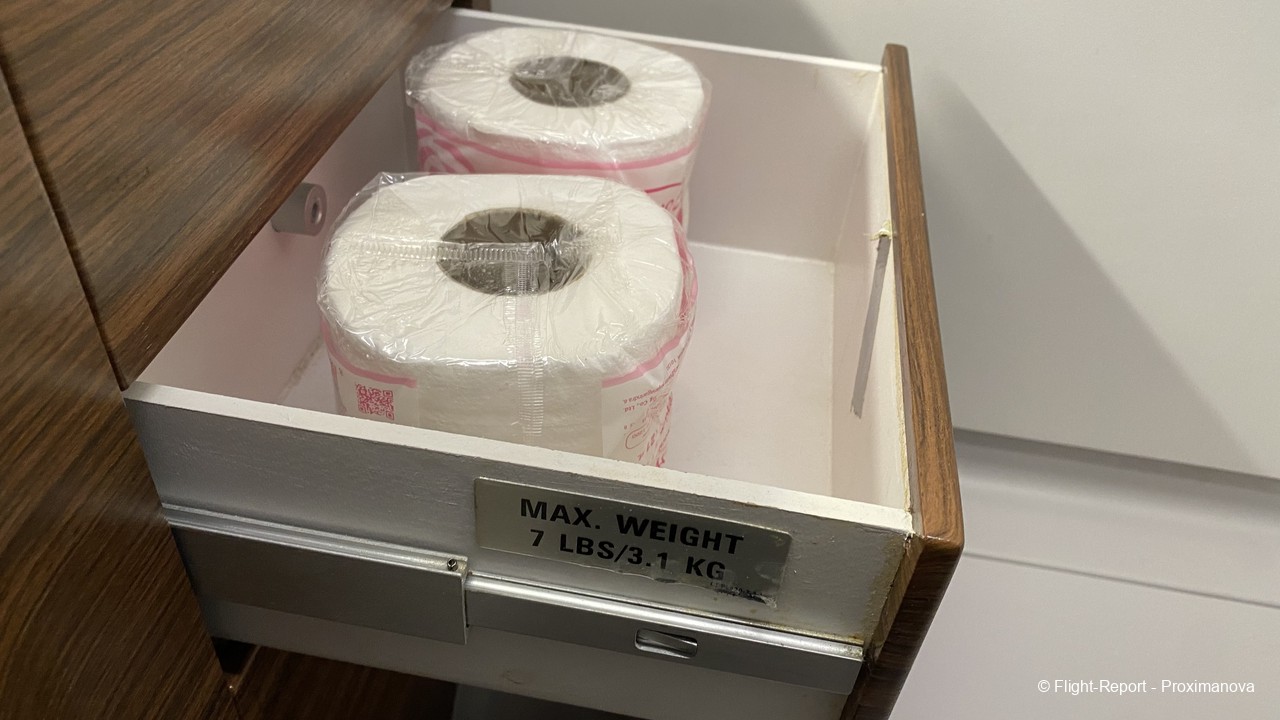
Here’s the middle economy section on this flight.
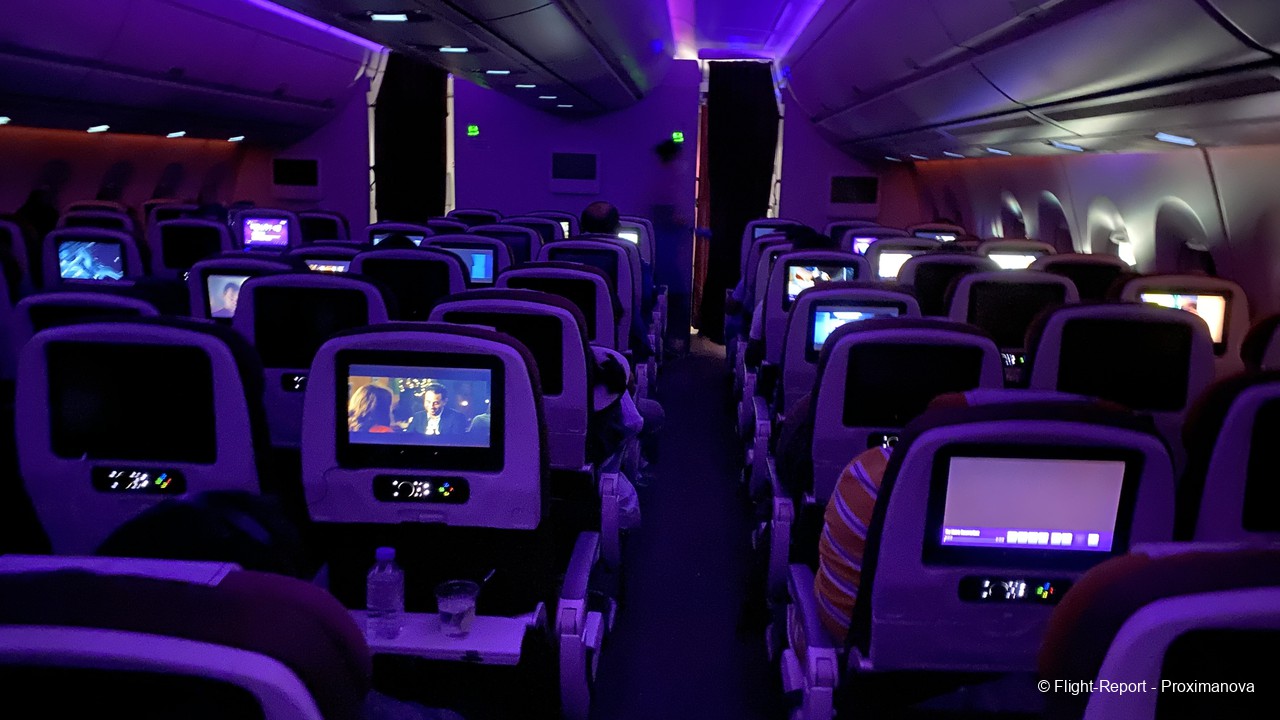
After fidgeting for awhile and failing to sleep, despite being up since the early morning, I decided to put on some modern pop music from new artists such as Doja Cat.
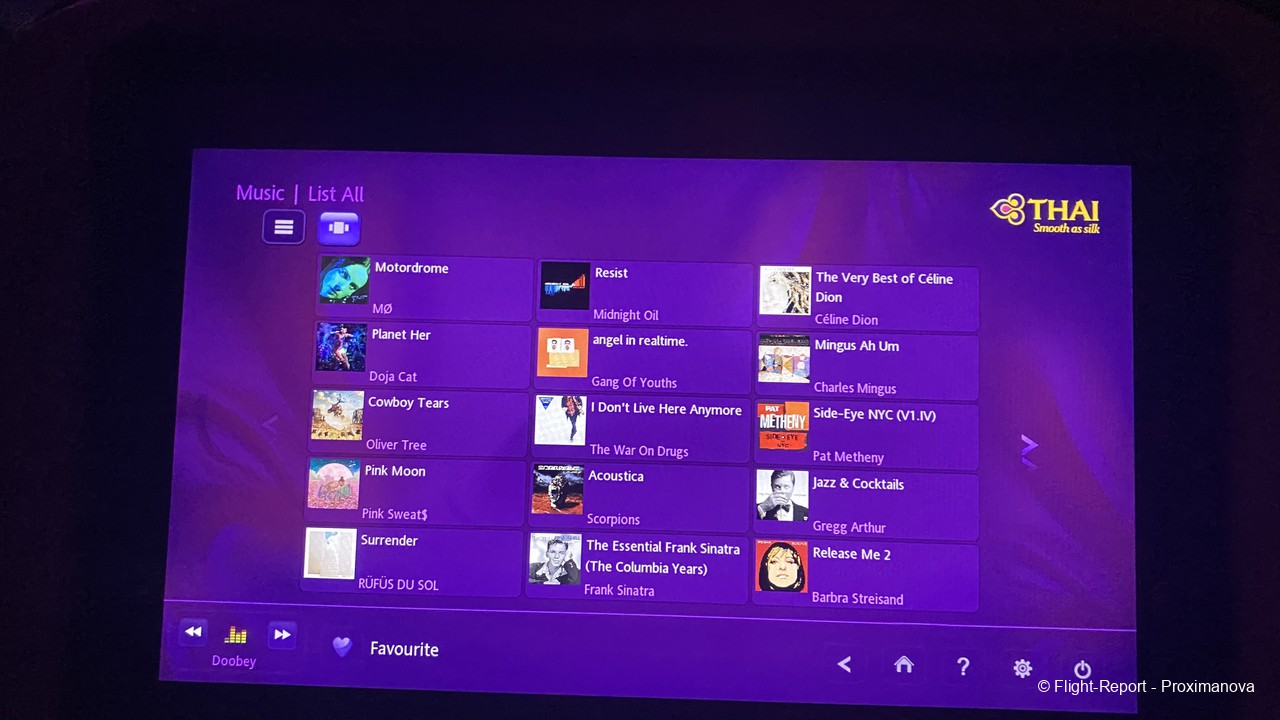
My phone charged in the meantime from the USB port below the screen.
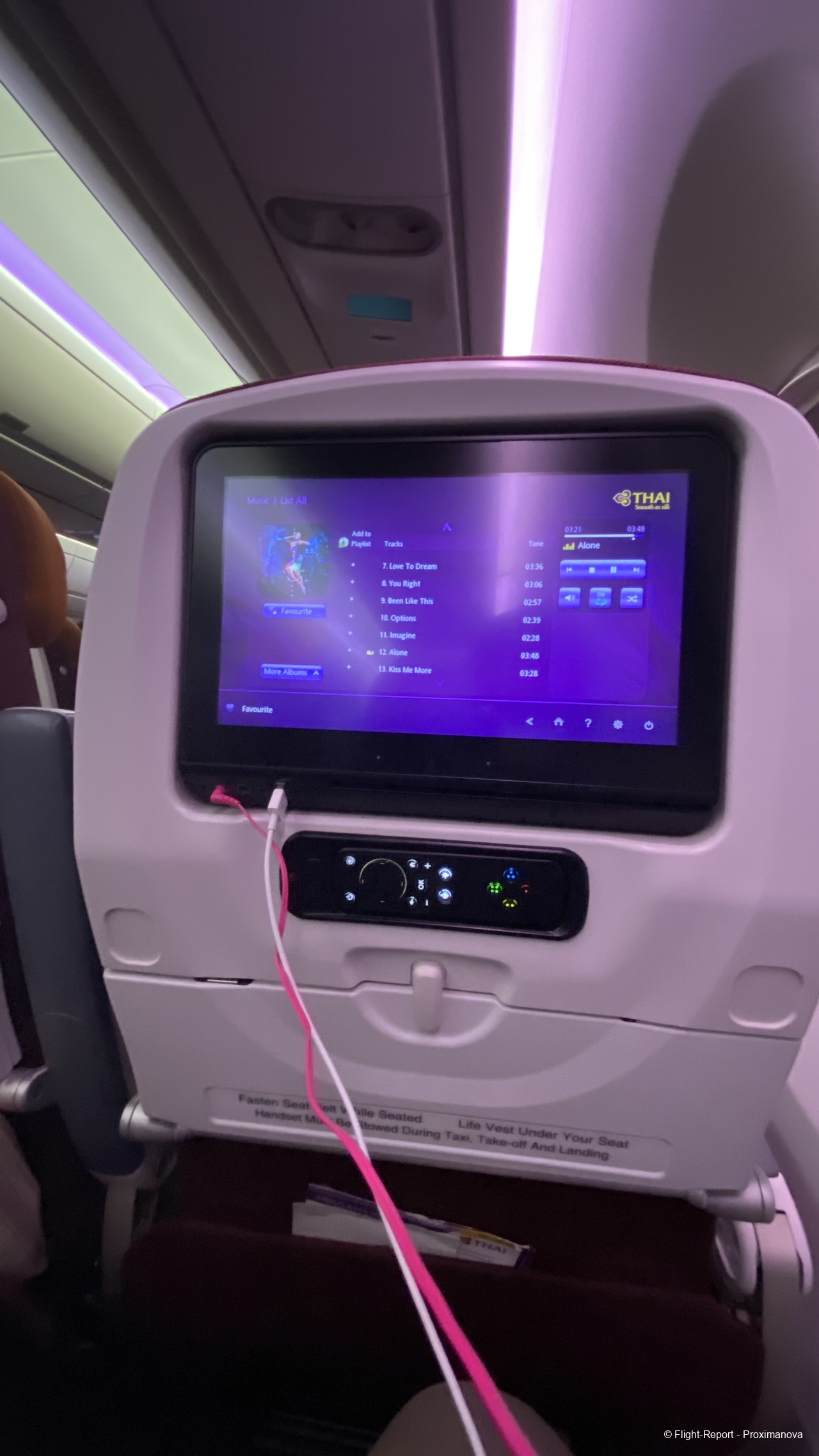
At 11pm IST (12:30am Bangkok time), some three hours into the flight, the cabin lights were turned on in preparation for descent.
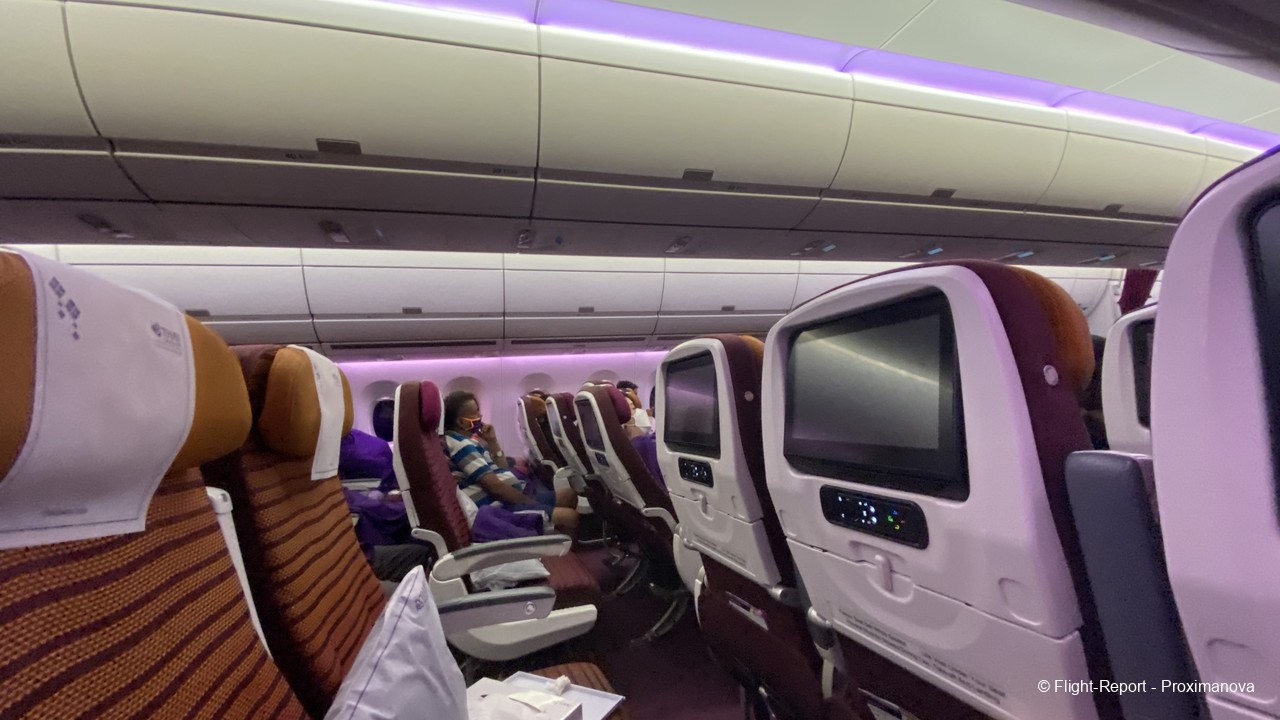
Only now did I take a picture of the safety card, which was in better condition than on the previous flight.
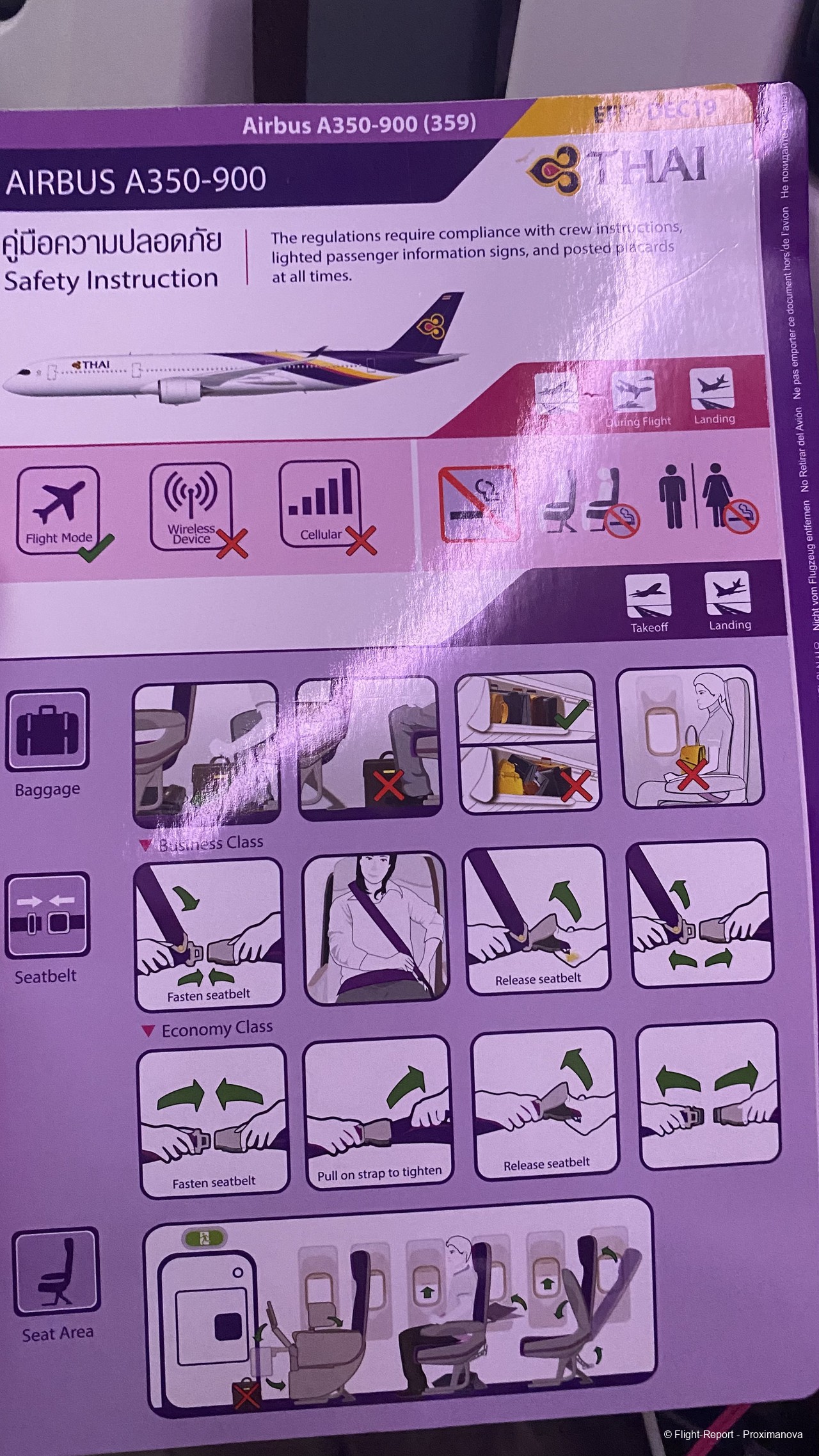
Due to huge congestion surrounding BLR, we entered a holding pattern at 11:05pm and kept circling around for the next fifteen or so minutes, prolonging the wait for a good night’s sleep at the 080 Airport Hotel that I had been waiting for.

TG displays this message and makes an announcement about turning off the entertainment system on every flight, but that is never done, and on deboarding there will invariably be some empty seats with the previous occupants’ movies still playing.
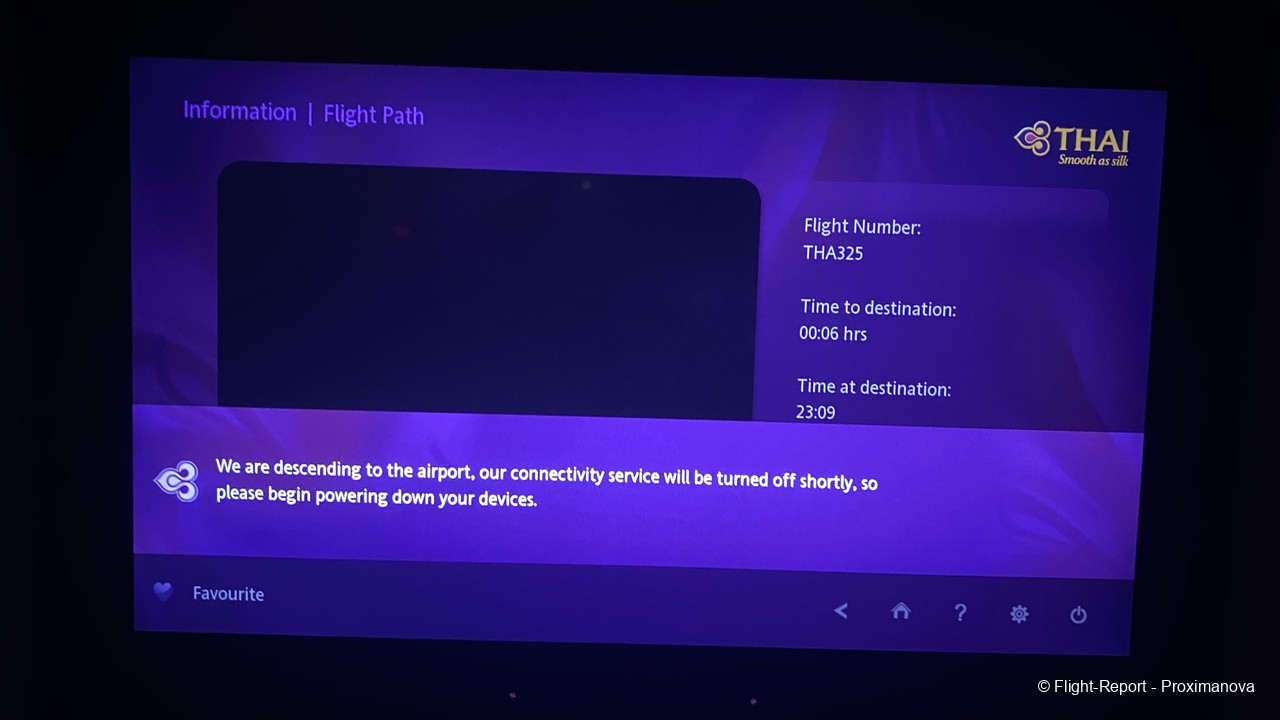
It was only at 11:25pm IST, after the twenty-minute holding pattern, that we were granted permission to touch down at Kempegowda Airport. The runway lights look spectacular at night from the A350 tail camera.
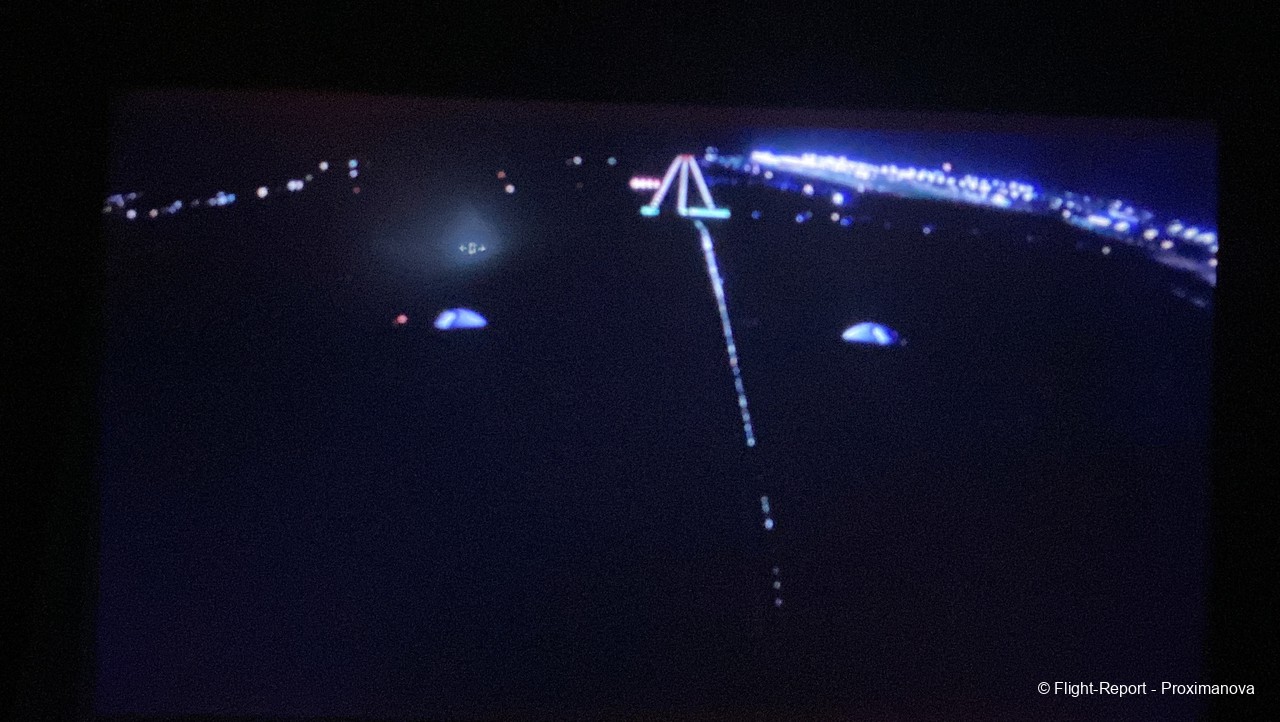
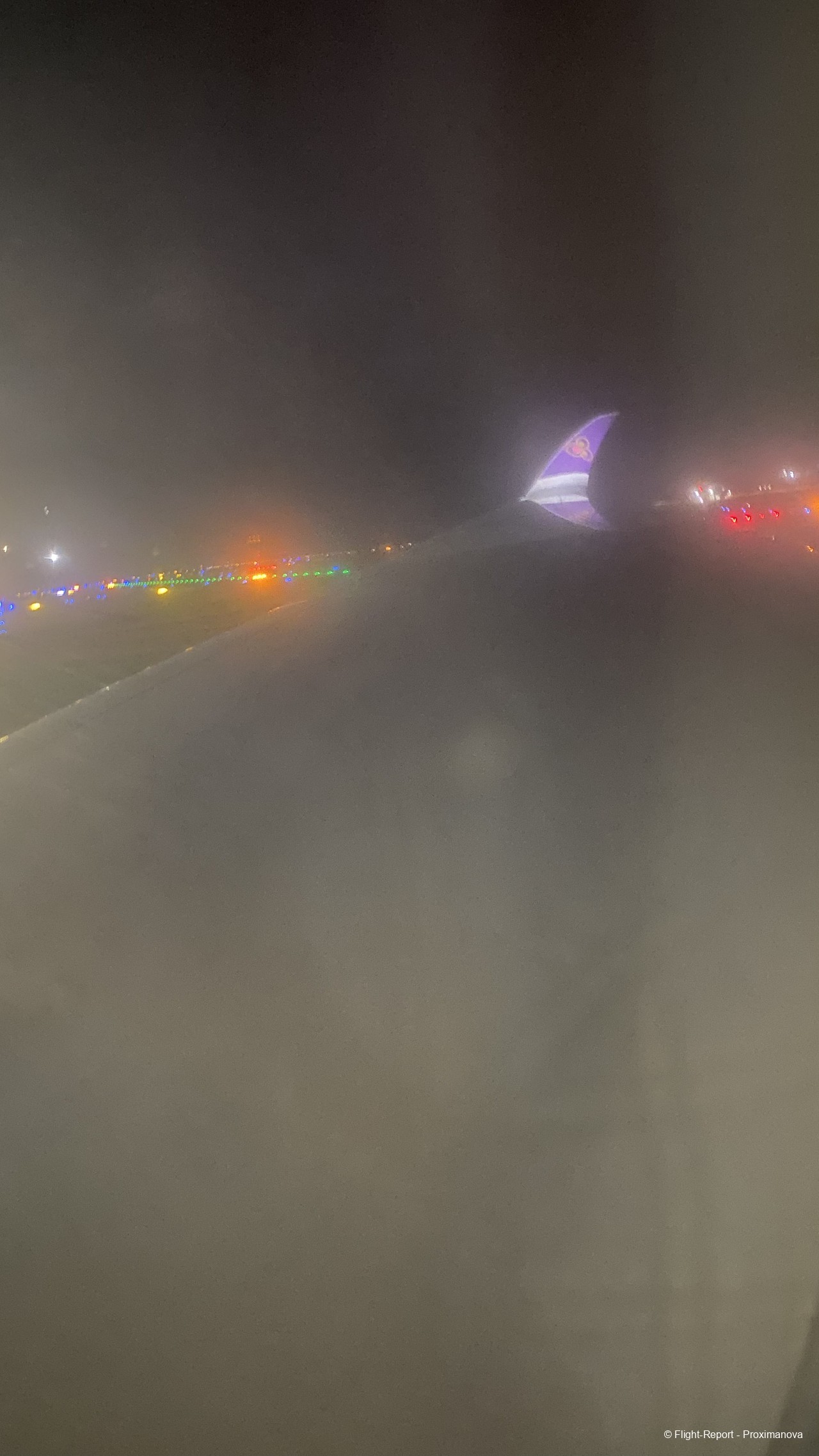
BLR is not only a big hub for IndiGo, but the home base for the Tata Group-owned AirAsia India as well. However, the two A320s immediately ahead of us in the picture below were from the Thai and Malaysian AirAsias. It was awesome to be the only widebody aircraft around at that time, king of all we surveyed.
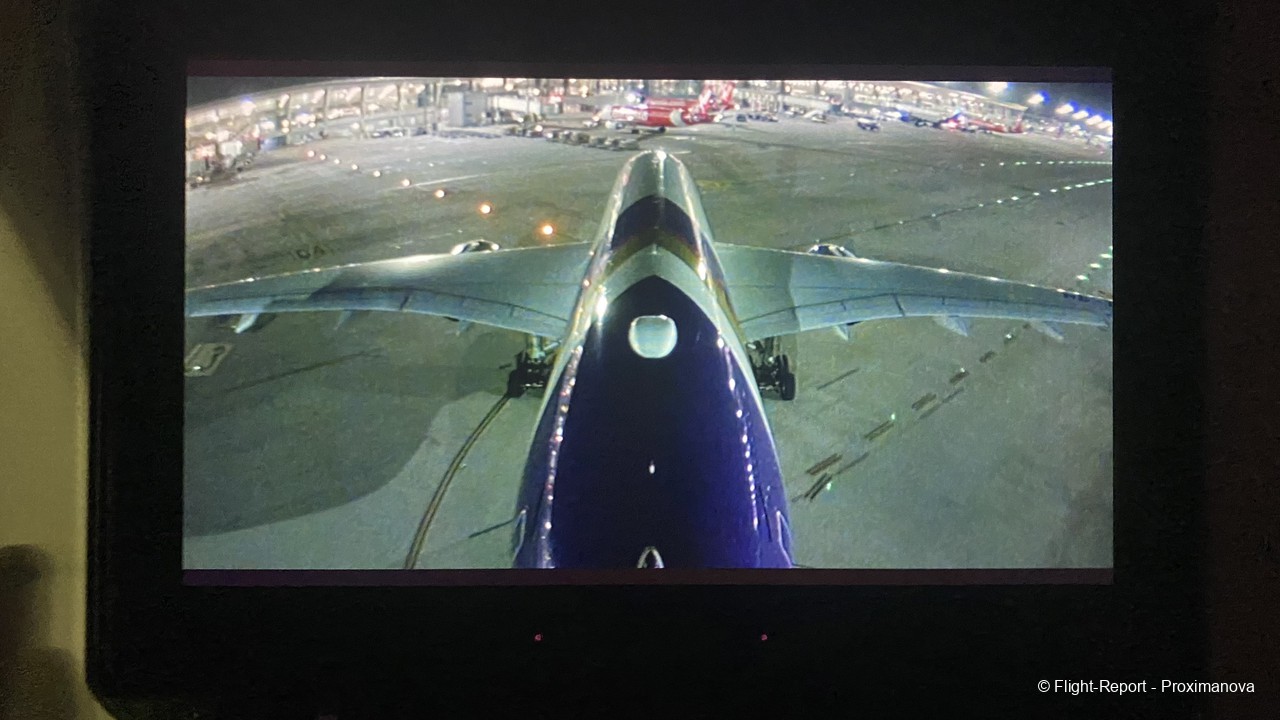
Indeed, these were 9M-AJZ and HS-BBG, which had both arrived an hour before as AK53 from KUL and FD137 from DMK, respectively.
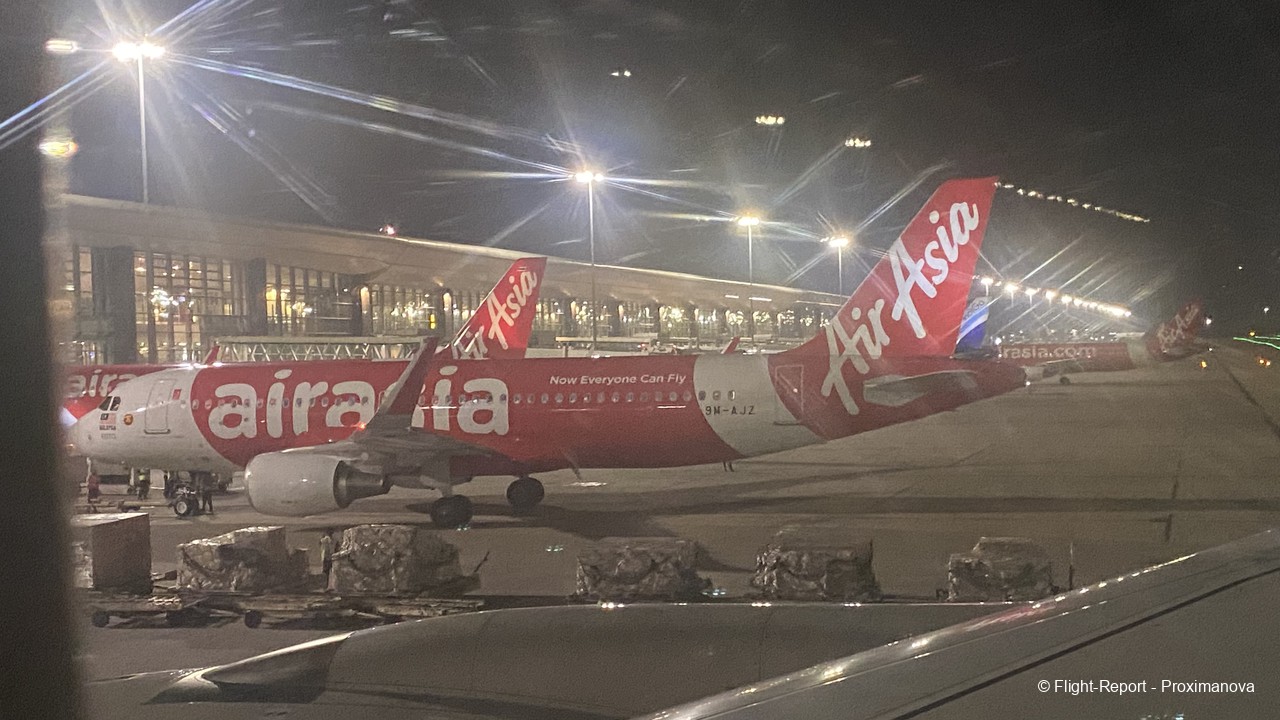
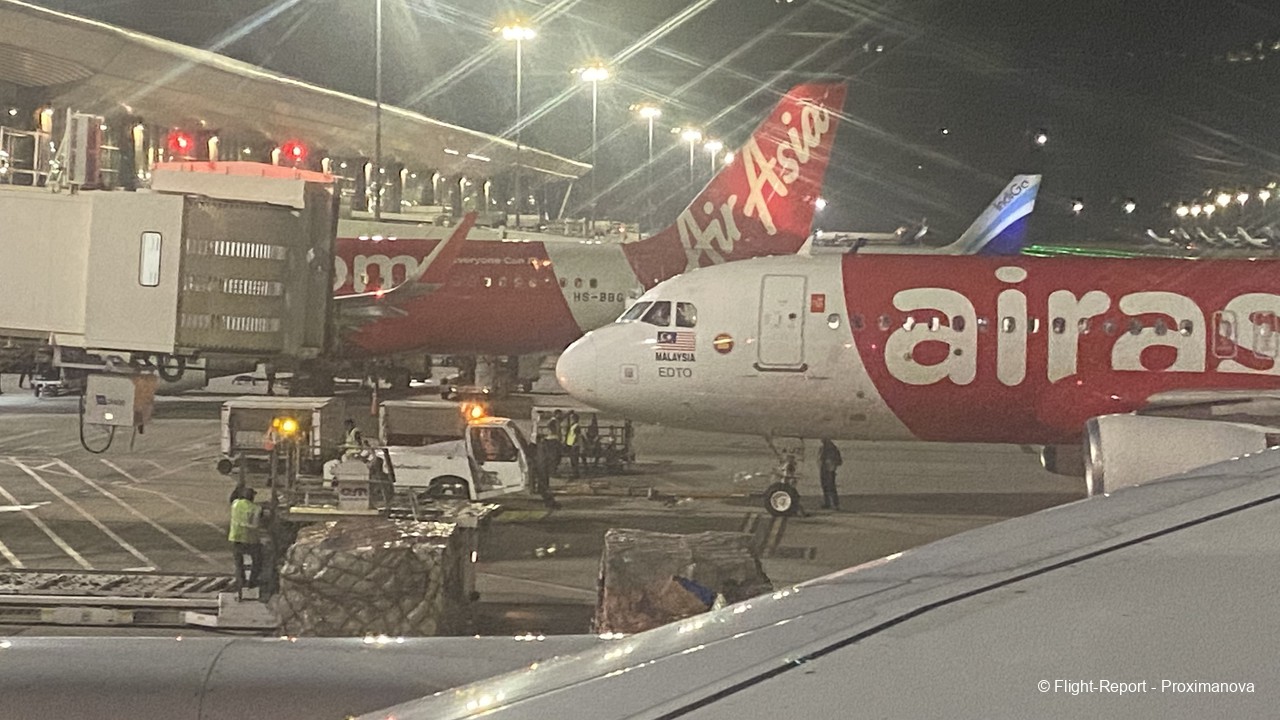
Some IndiGo ATRs and A320s, and AirAsia India A320s, were parked in the distance. I have never flown the latter airline, nor its sister airline Vistara, though I have flown the much bigger Malaysian and Thai AirAsias before. Hopefully I will be able to fly Vistara and AirAsia India before (God forbid!) they are swallowed up by Air India and Air India Express after the latter two were acquired by the Tata Group.
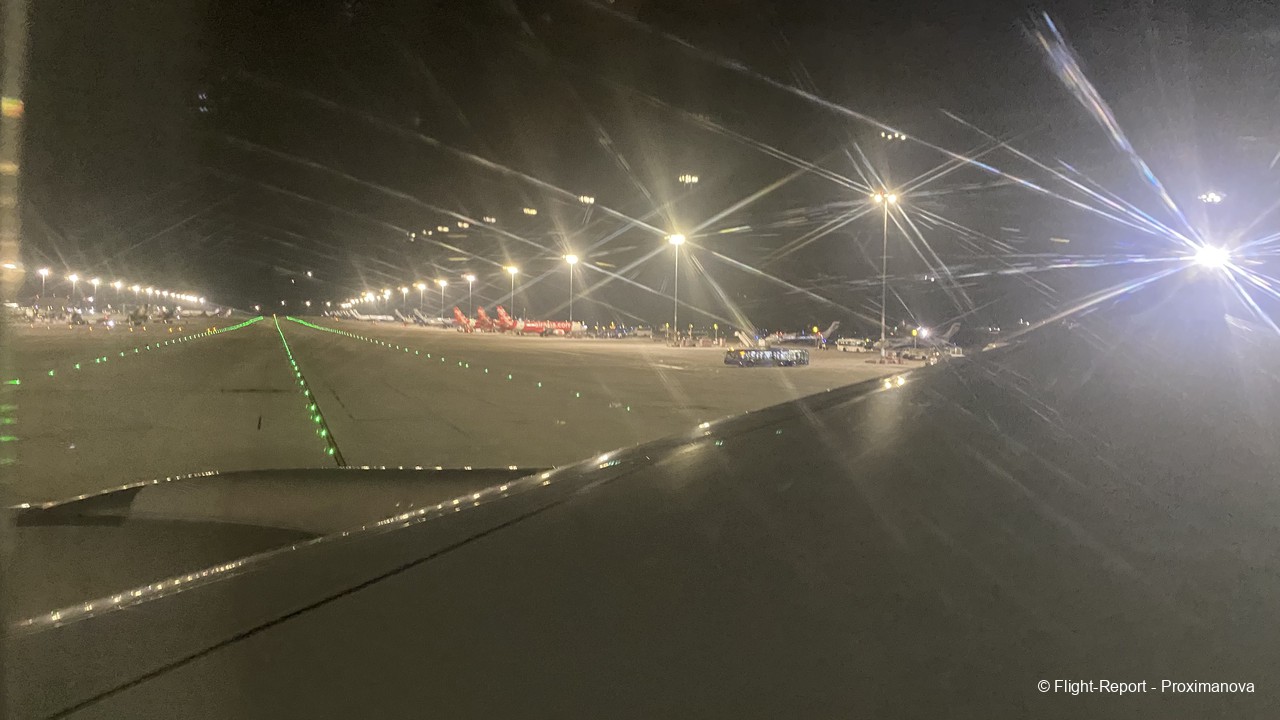
As is the norm in India, people were in a hurry to get out of the plane, though one woman remained sleeping blissfully.
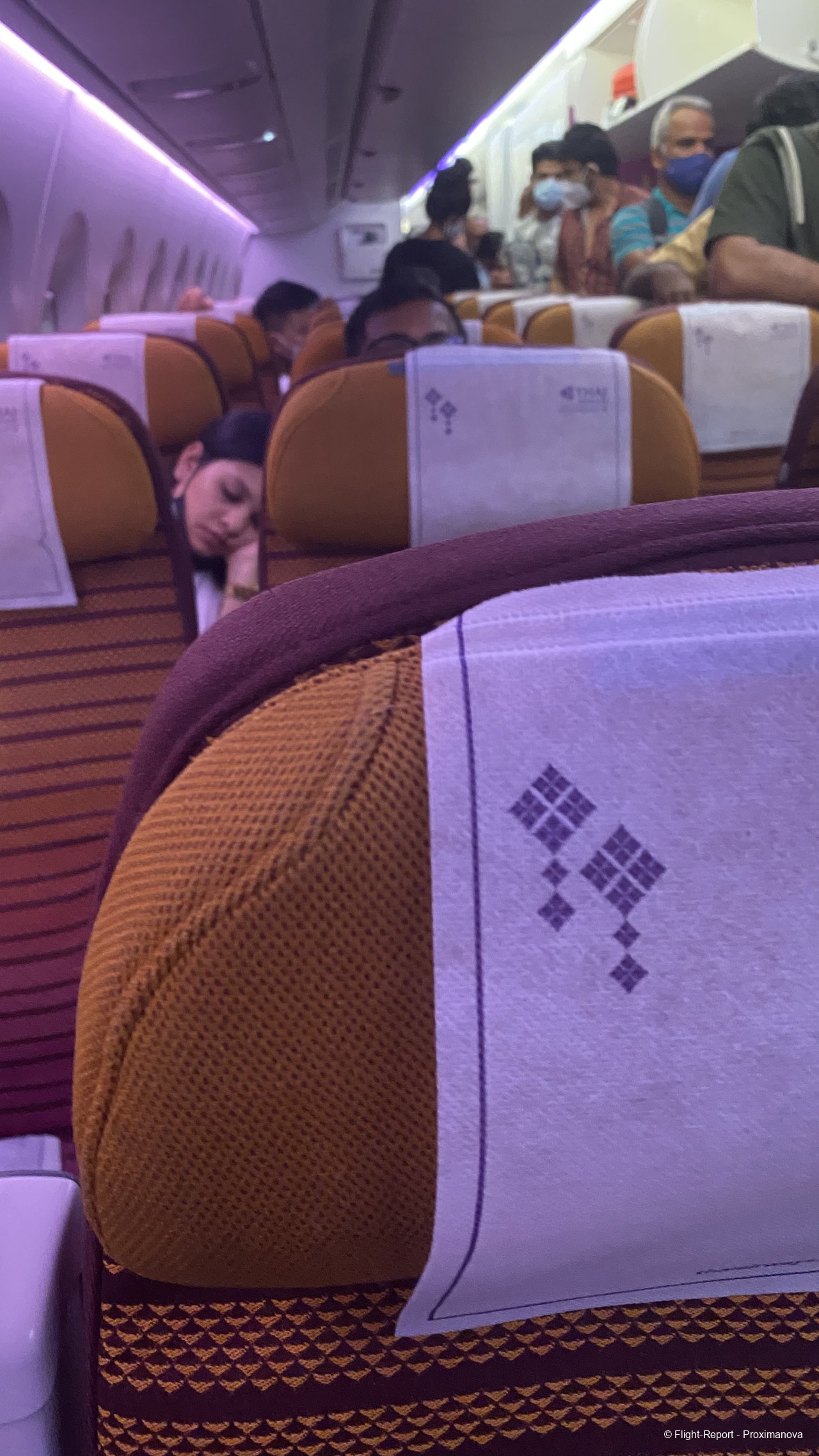
At last I had access to mobile data, and I immediately went to Flightradar24. We had needlessly been circling for an extra half-hour beyond what was required, lengthening the typical three-hour flight.

I continued to keep looking for the little something in the aisle (a pen drive) well after all the other passengers had left, and even called the cabin crew for the same, but they were unable to find it. After five minutes I didn’t want to delay them further for their return flight, so I thanked them for their efforts and left the plane. Later in Chennai I did find it hiding in my bag.
Here is a picture of the cabin upon disembarkation. I thanked the flight attendants and stepped on home soil.
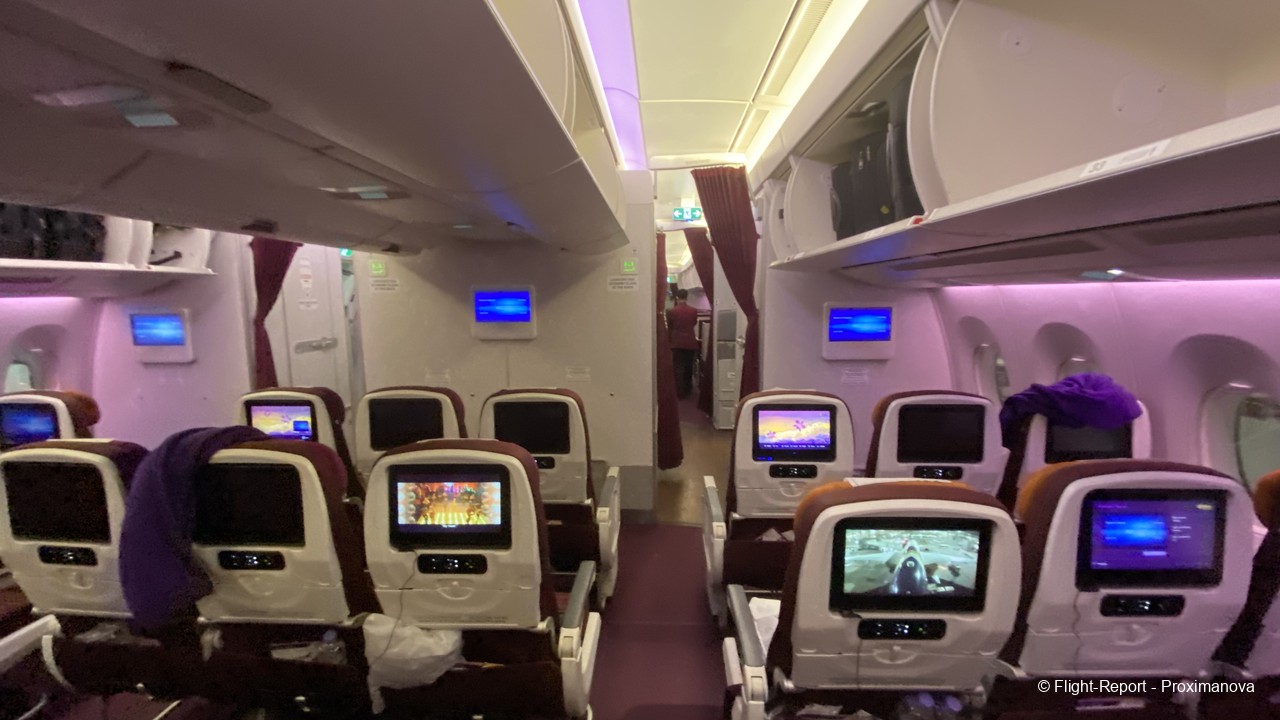
Here is a final shot of HS-THJ. While the windows are invariably better than at BKK, Indian airports strongly frown upon photography, and so I was very nearly shouted at.
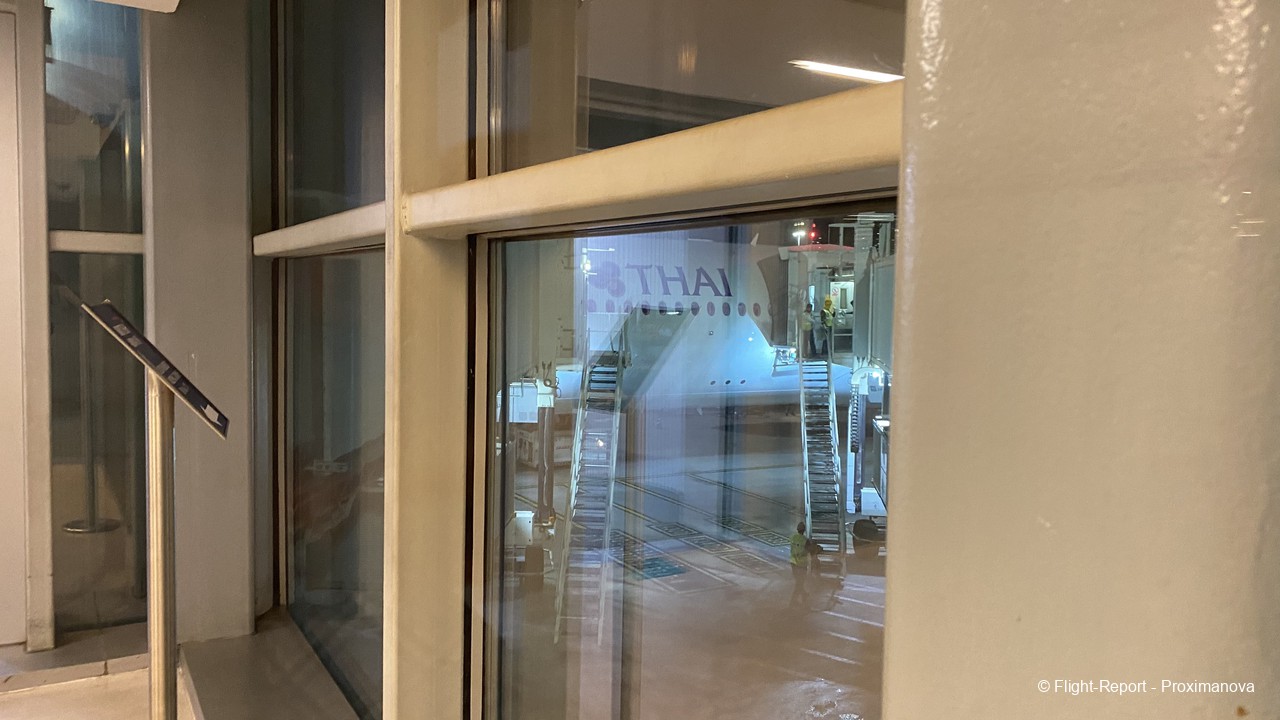
At this point it was nearly midnight, so that seems like a good point to cut off this instalment of my trip report. Details of the immigration and baggage claim experience will continue in my next instalment.




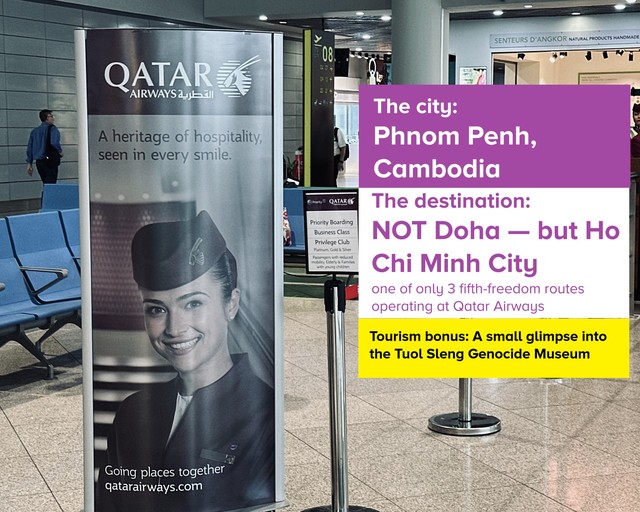
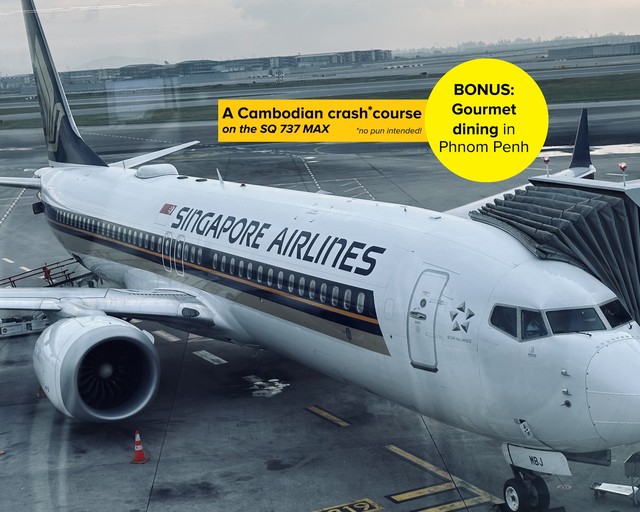

Nice report! Love the aesthetics of the Thai A350 cabin--one thing TG always do well is cabin design.
The catering is (unsurprisingly) impressive for a 3h night flight. Great to get a full hot meal on a flight leaving so close to midnight. In the US, even Business class doesn't get a full hot meal that late at night usually.
Thanks for sharing!
Bonjour Kévin,
Always a pleasure to read your insights on various cabin products. Here I’m especially glad to have gone out of the way to fly Thai Airways’ A350 AND experience both BKK and BLR’s facilities. In retrospect, it was very much worth the effort, and a wonderful use of the TG voucher.
East Asian and Middle Eastern carriers are streets ahead of the rest of the world when it comes to inflight service. Where (Latin) American and European airlines get away with the bare minimum of seating and service, it’s mighty impressive what the likes of a QR, NH, KE or SQ will do to ensure that their guests are well taken care of on even the shortest of hops.
Especially for TG, it’s impressive that they have managed to showcase Thailand’s colourful culture to the world even amidst their financial struggles. But there remain a few questionable decisions, like retiring A330-300s and not retiring 777-200ERs, the latter of which made me suffer a lot on a later flight. Still, the fact that they serve so many European and Asia-Pacific destinations even with a sharply reduced fleet is commendable. I can only wish them well — and hope that those 772s are thrown out as soon as possible.
As for BLR, it is really a trend-setter for other airports in India and the world, and a shining example in how to maintain airports. BKK is almost there, with its array of shops, but its décor is not quite to the level of SIN and BLR.
Till next time, merci beaucoup et au revoir!